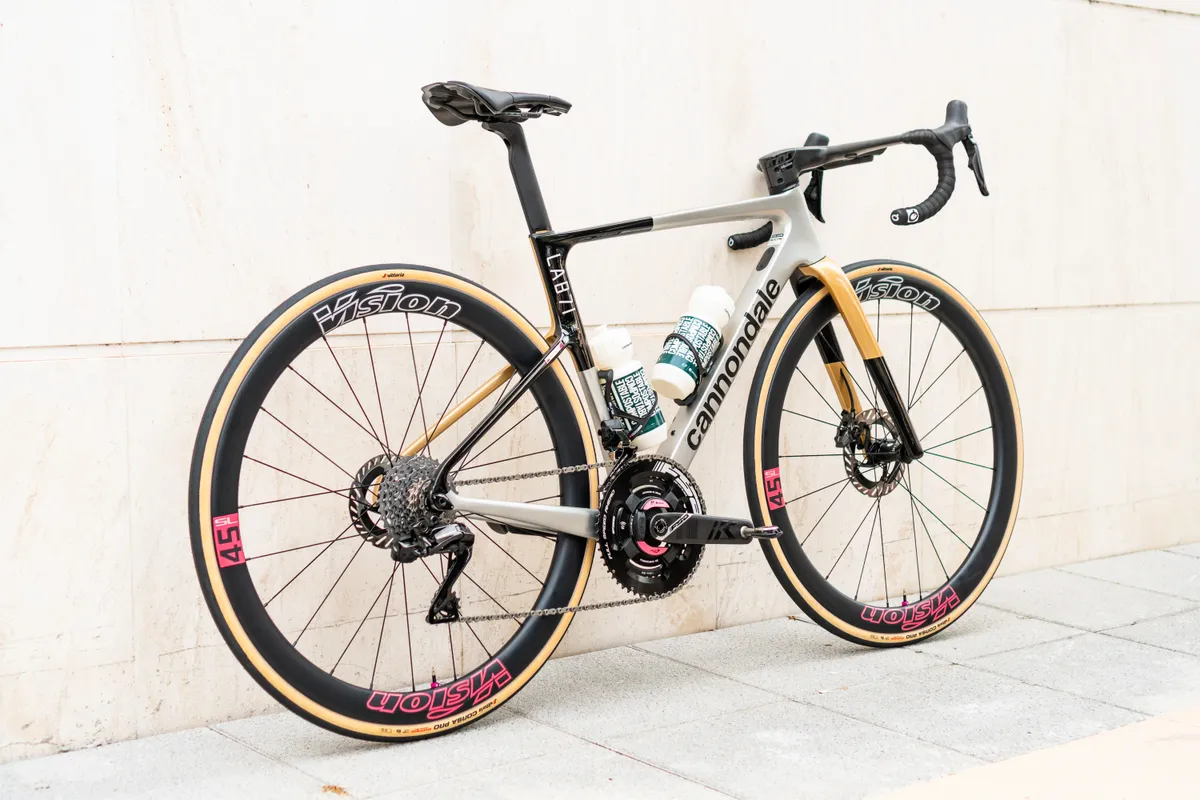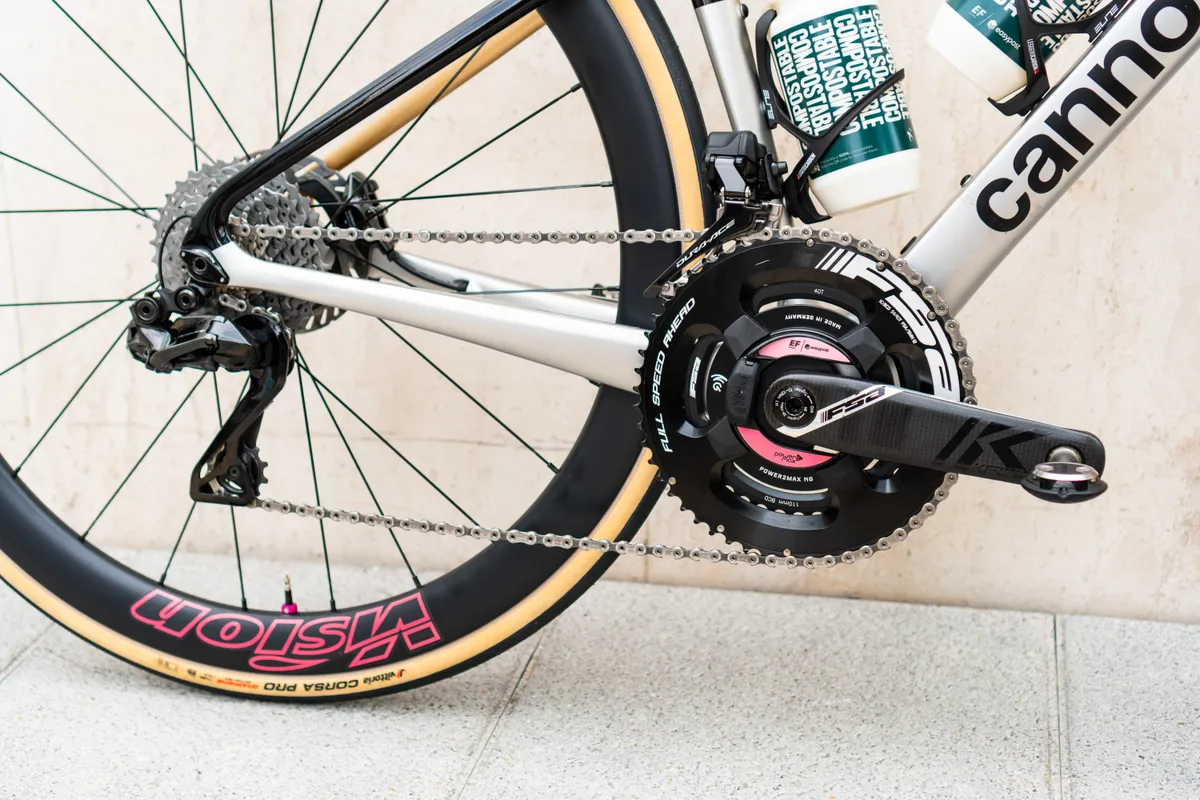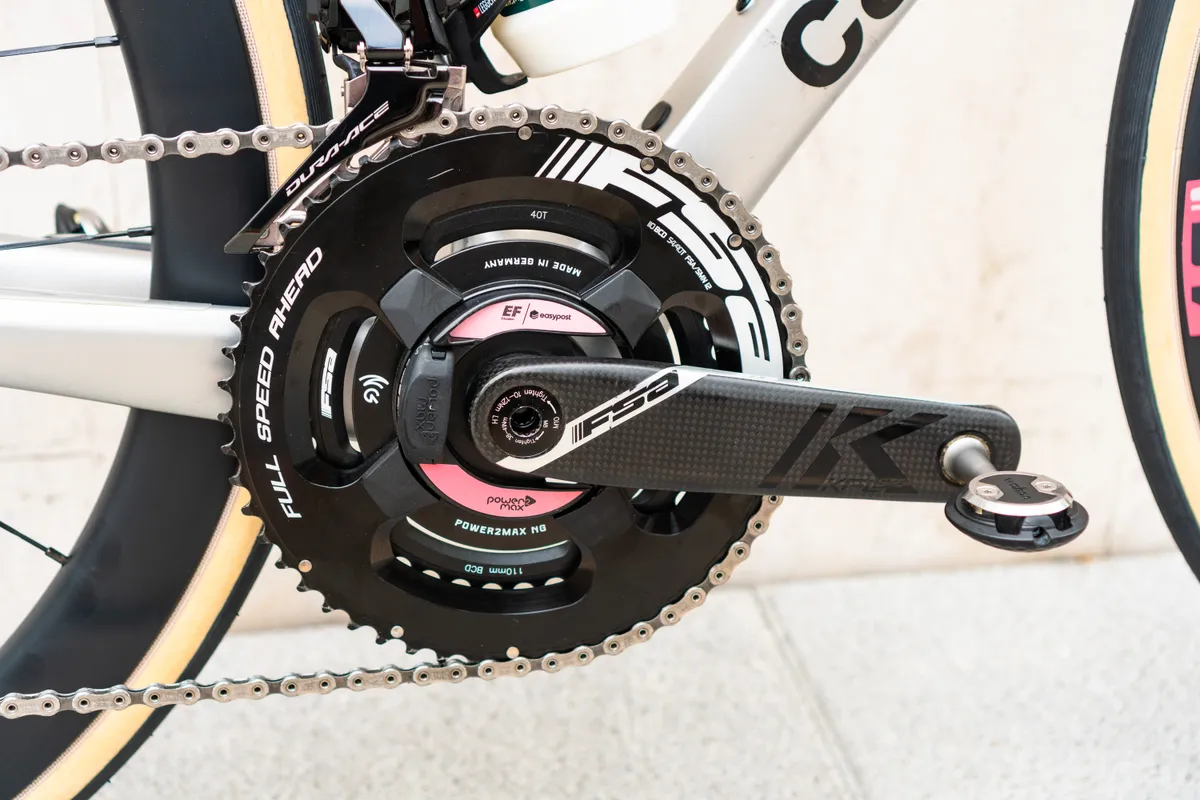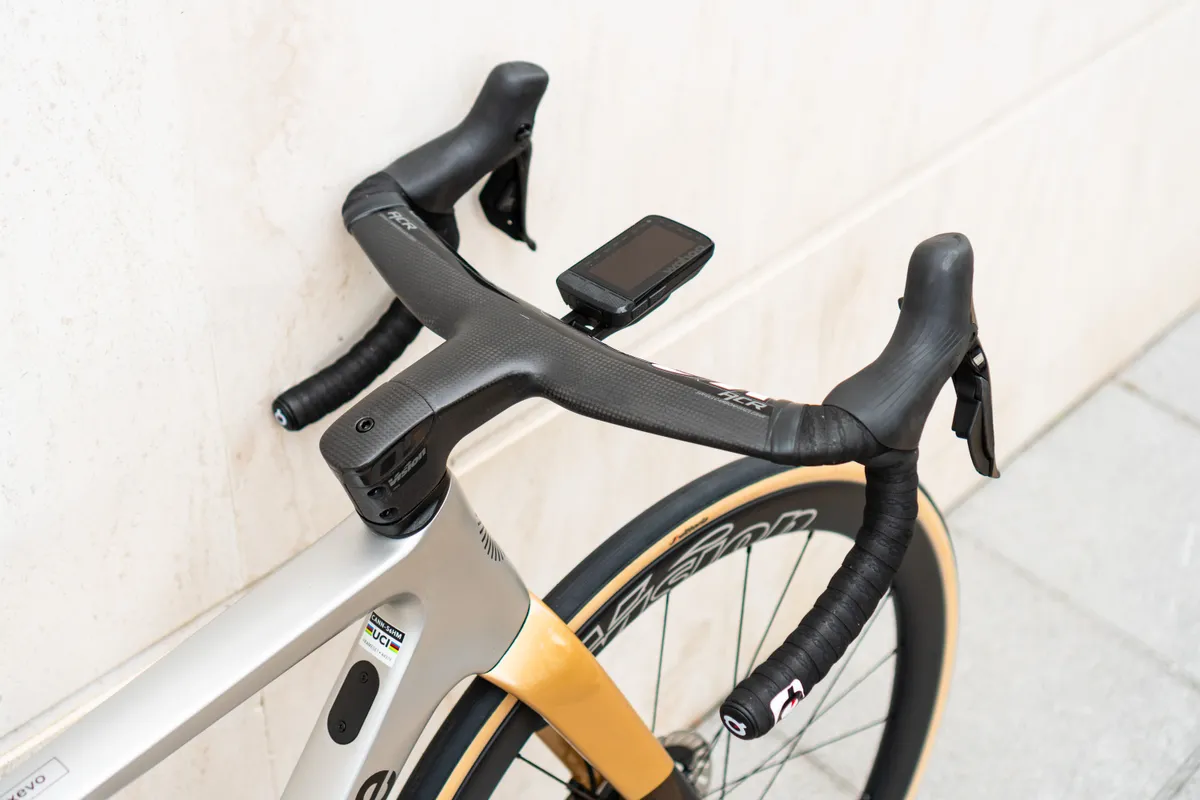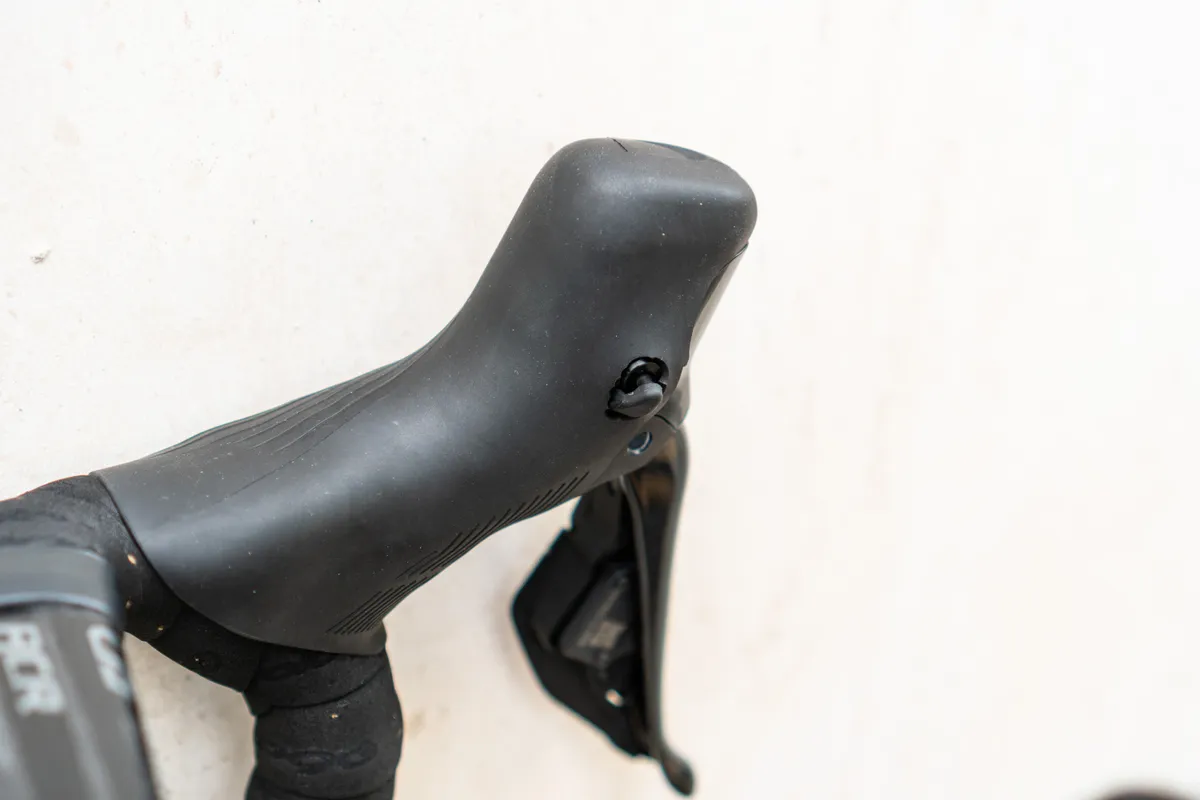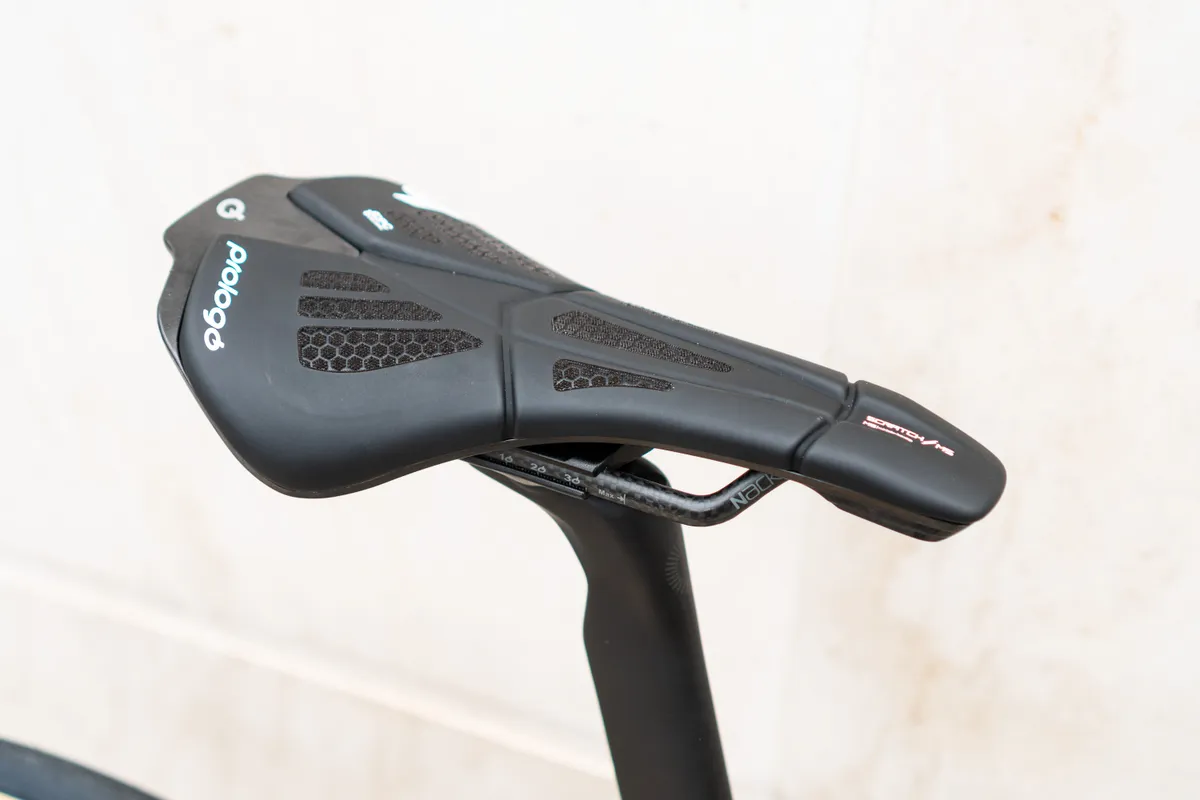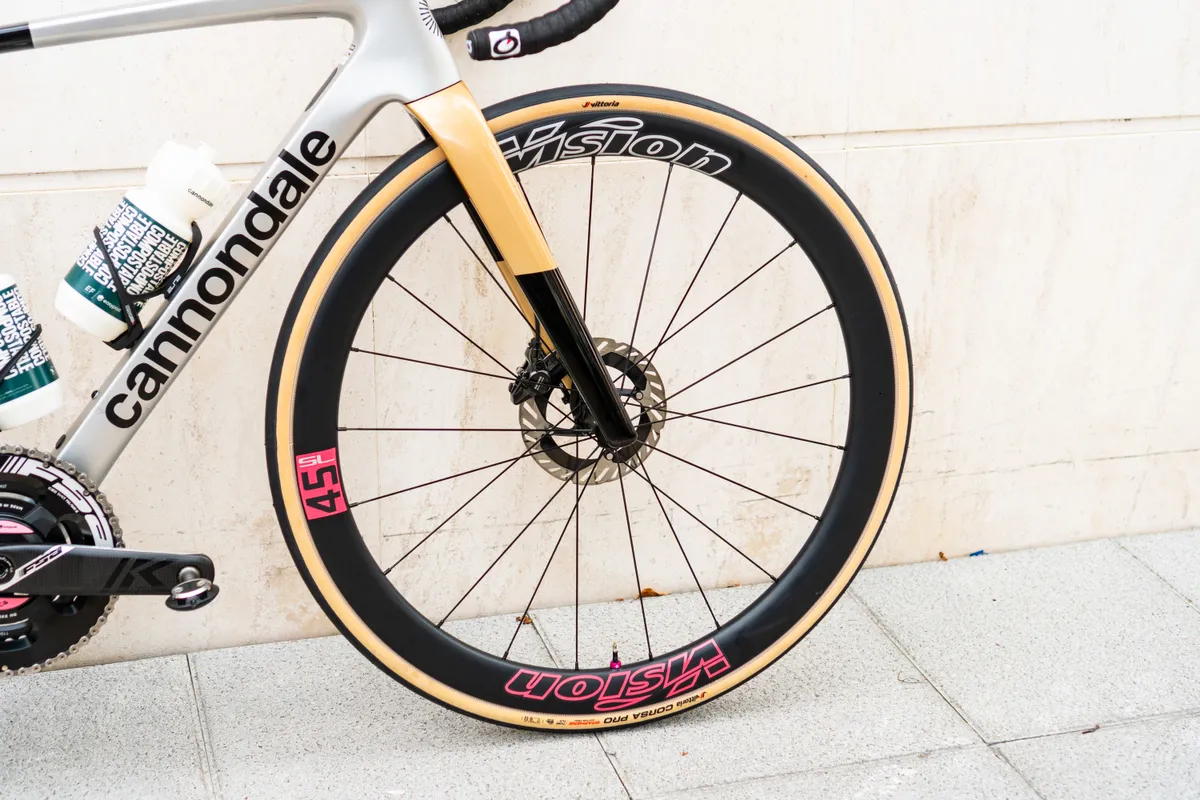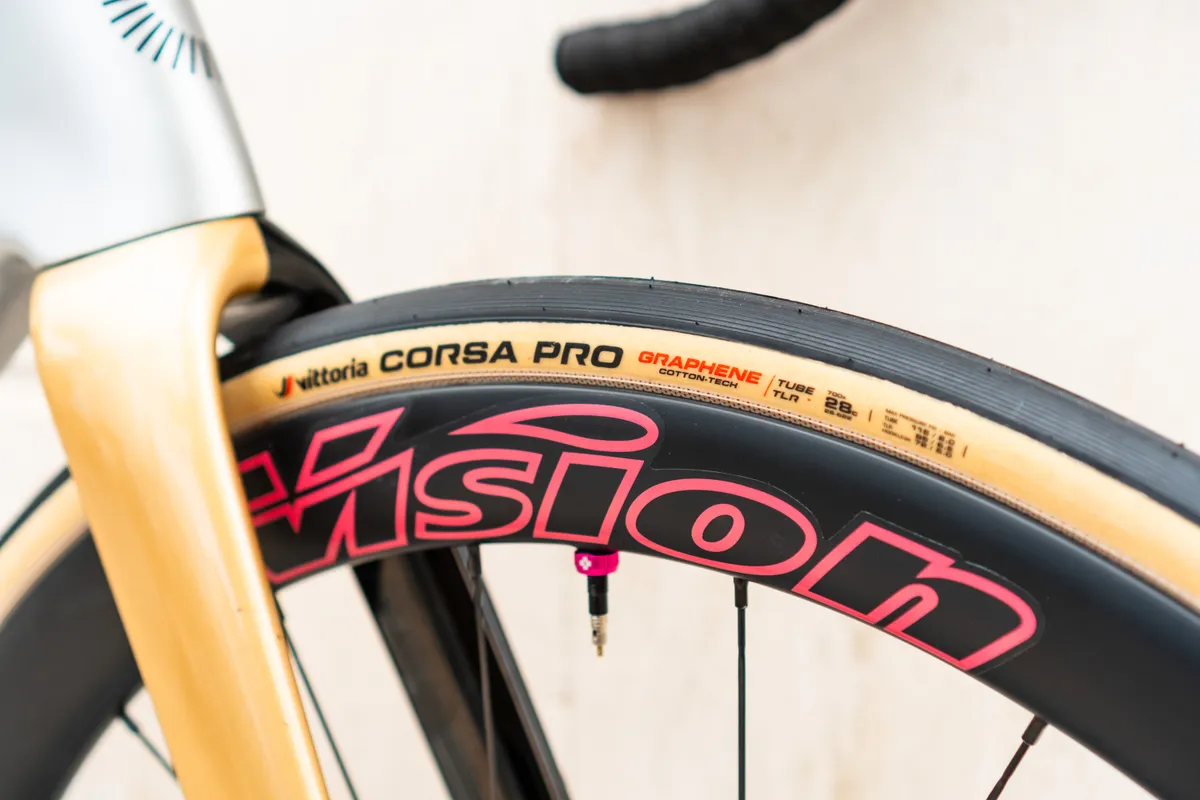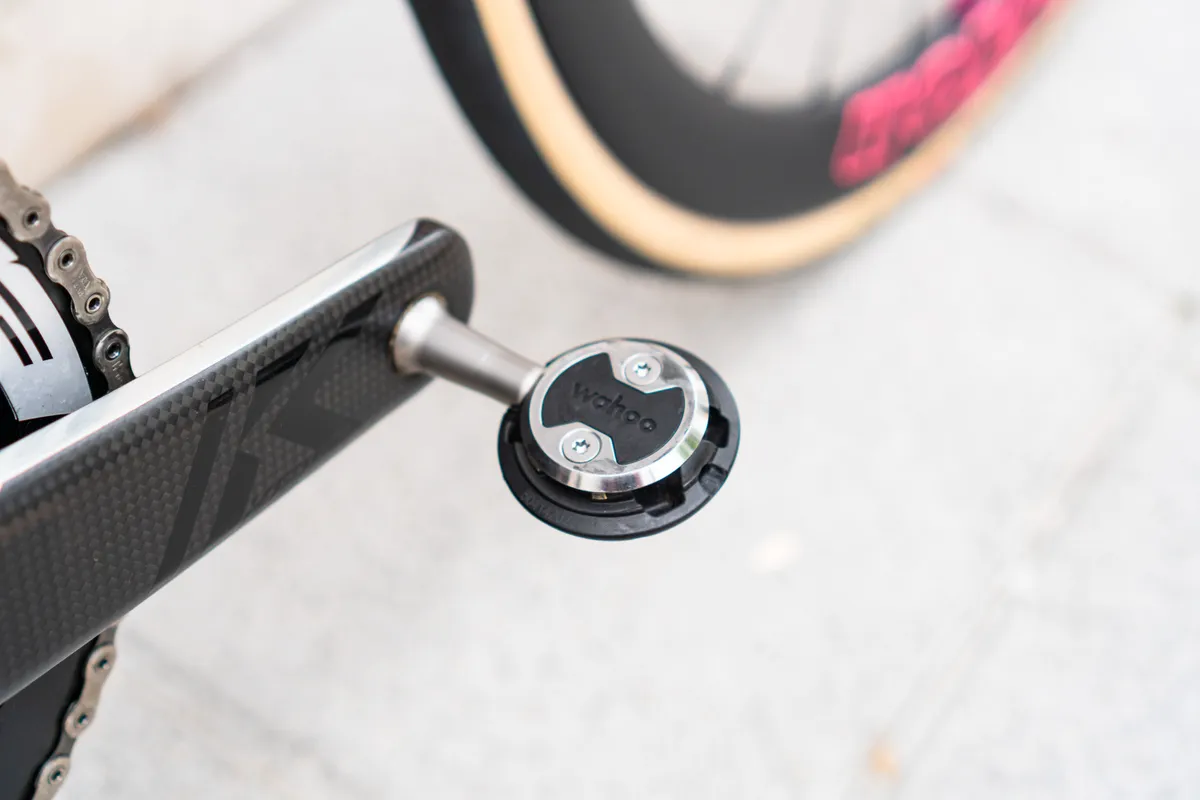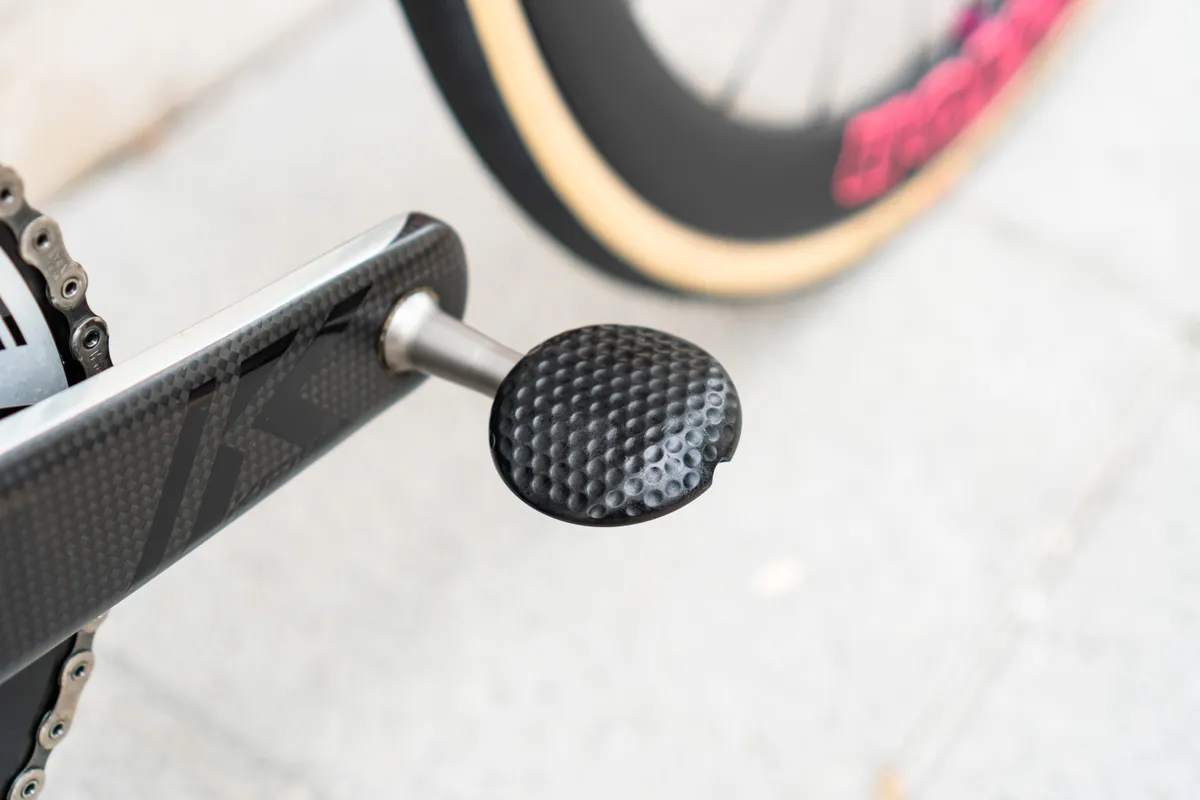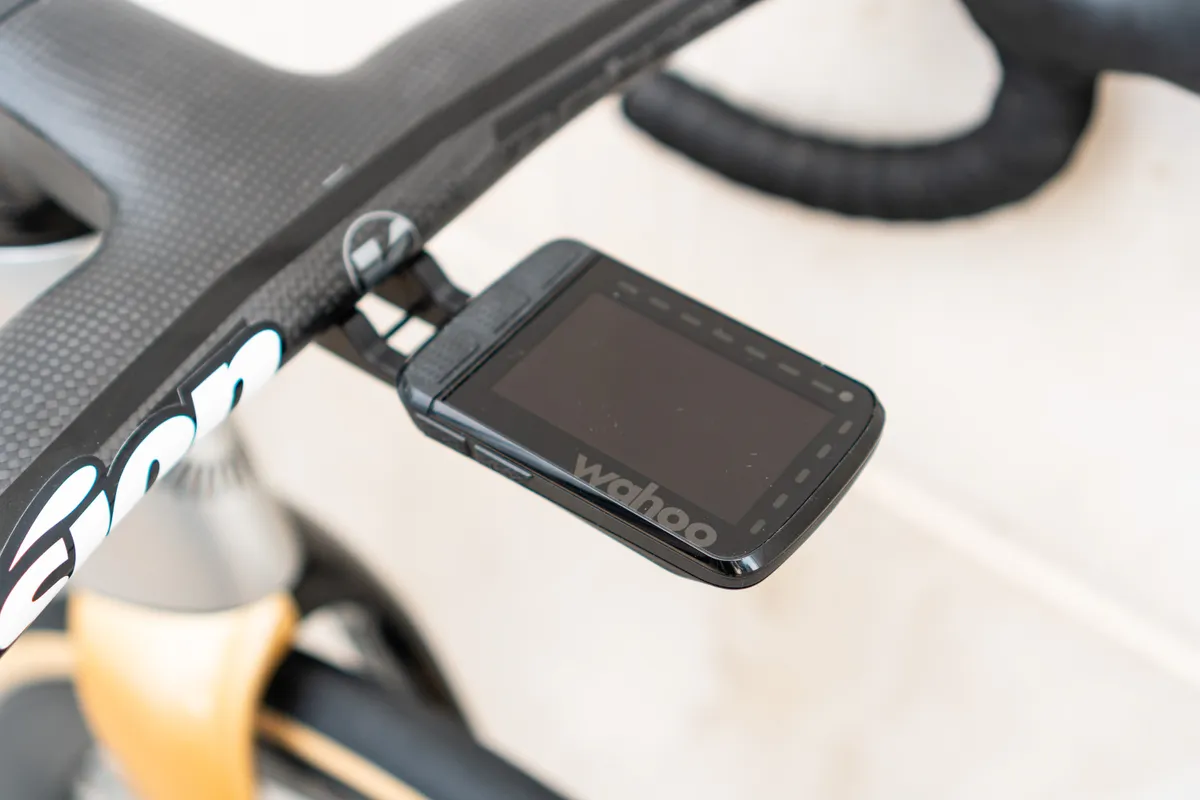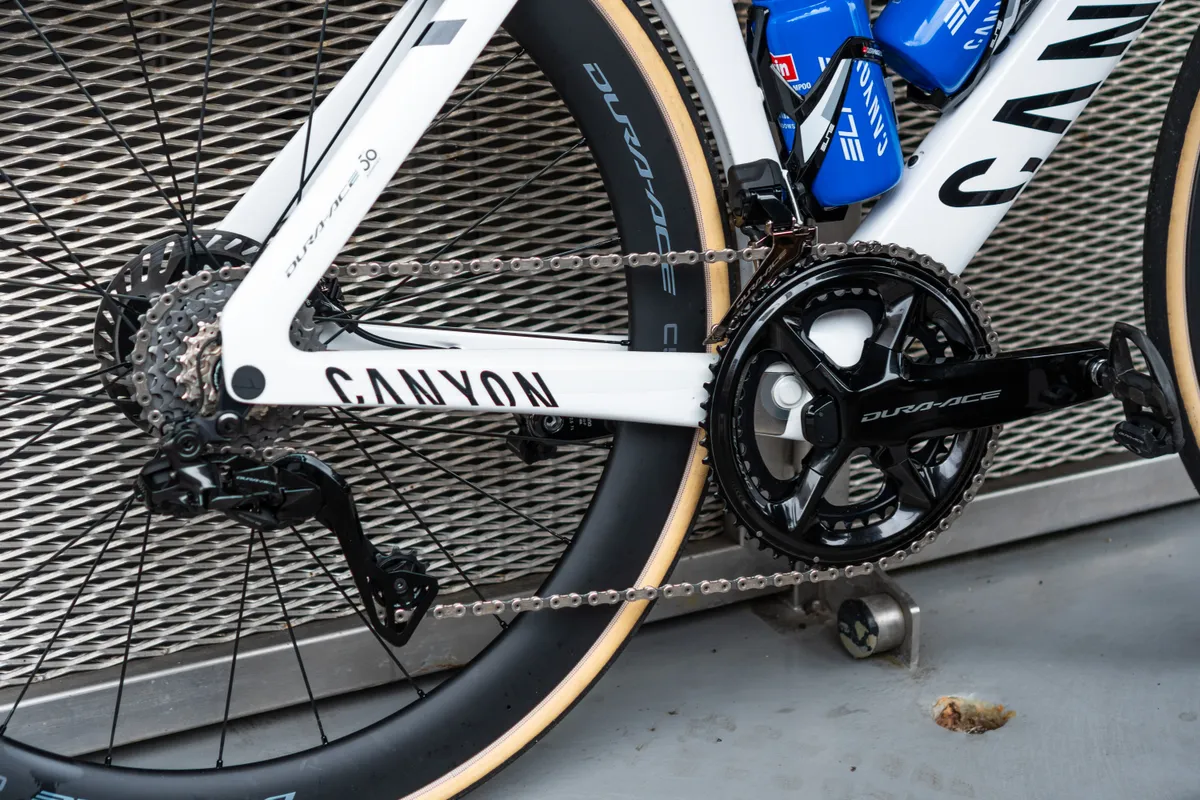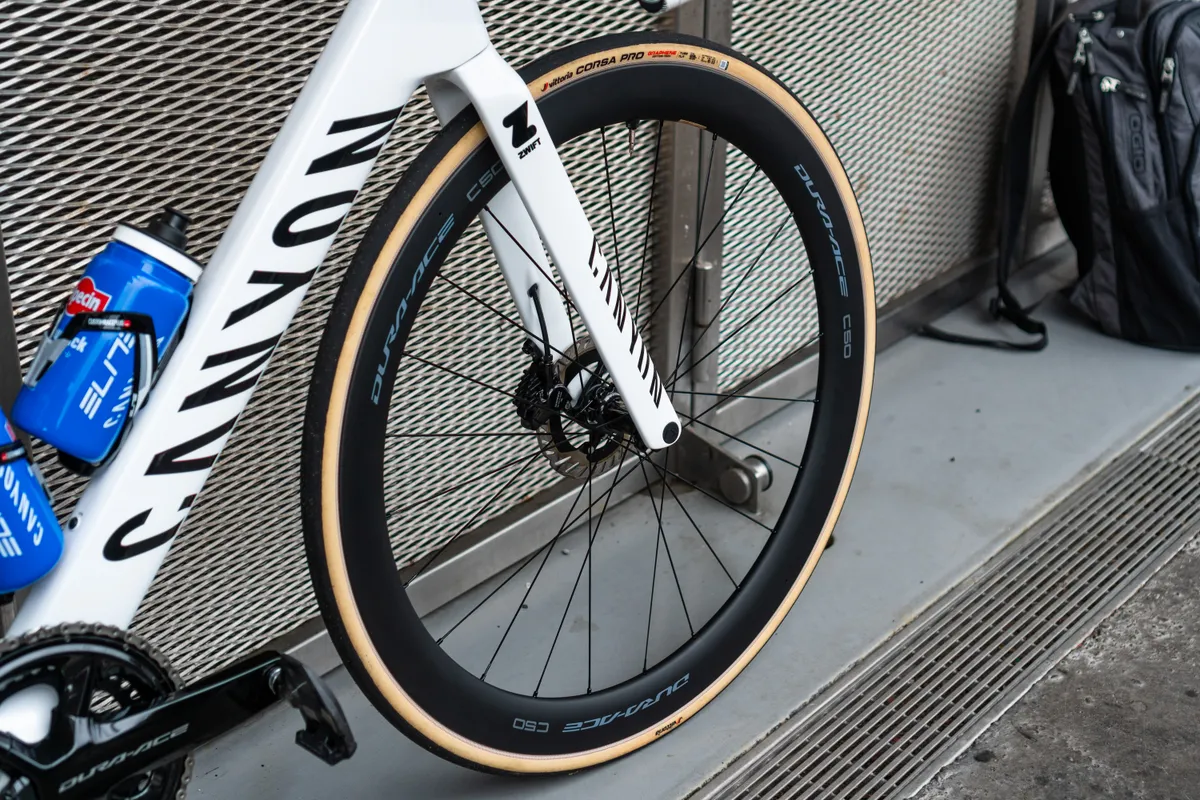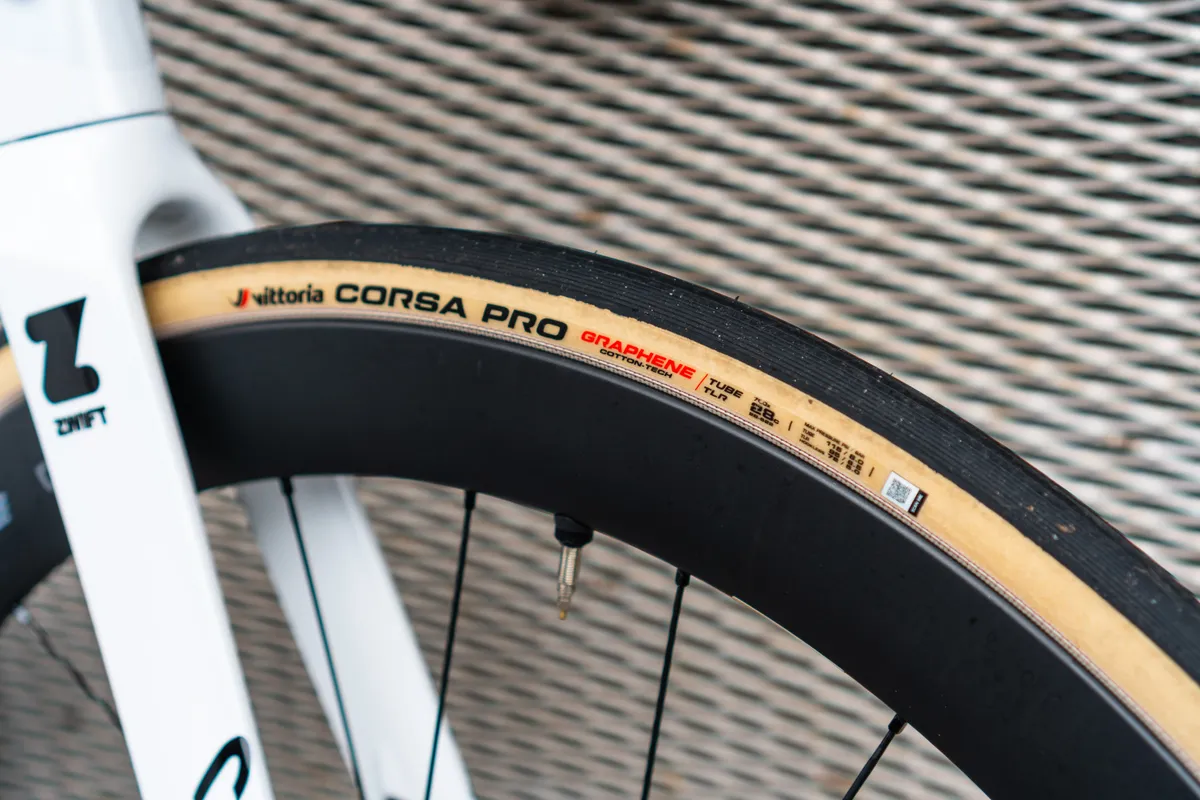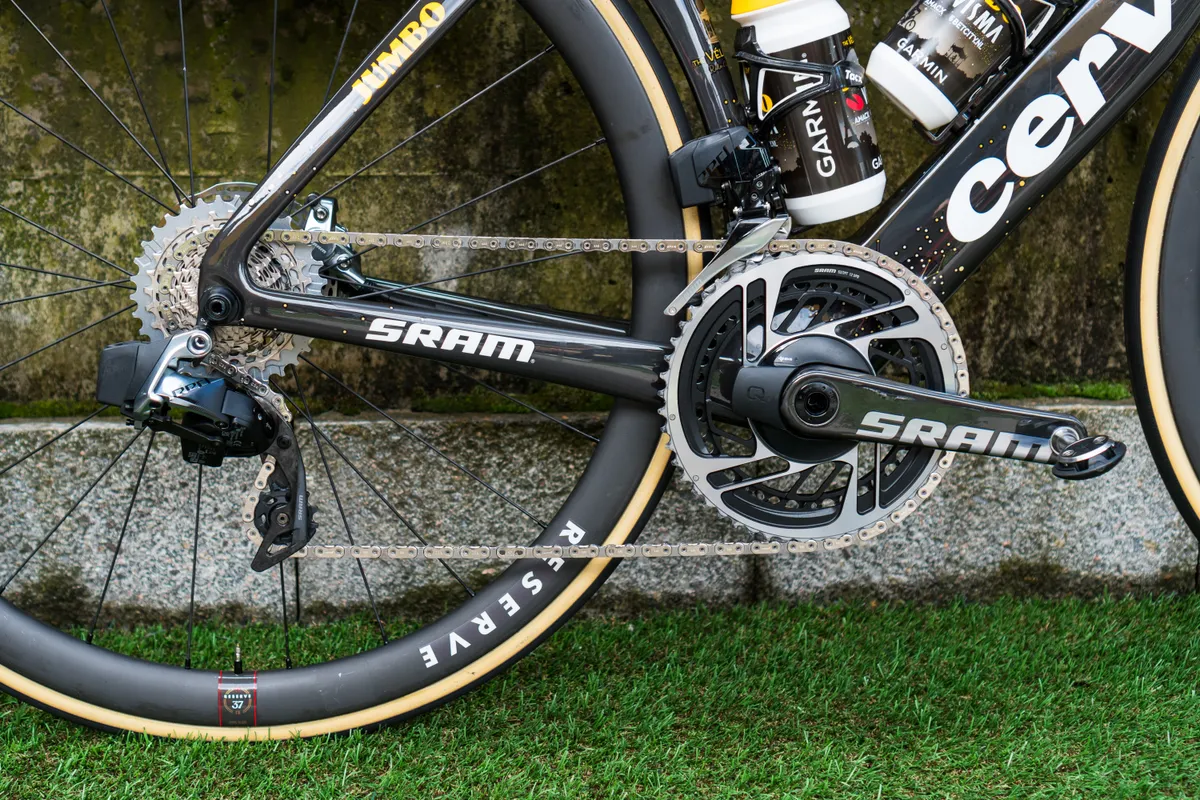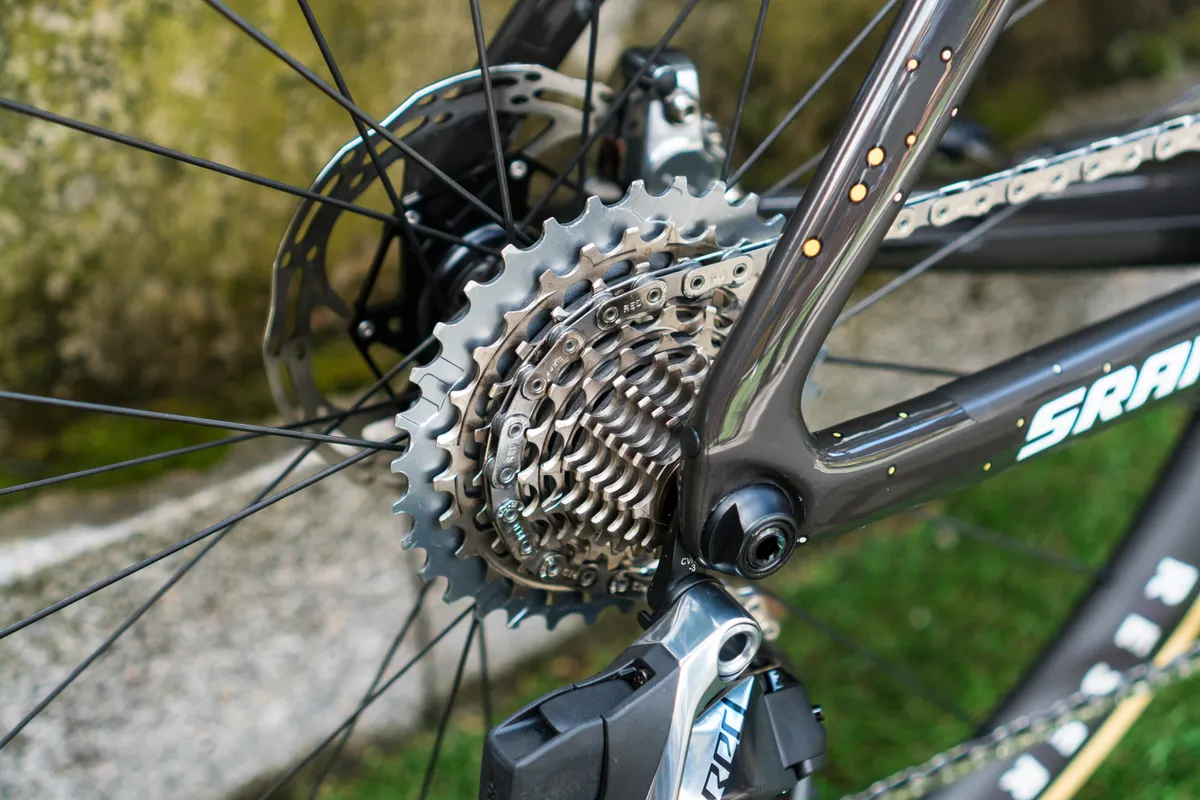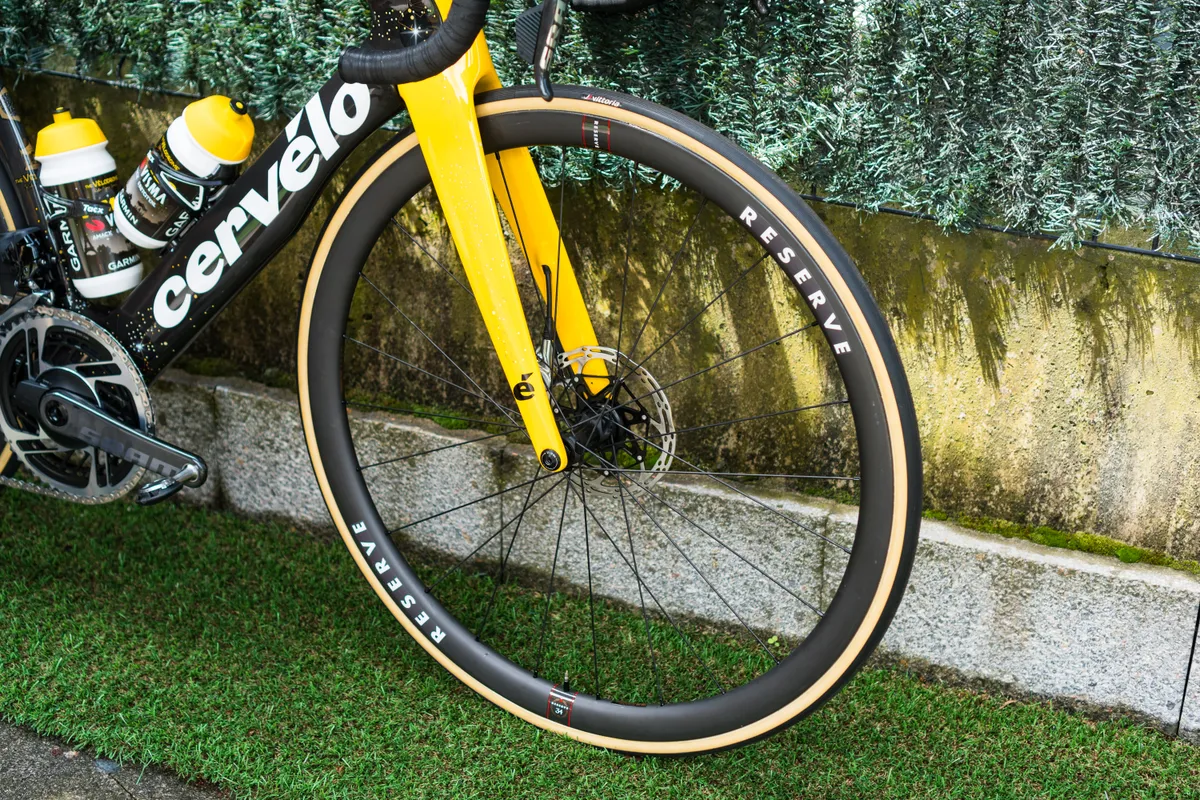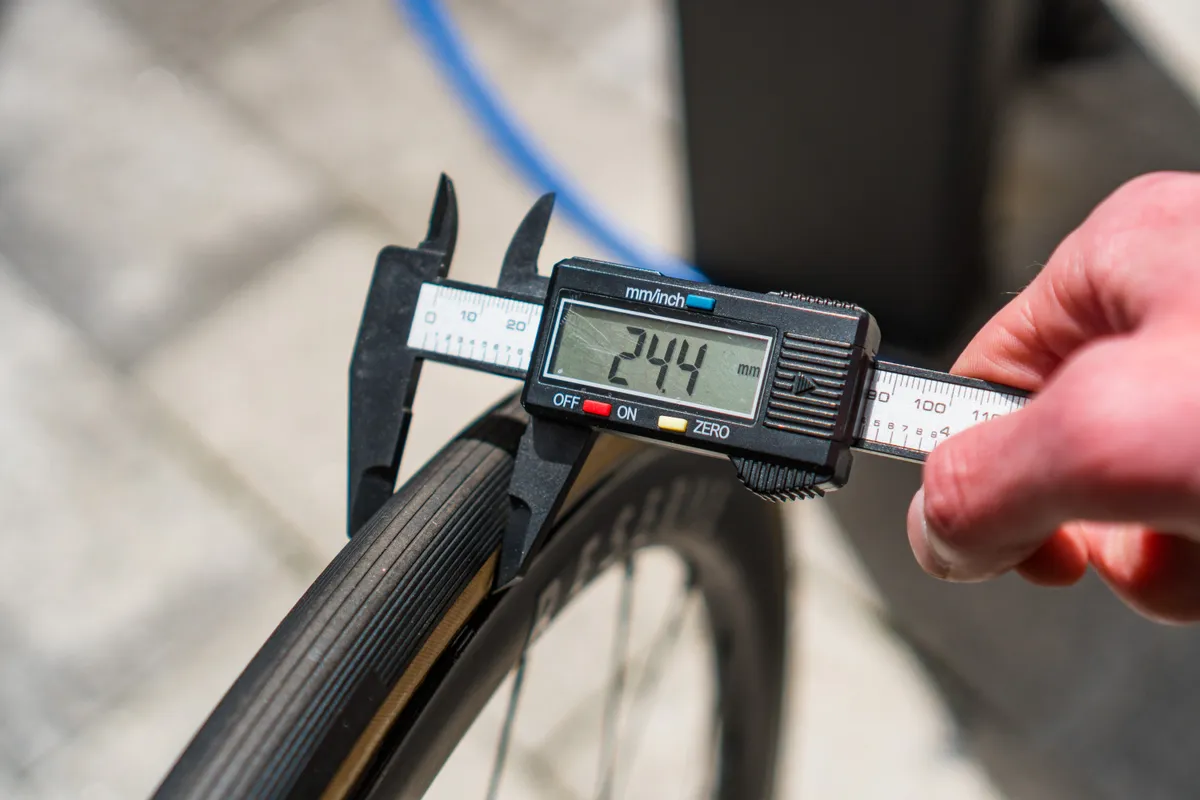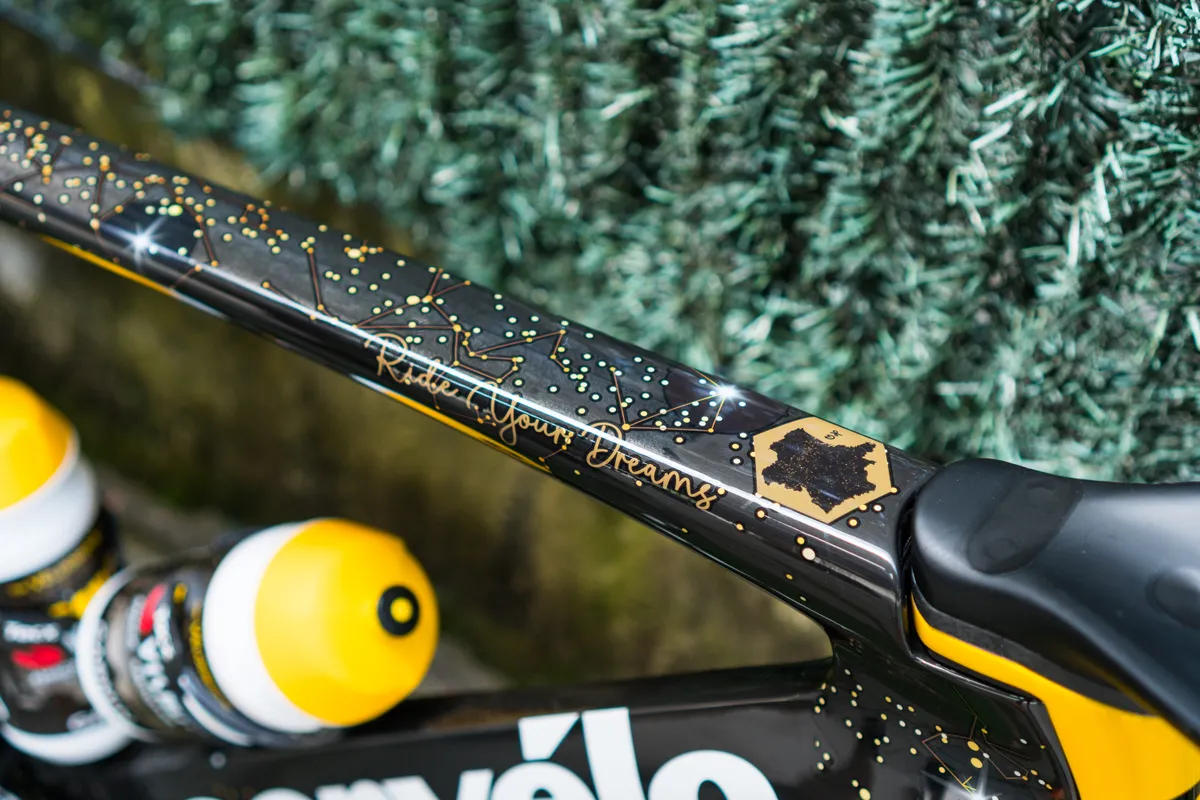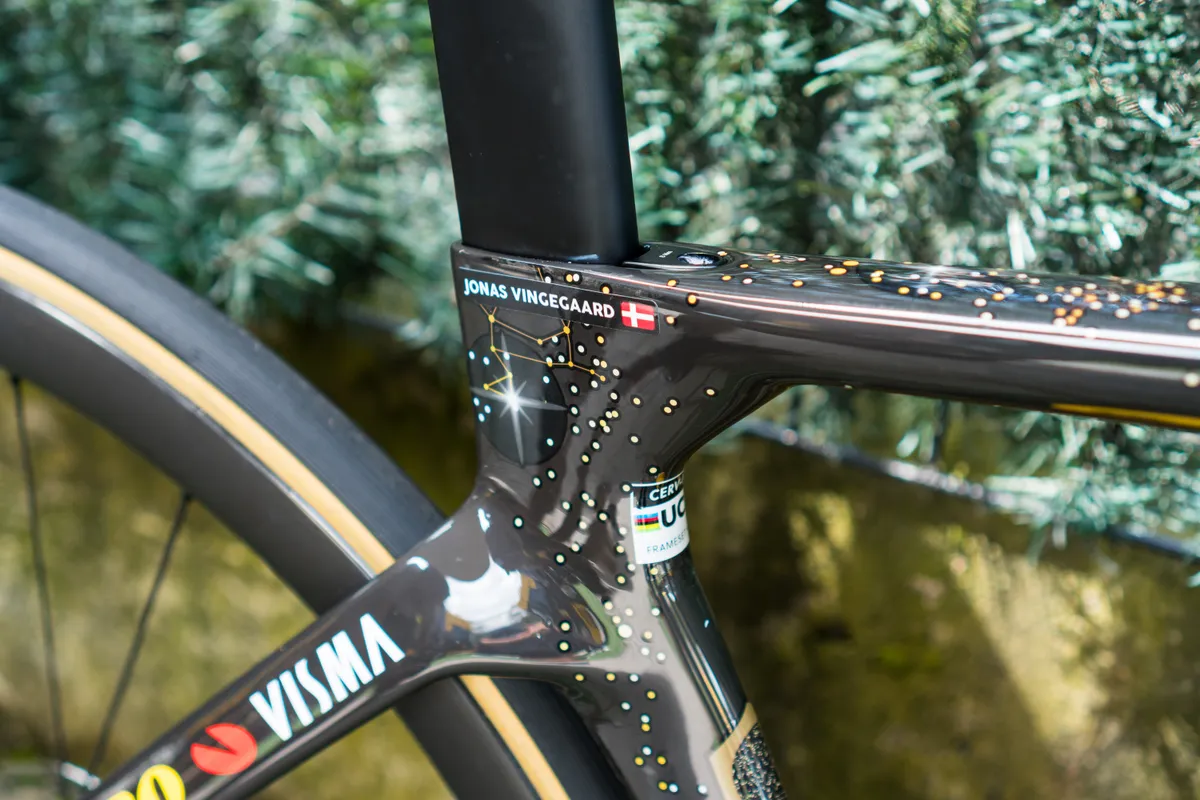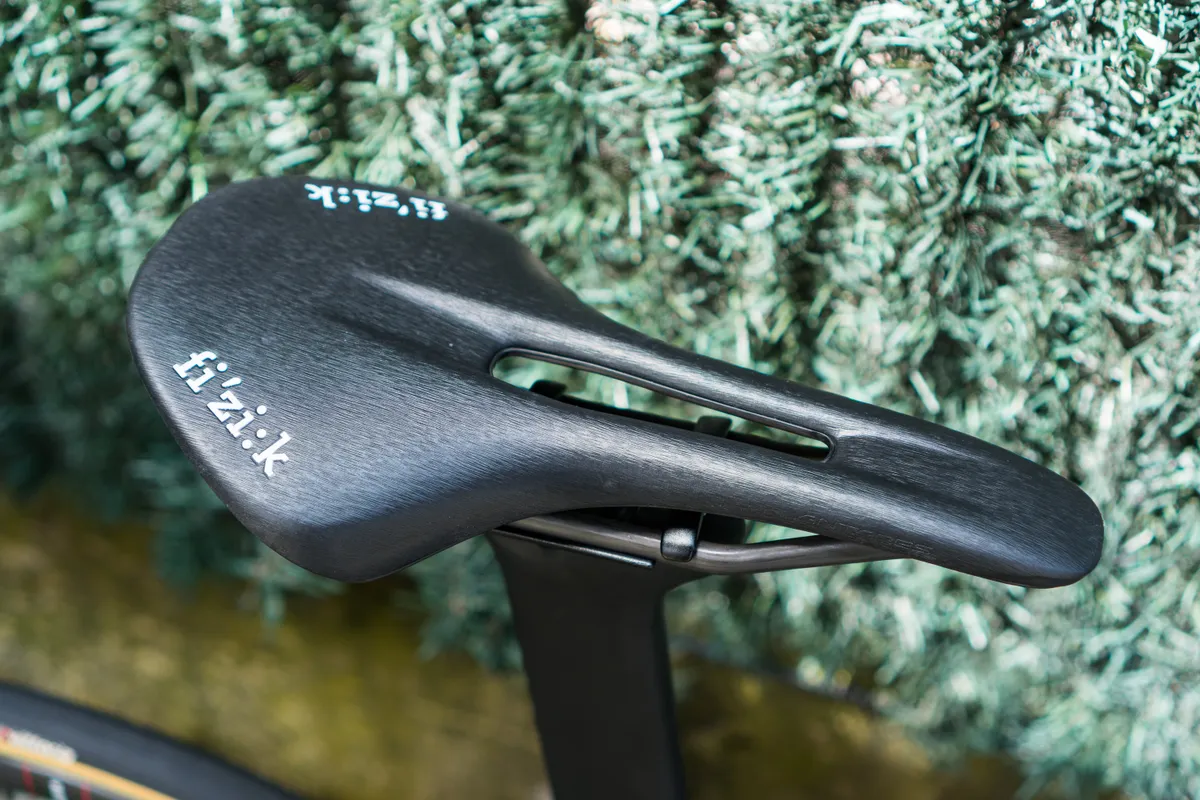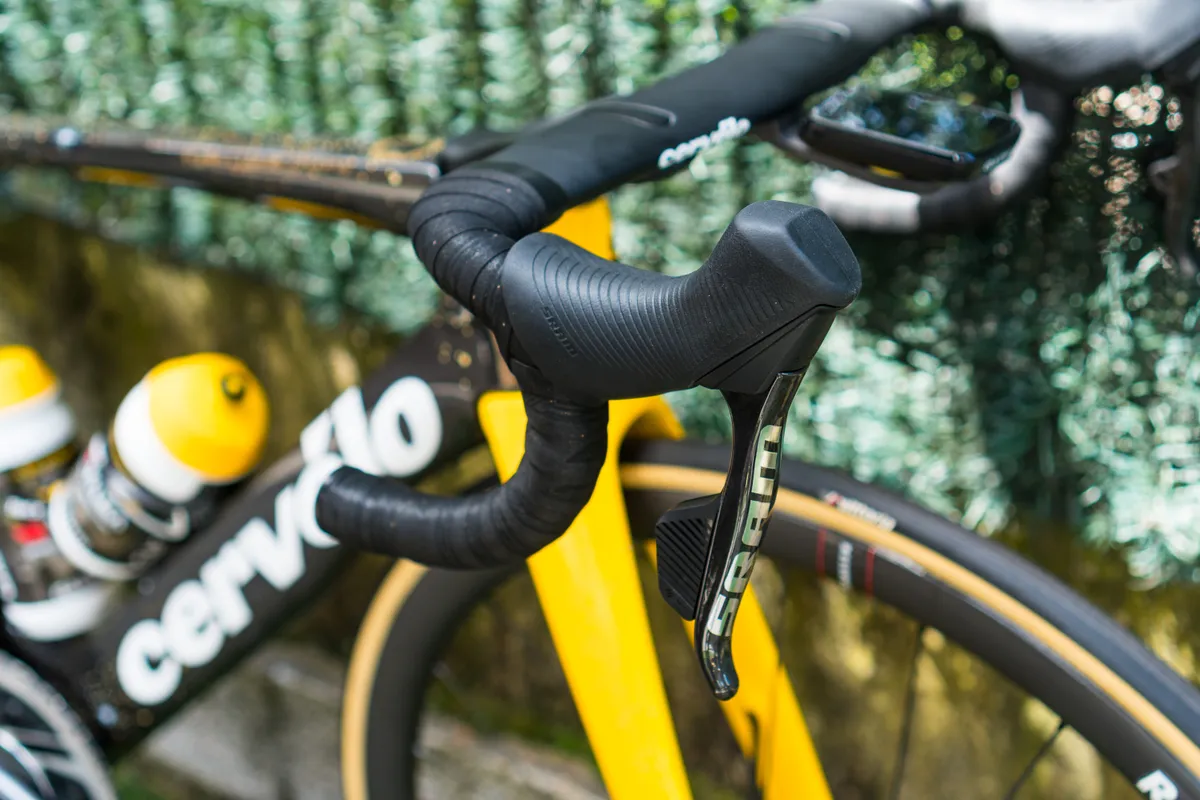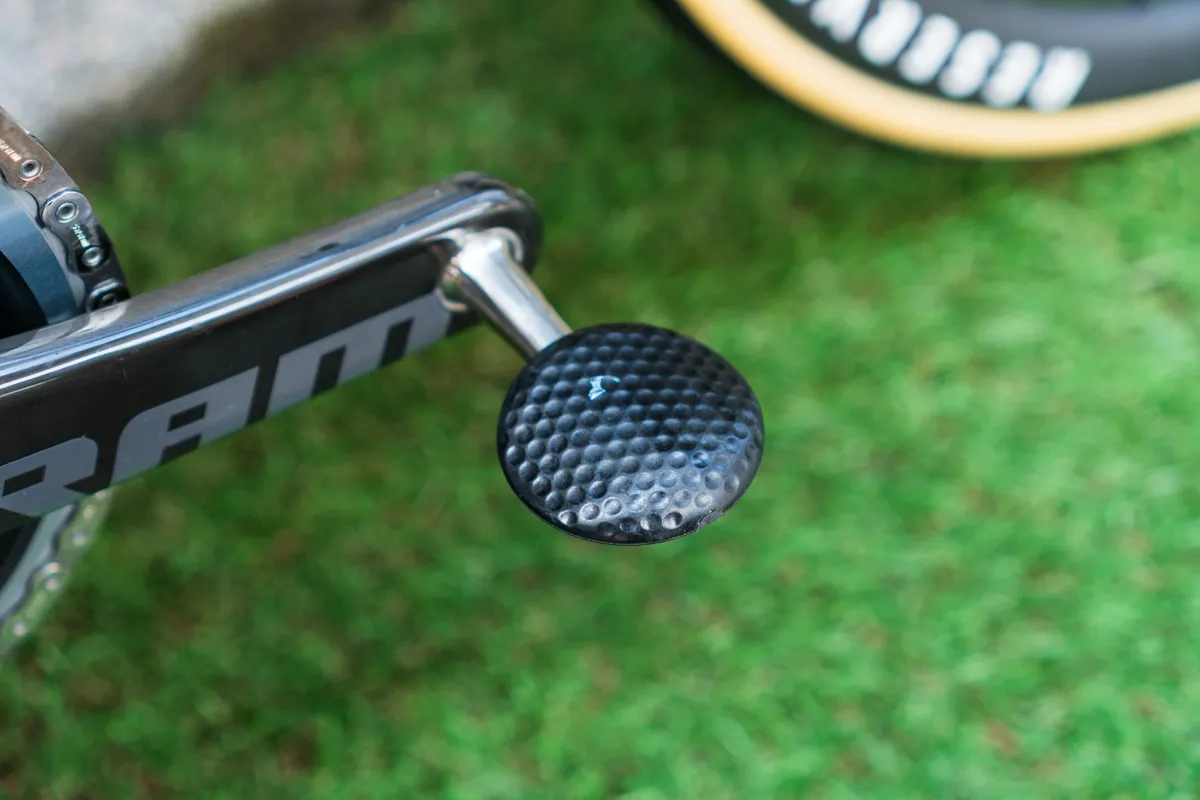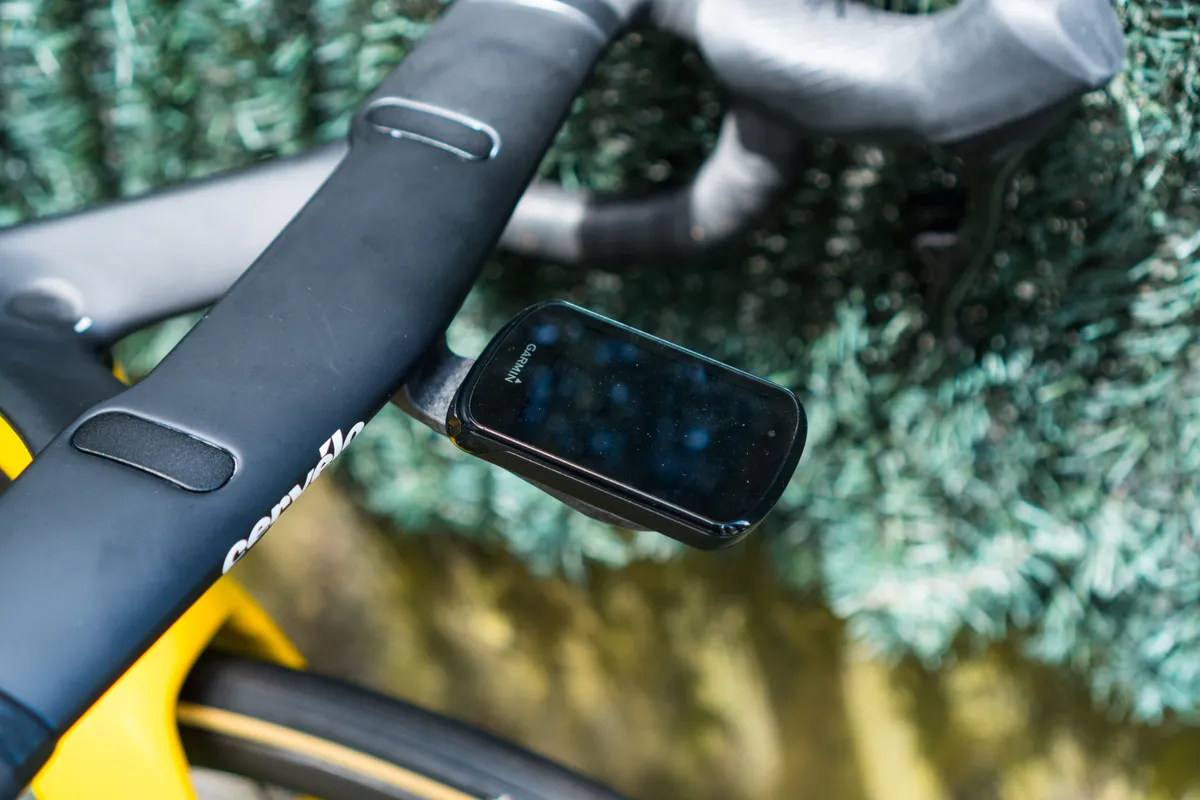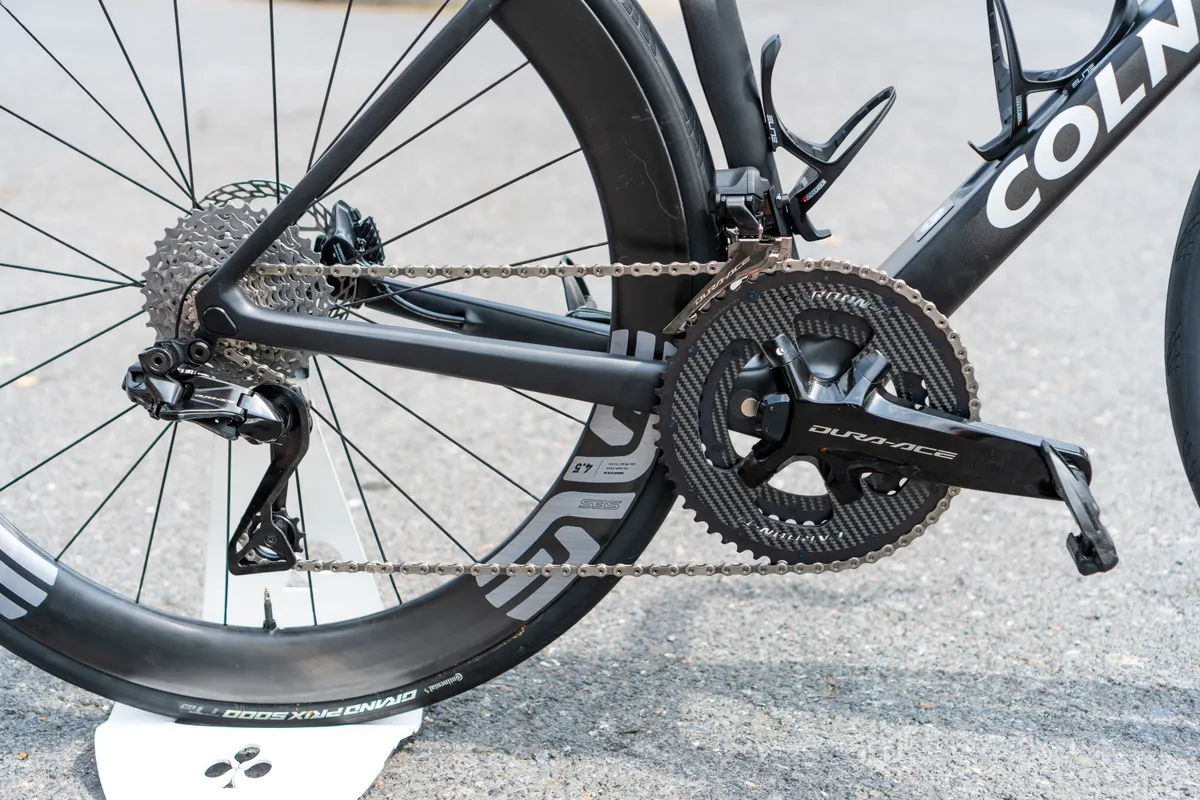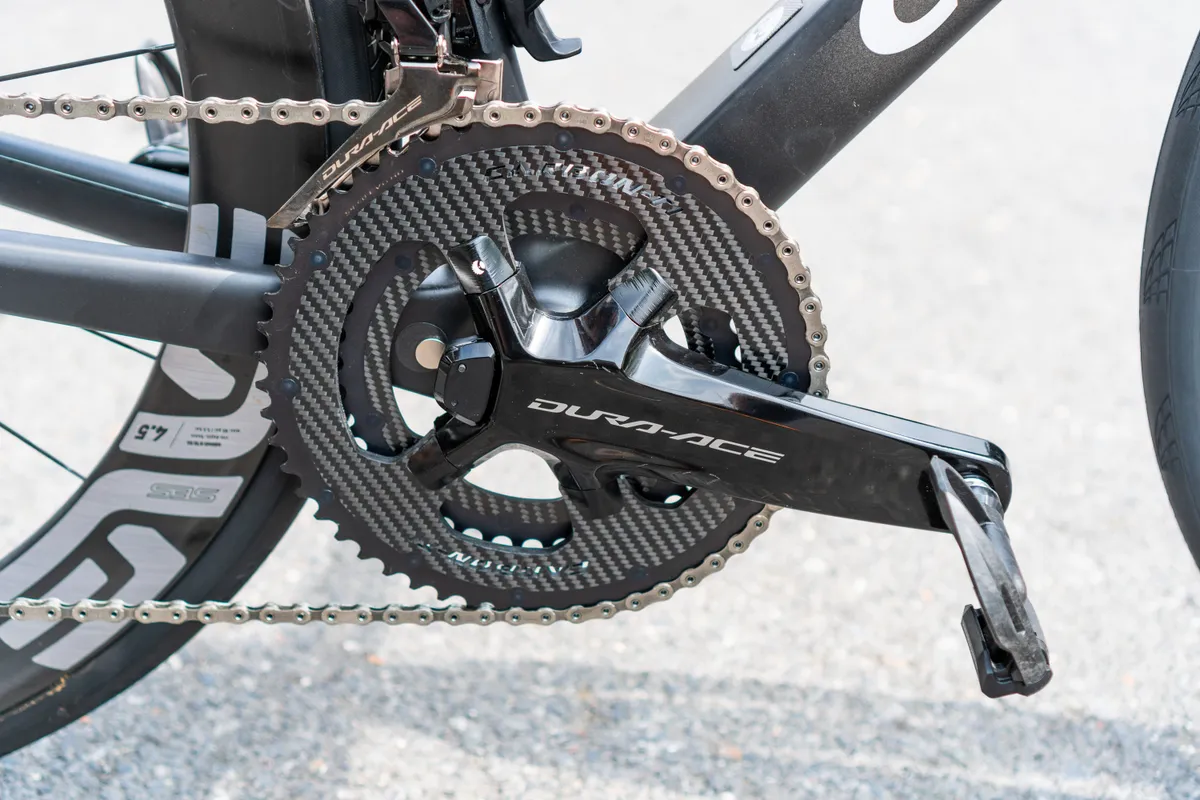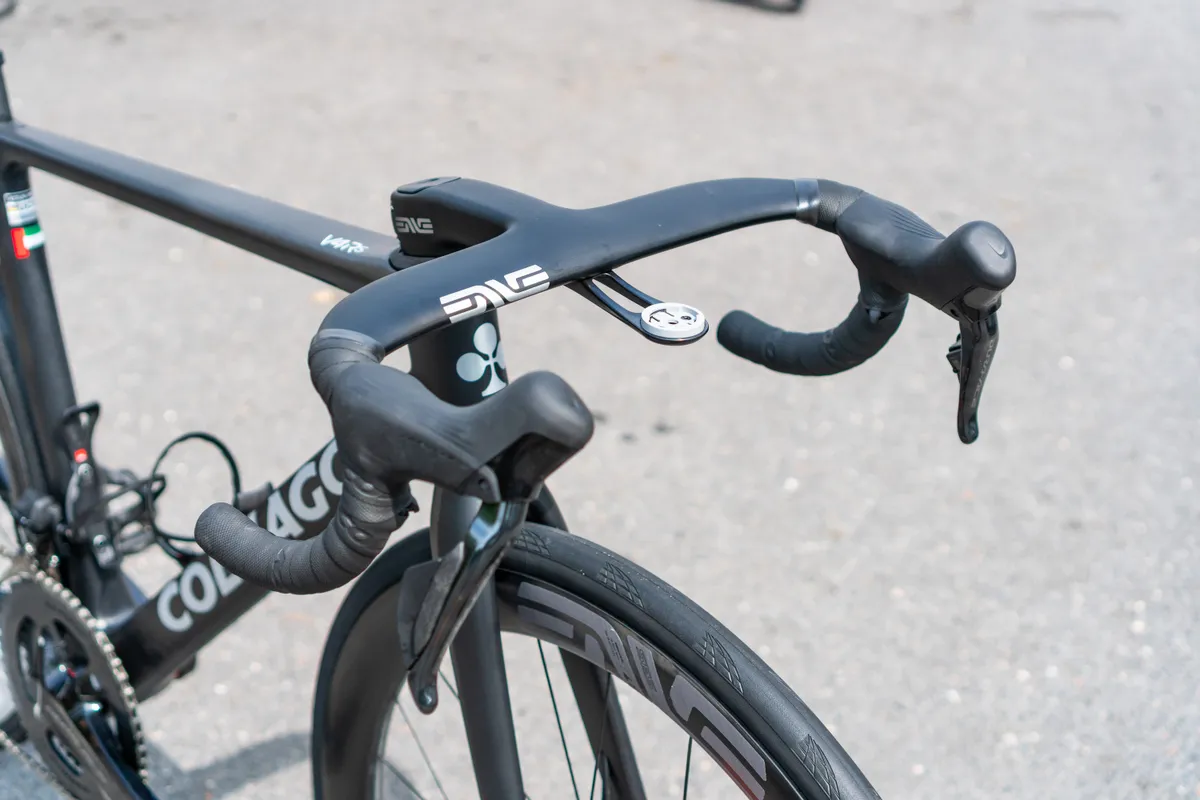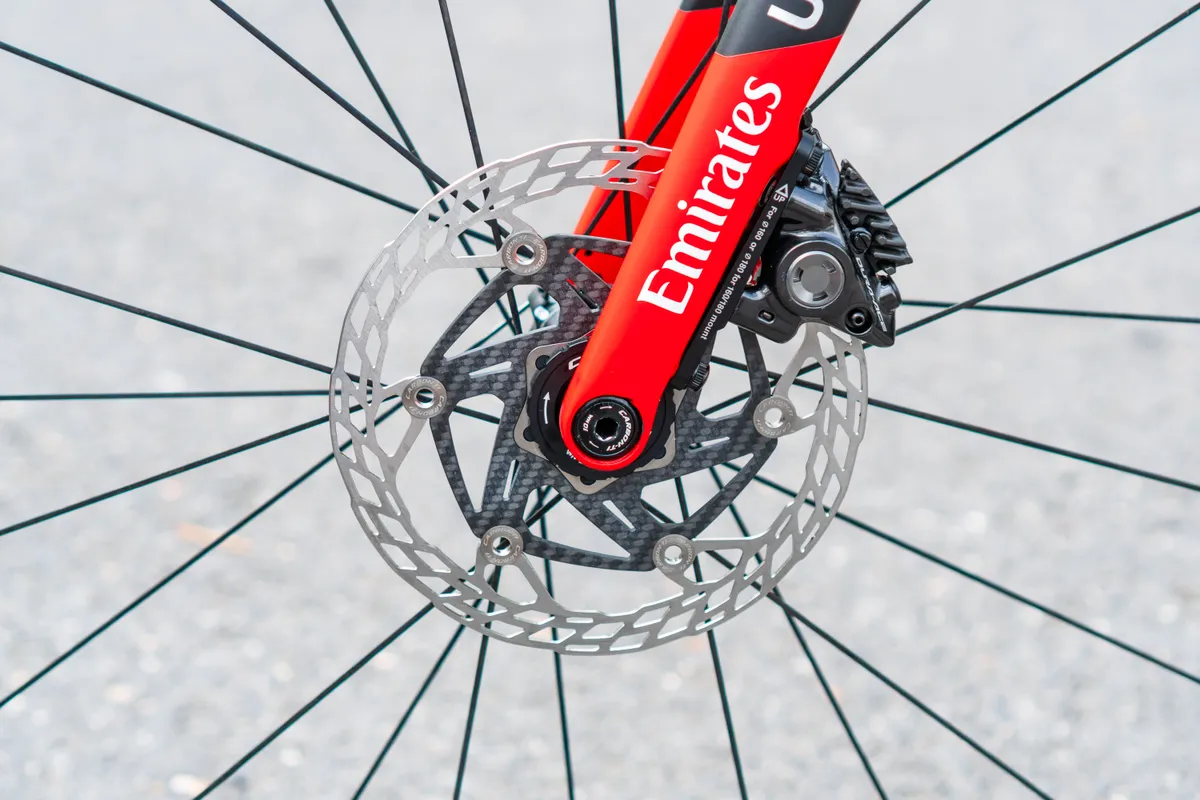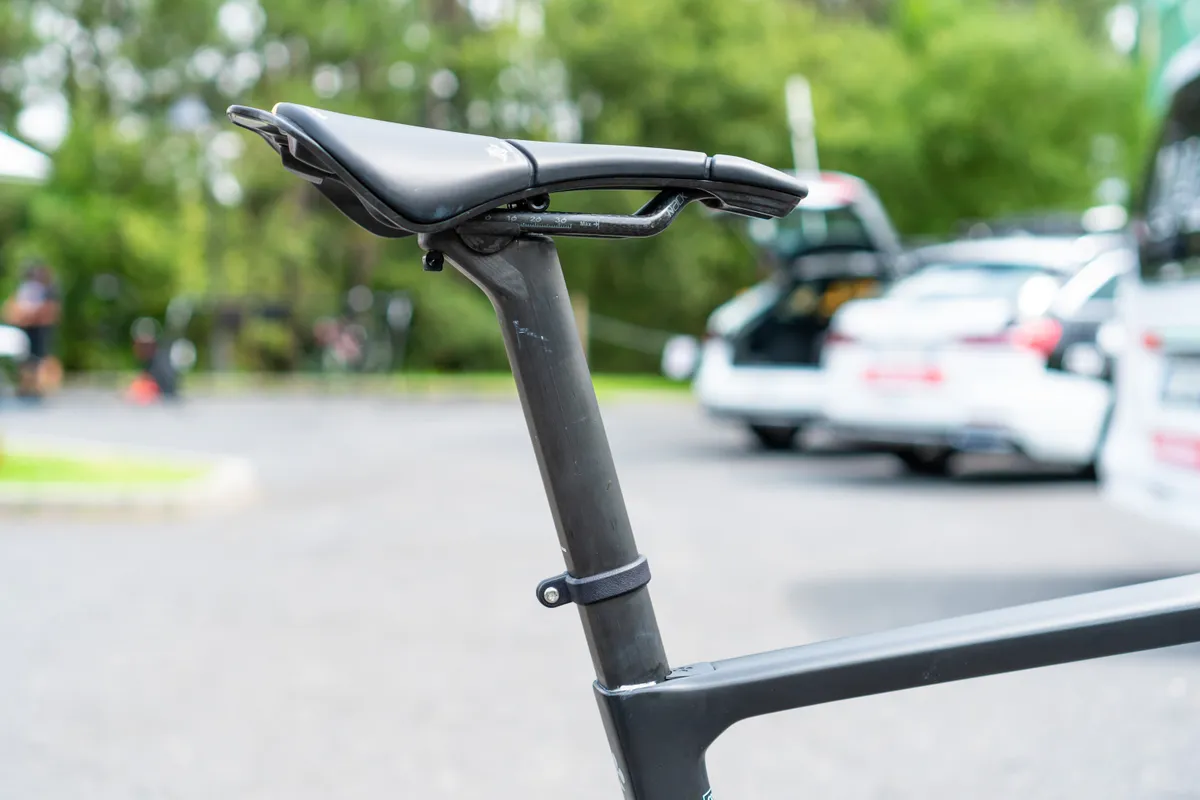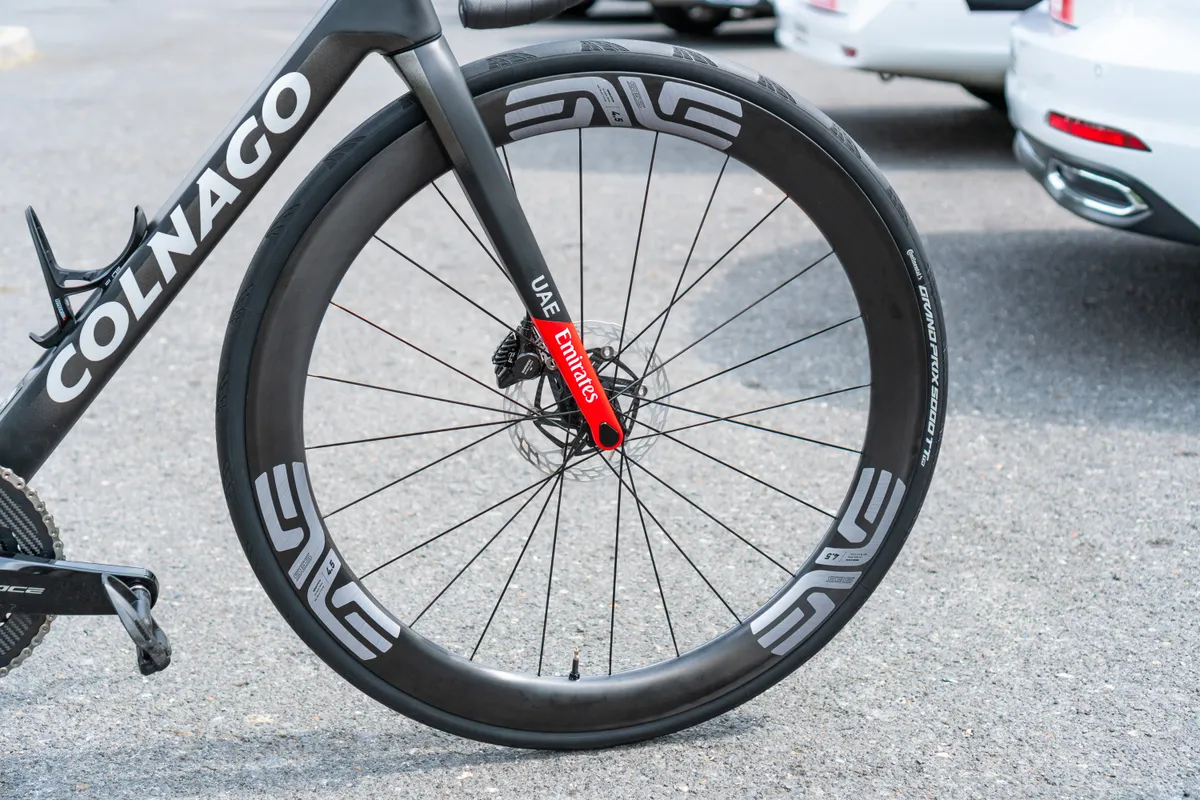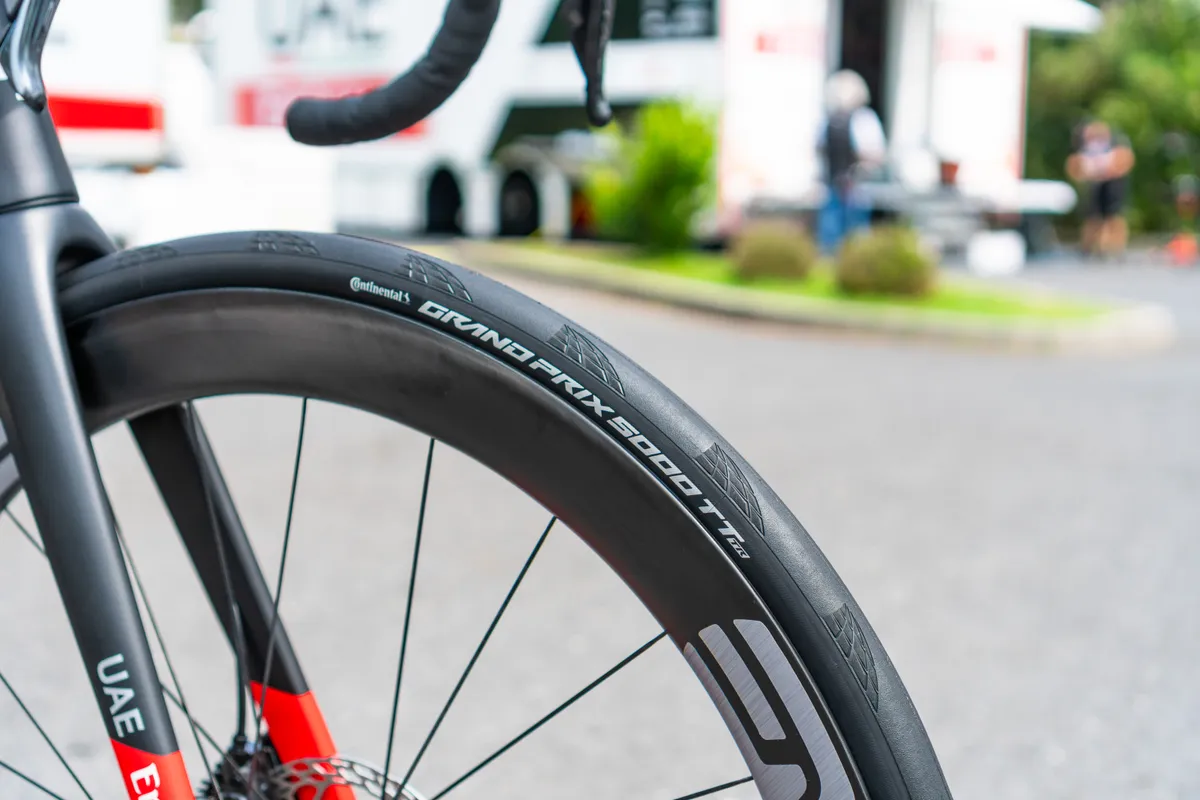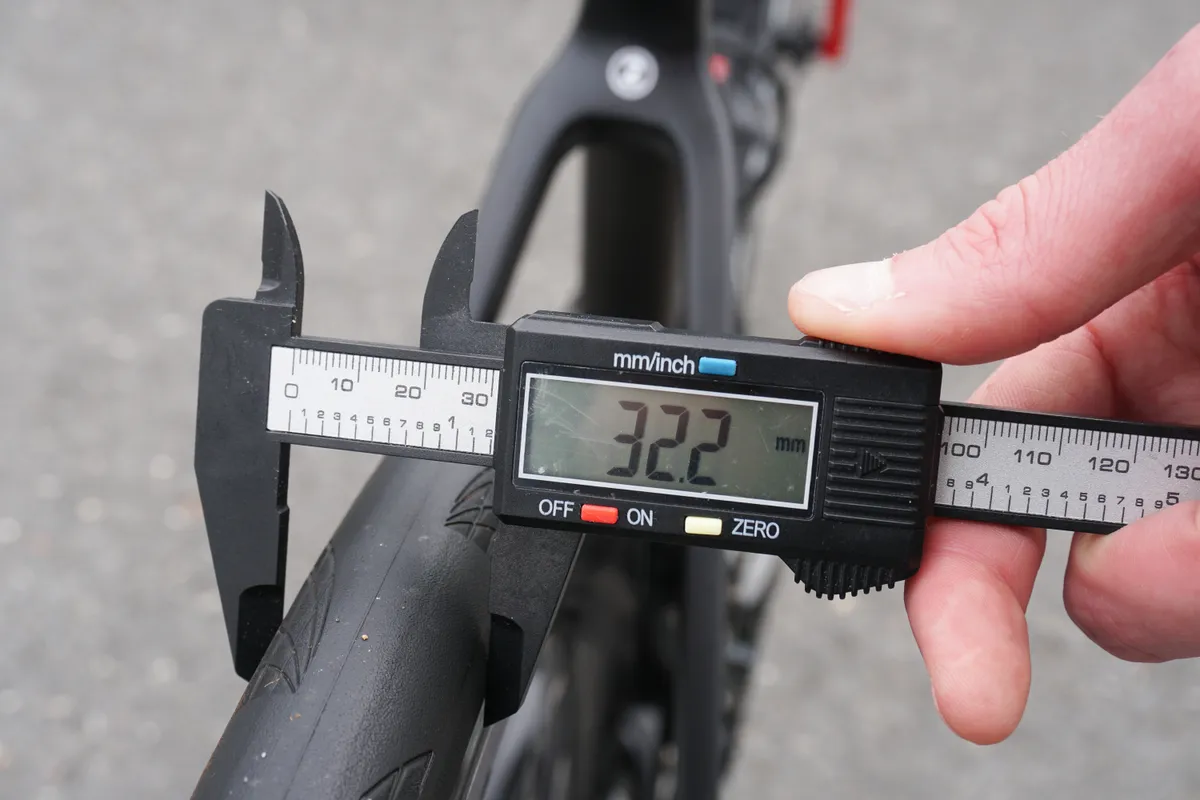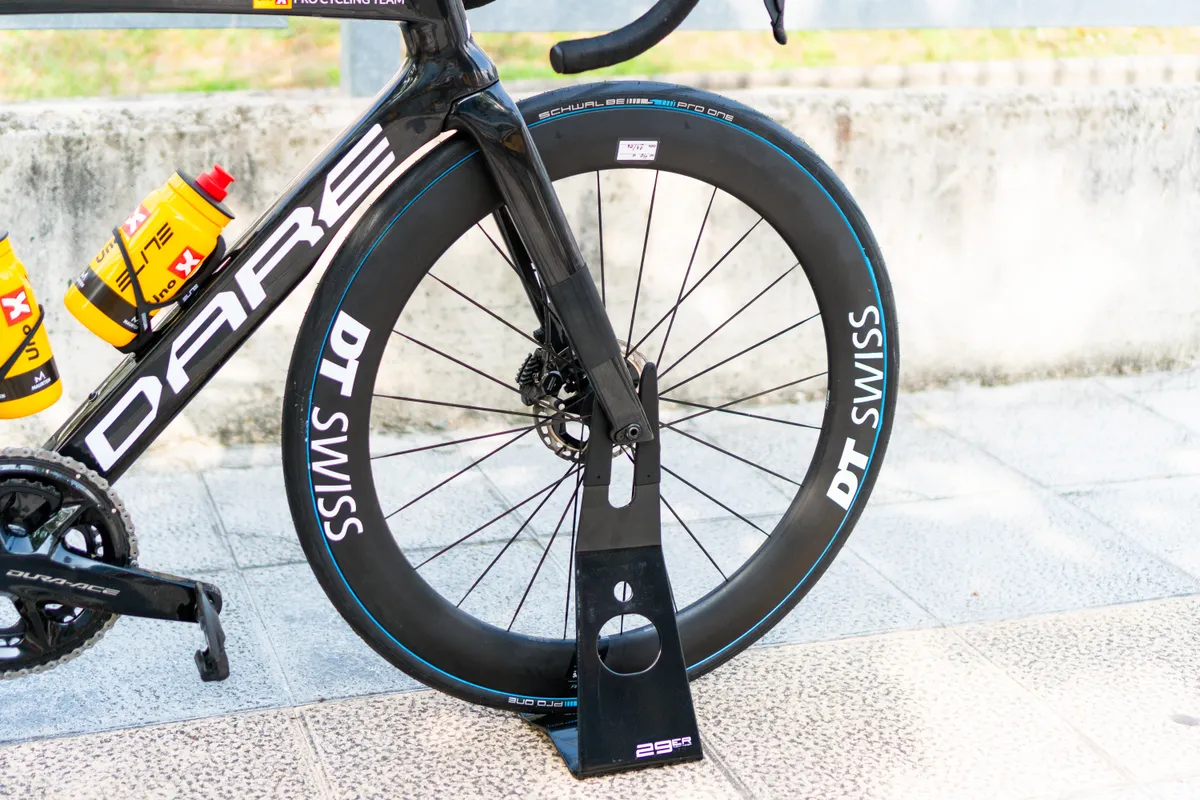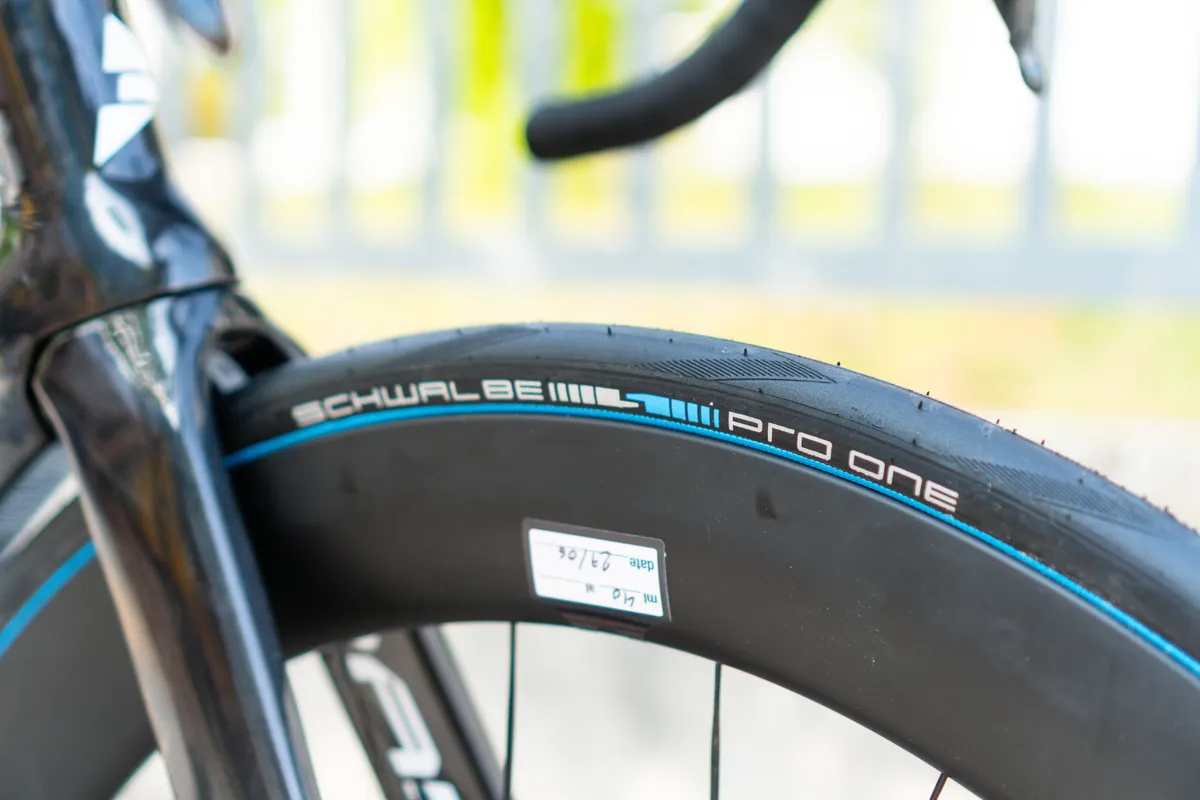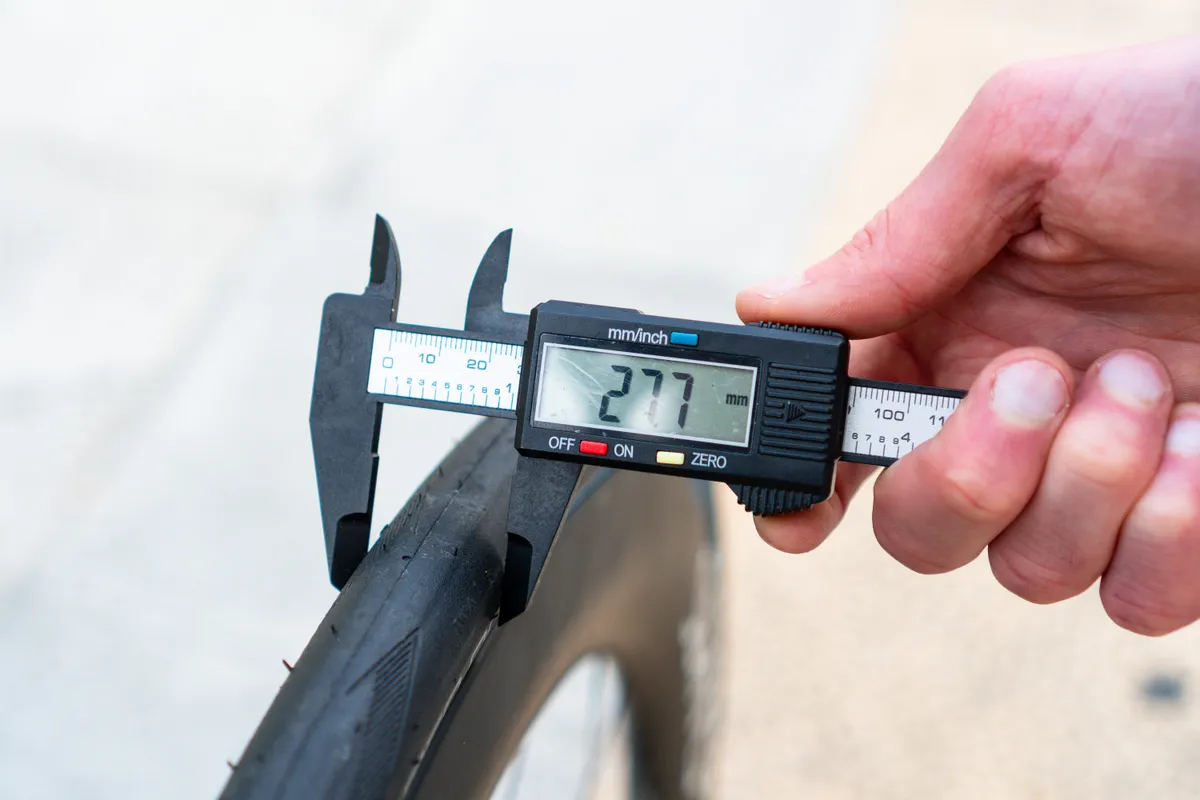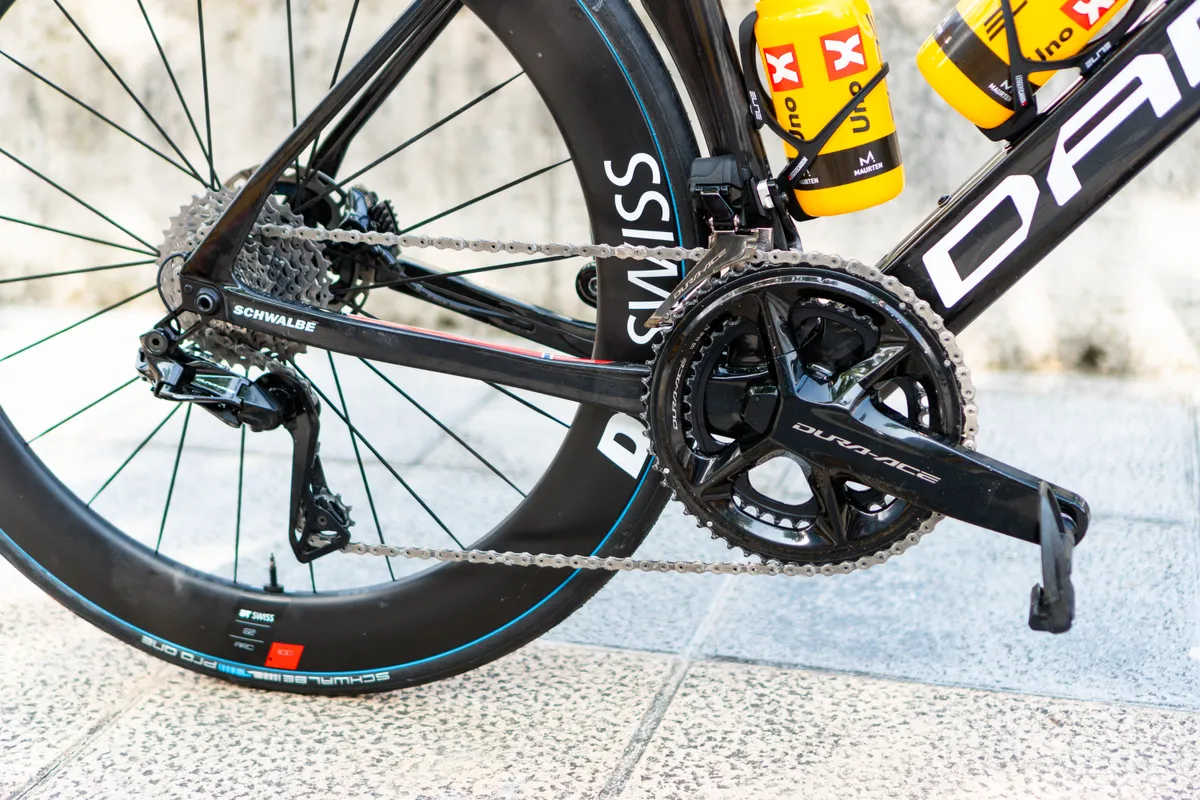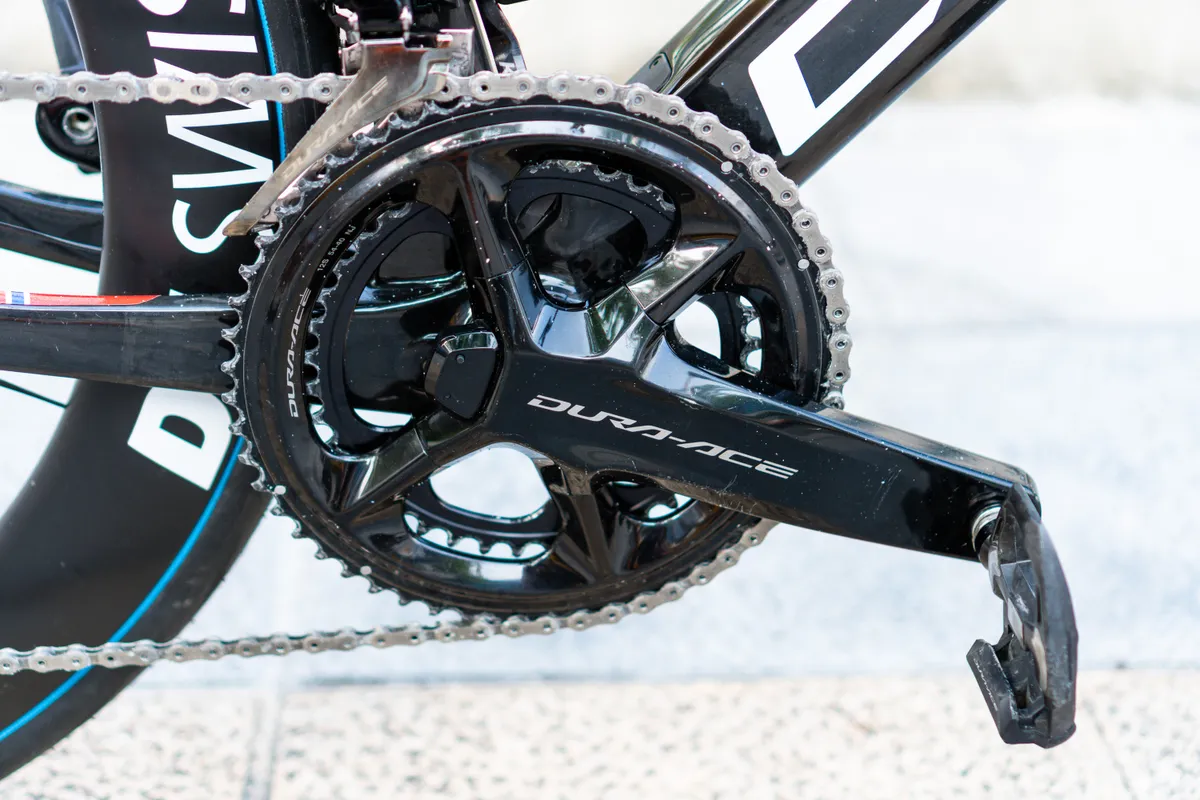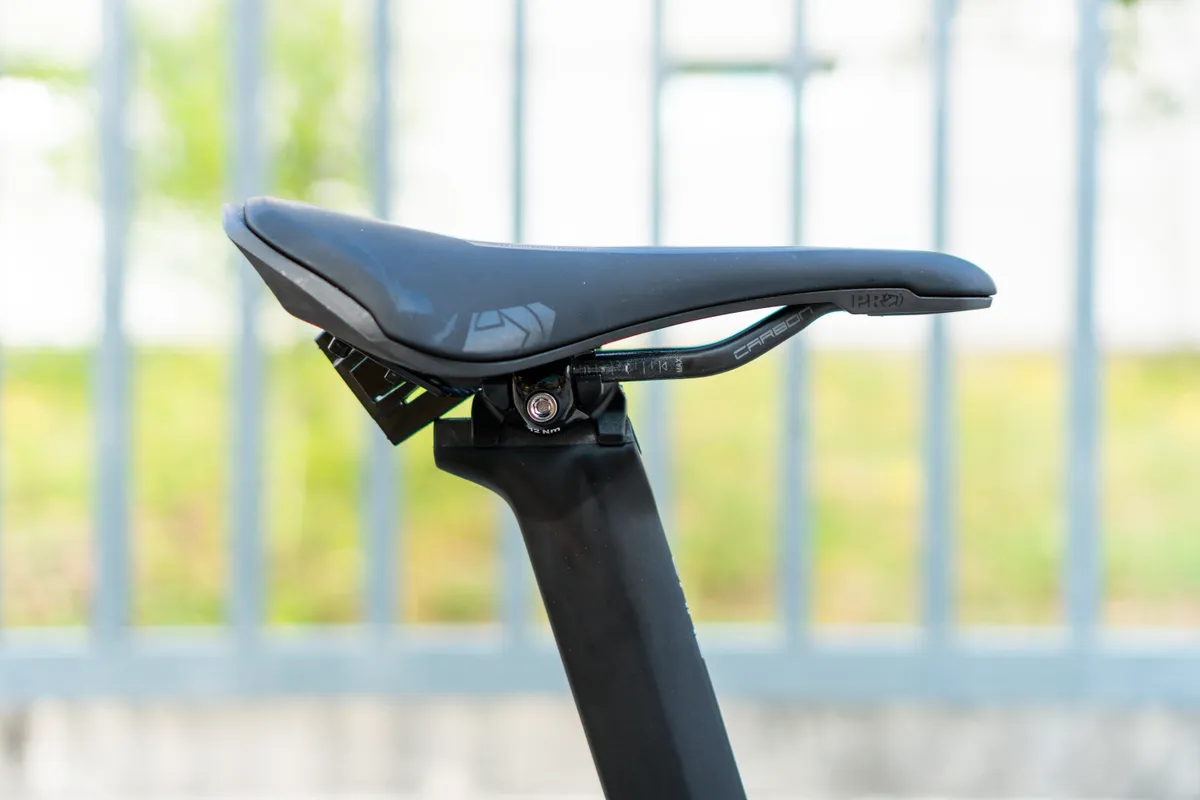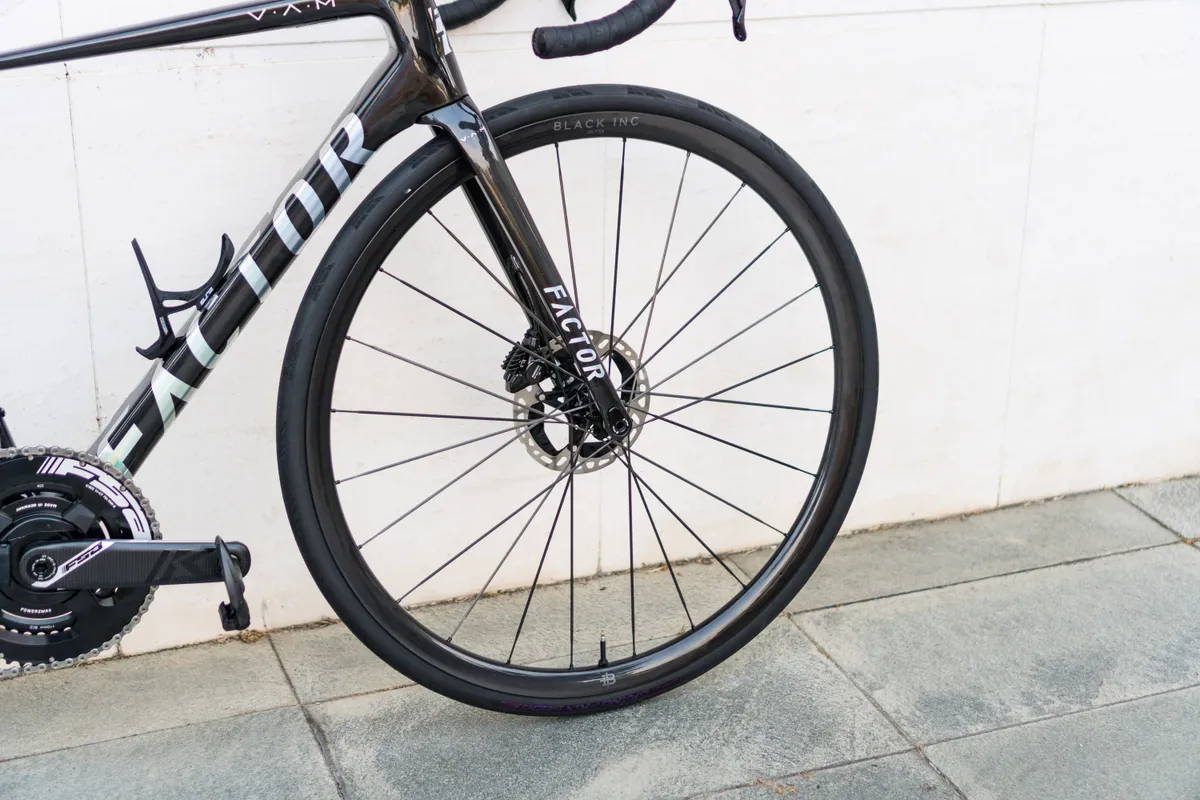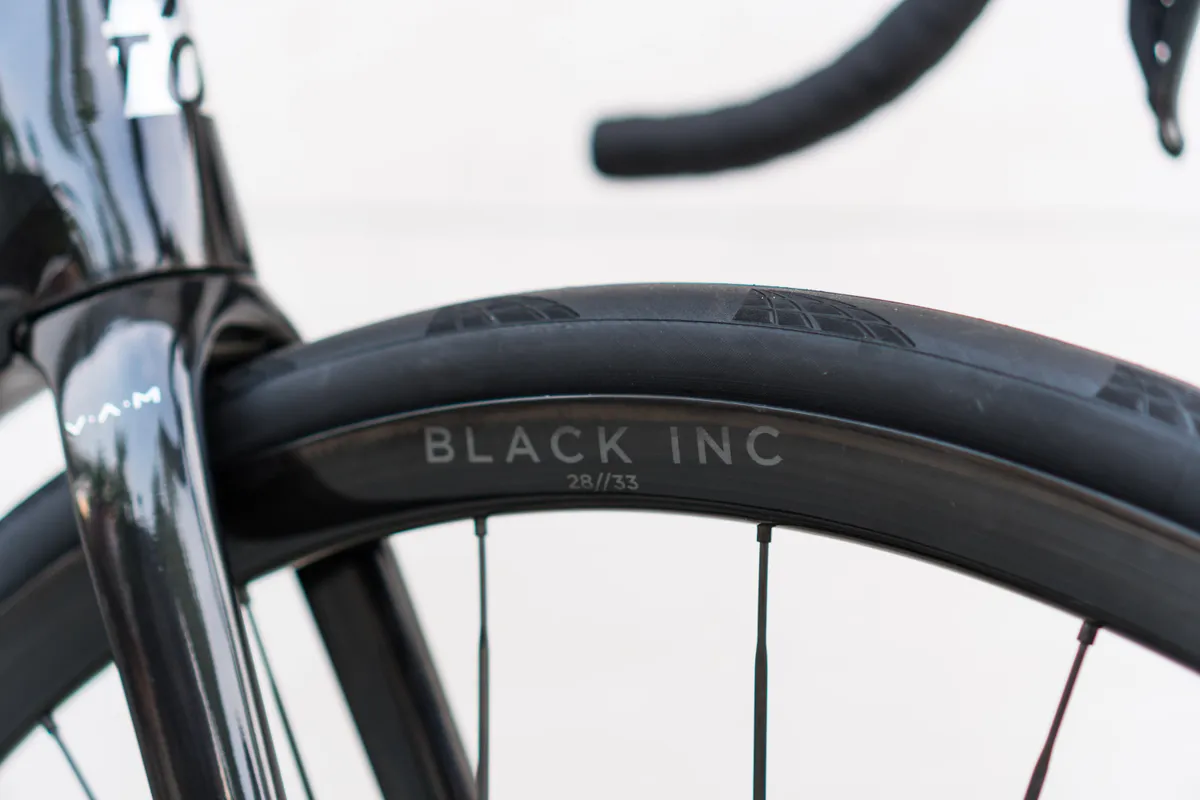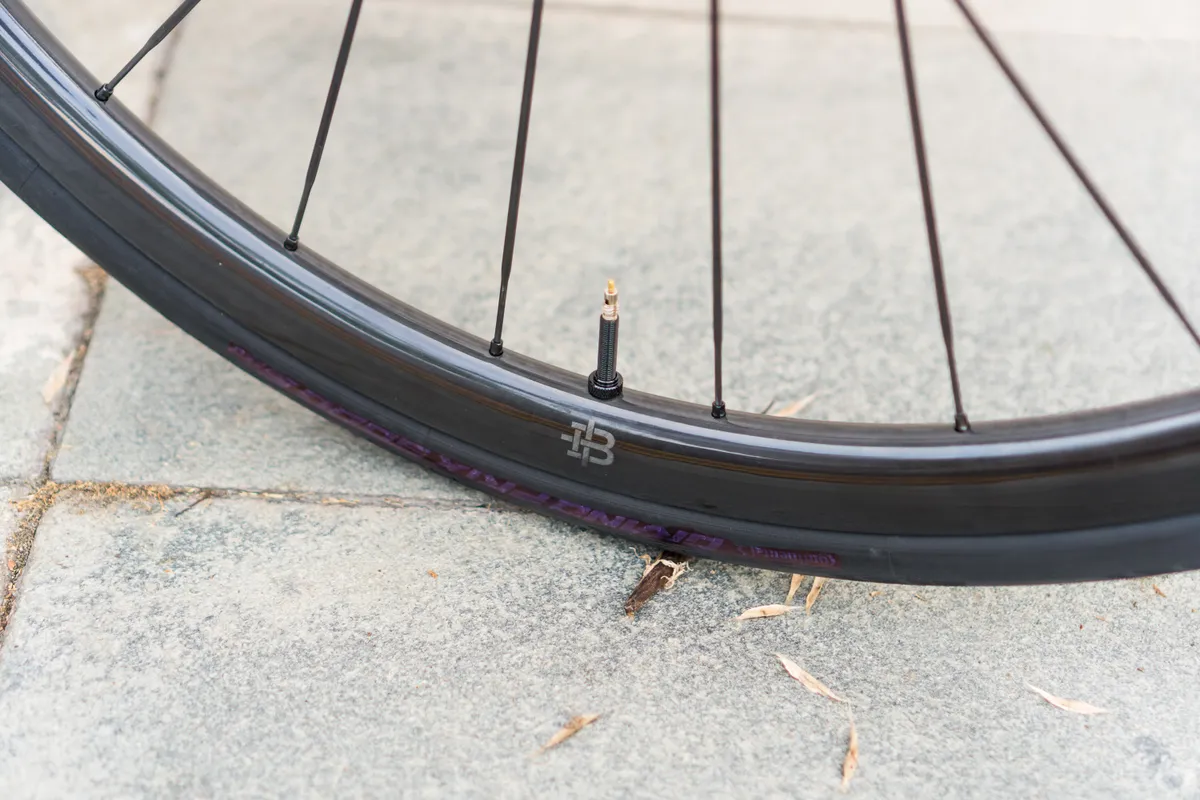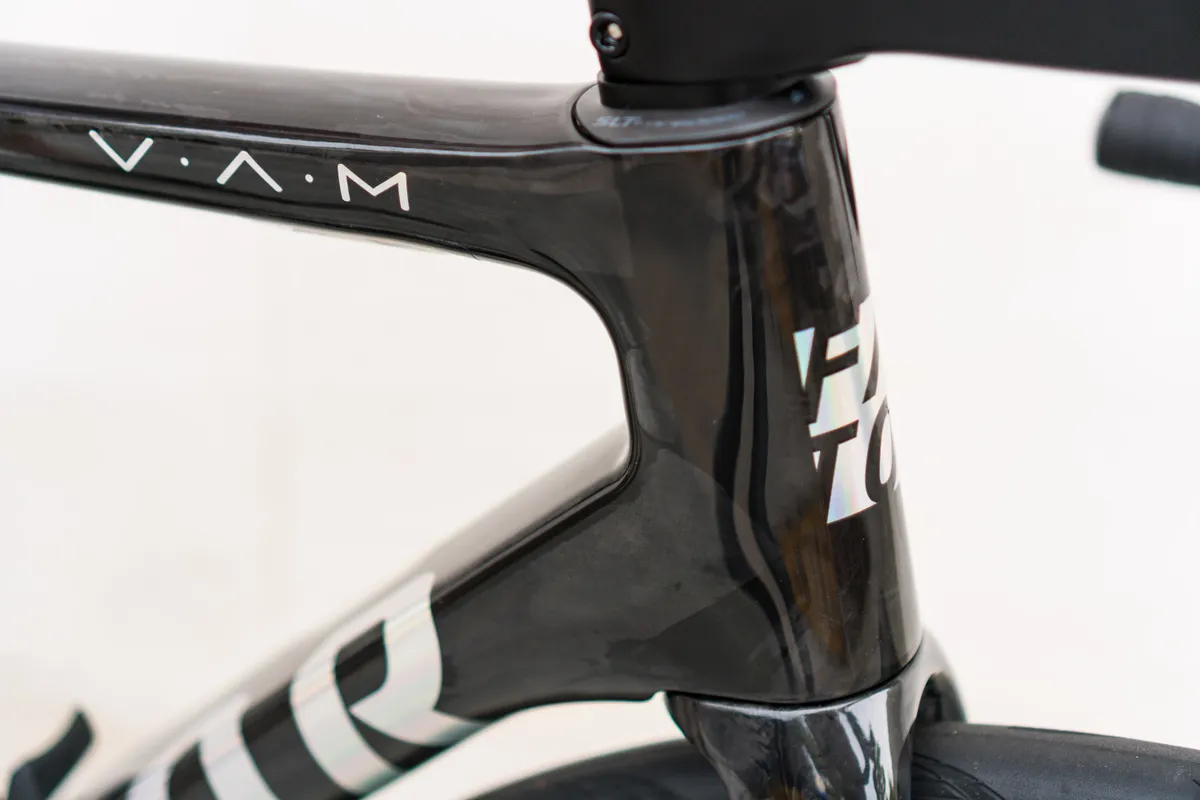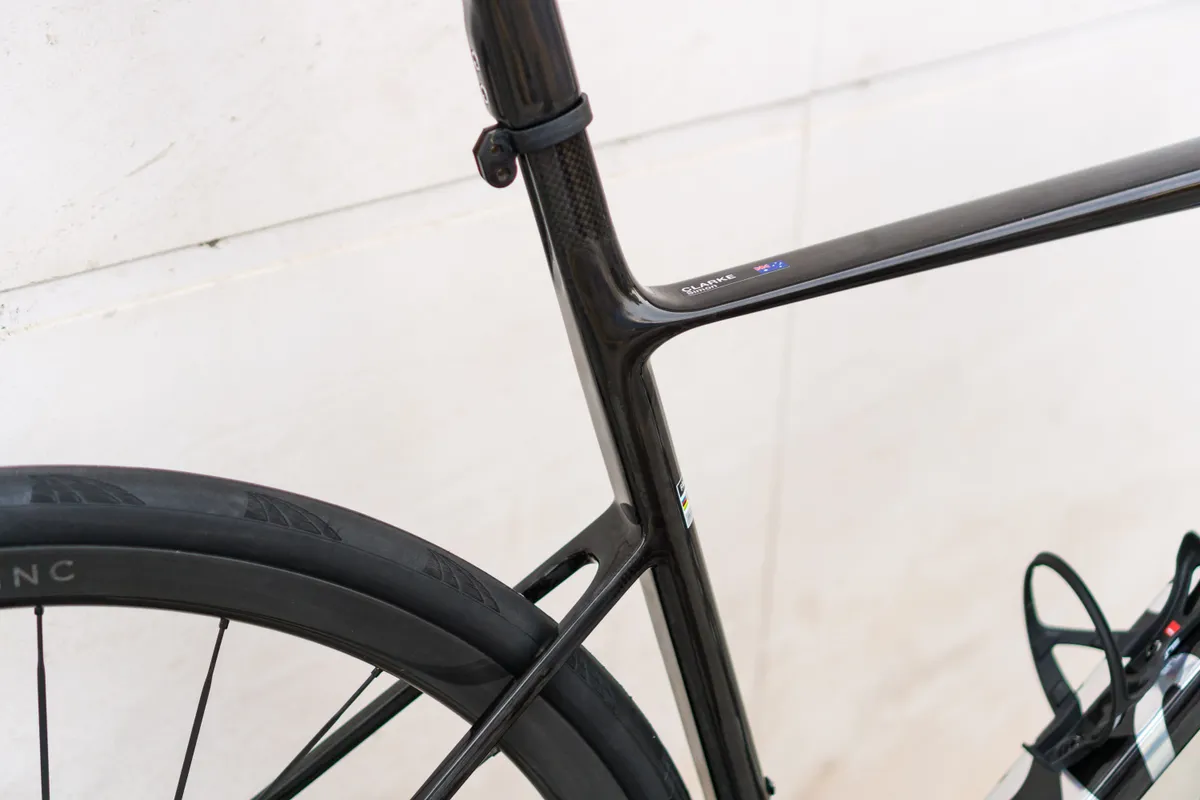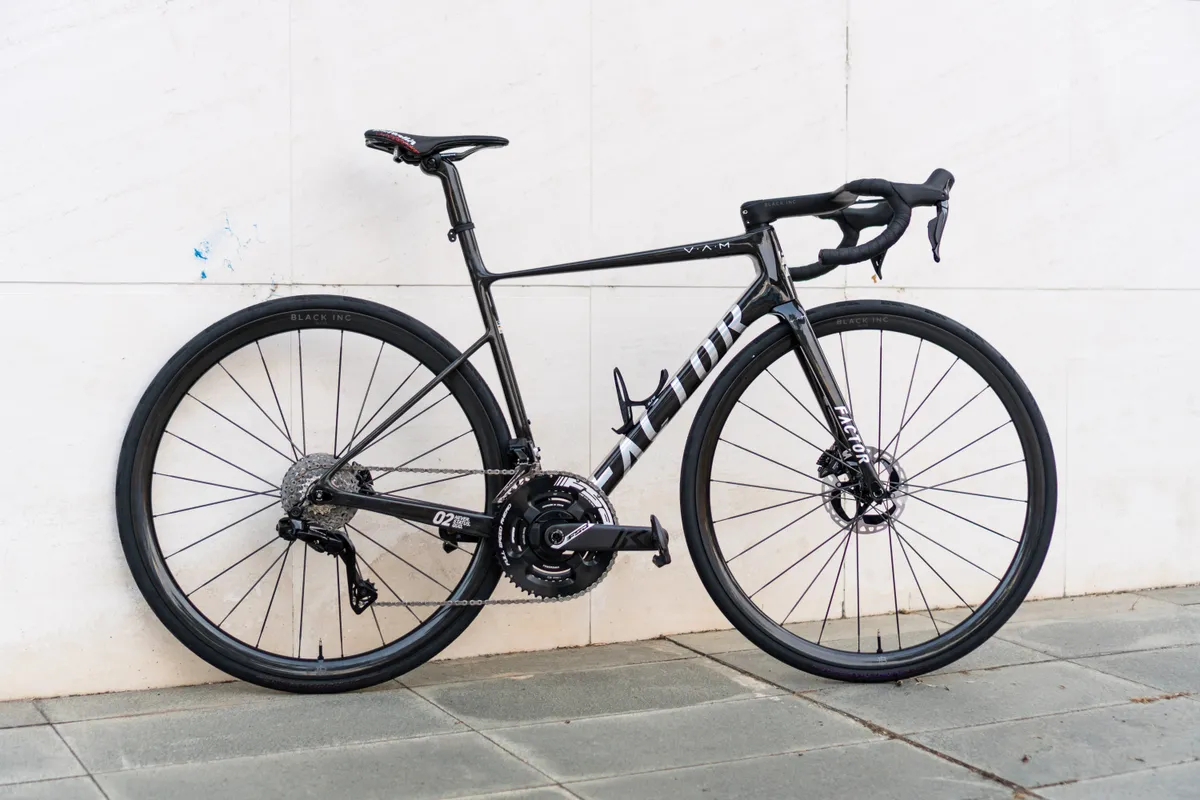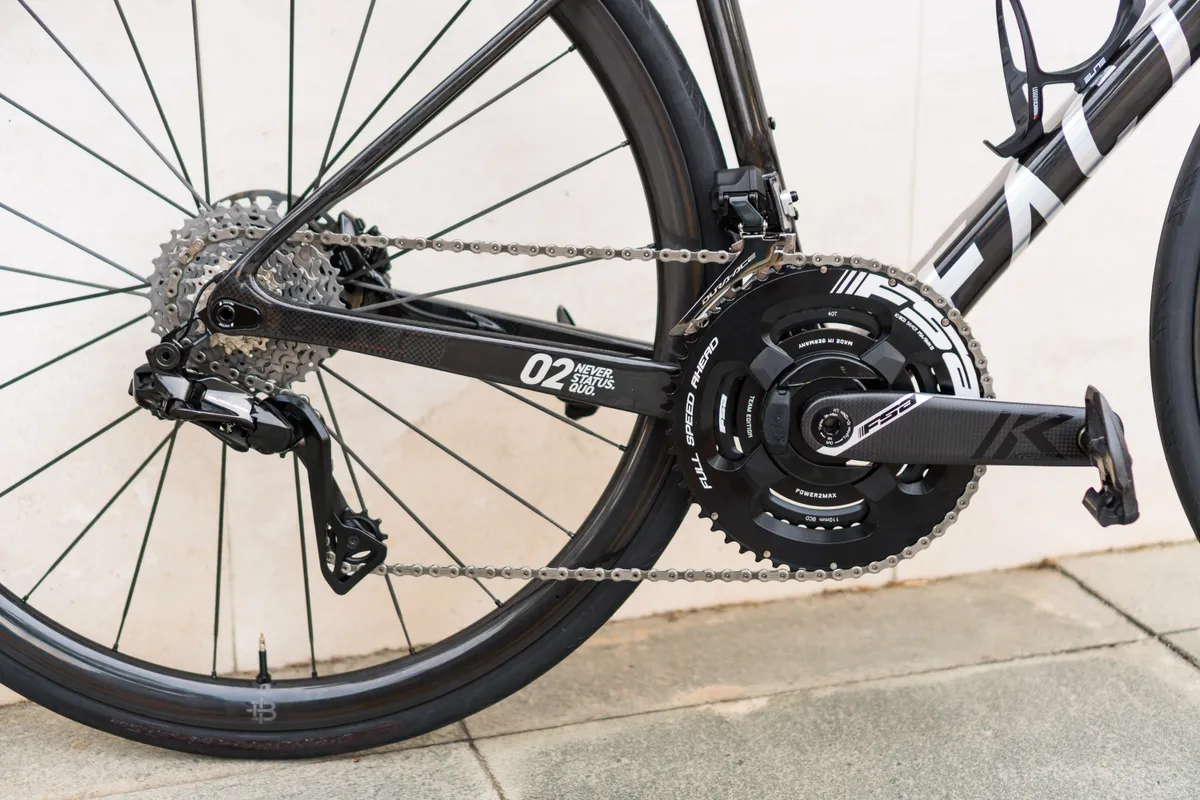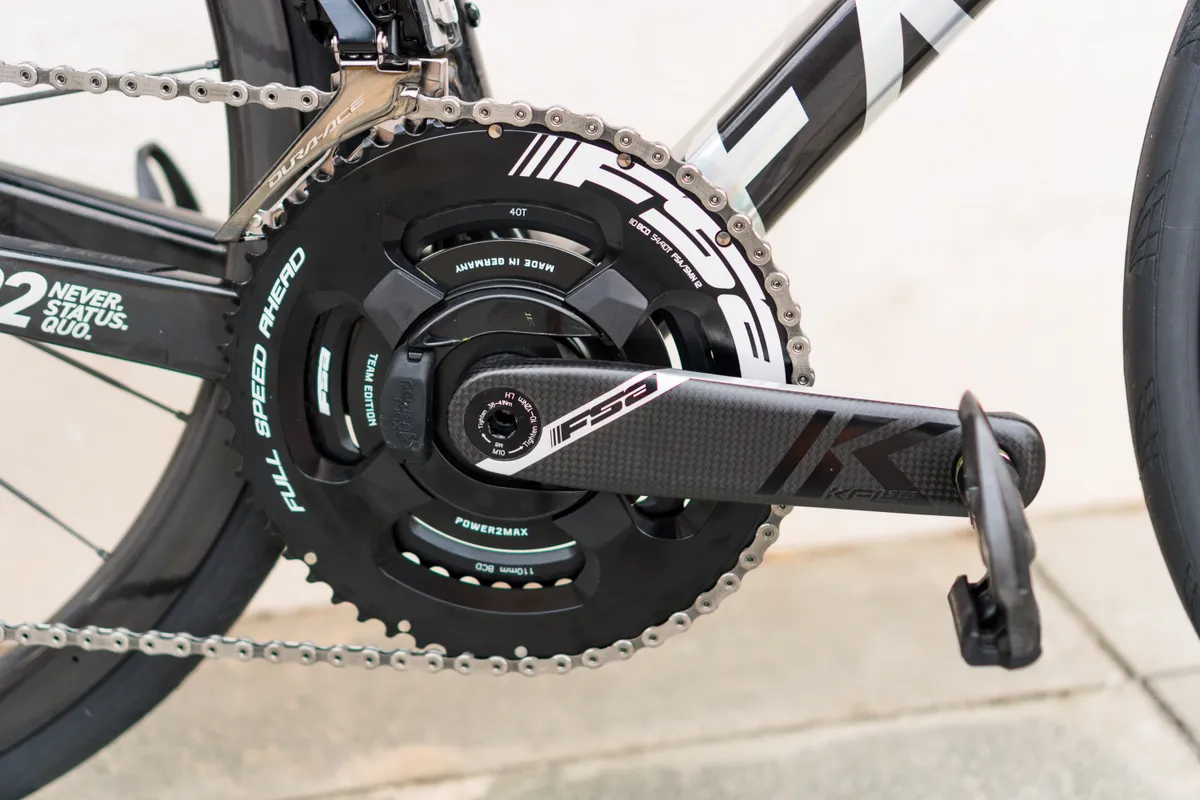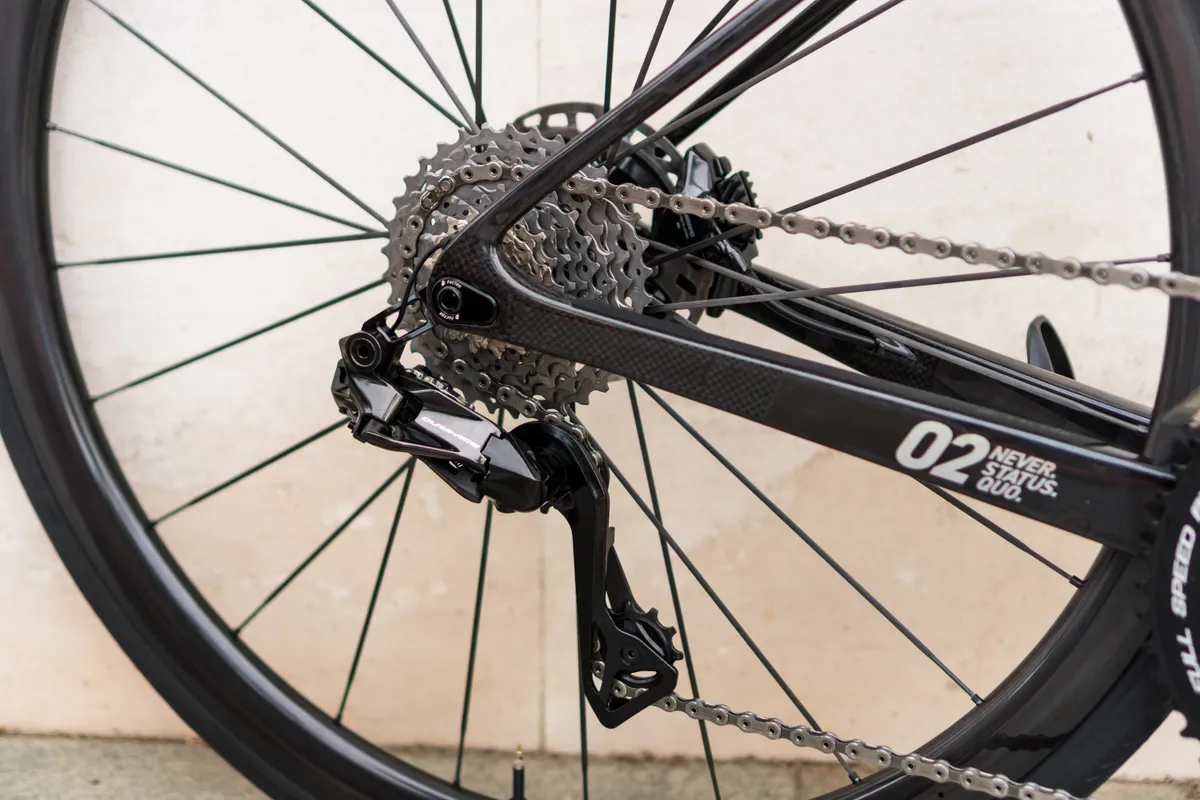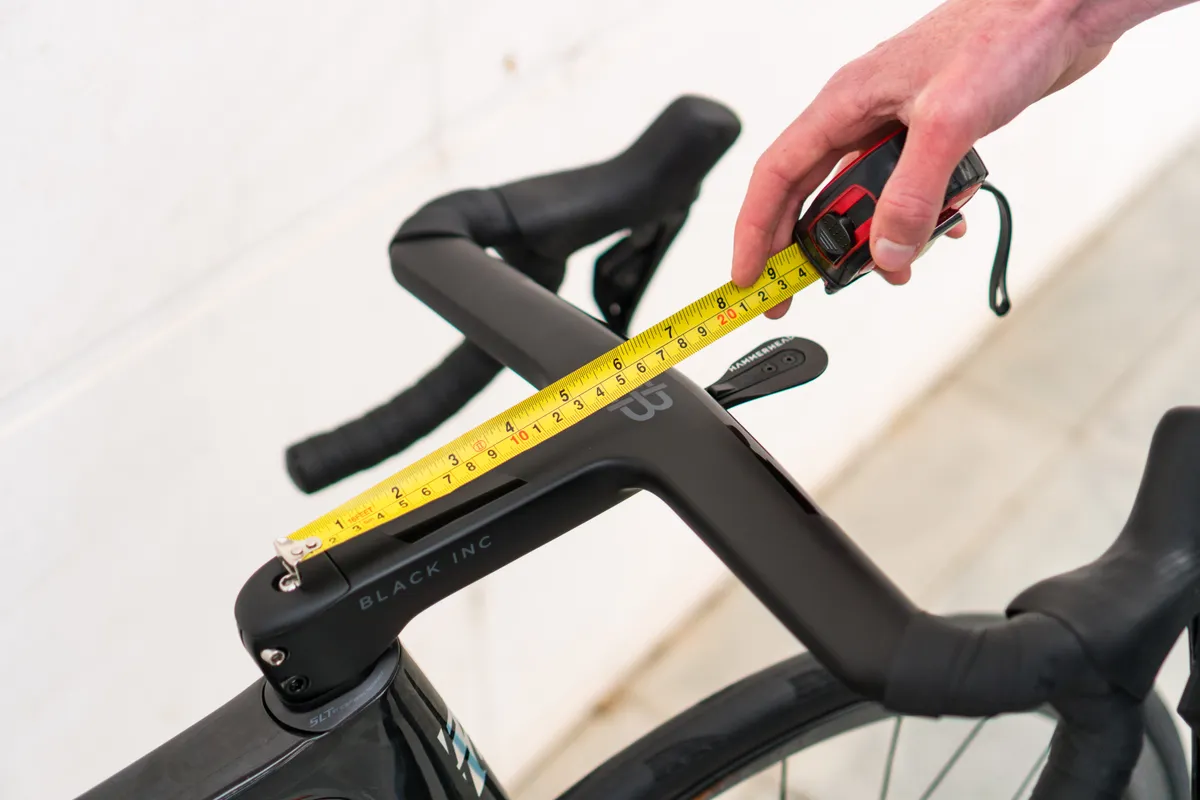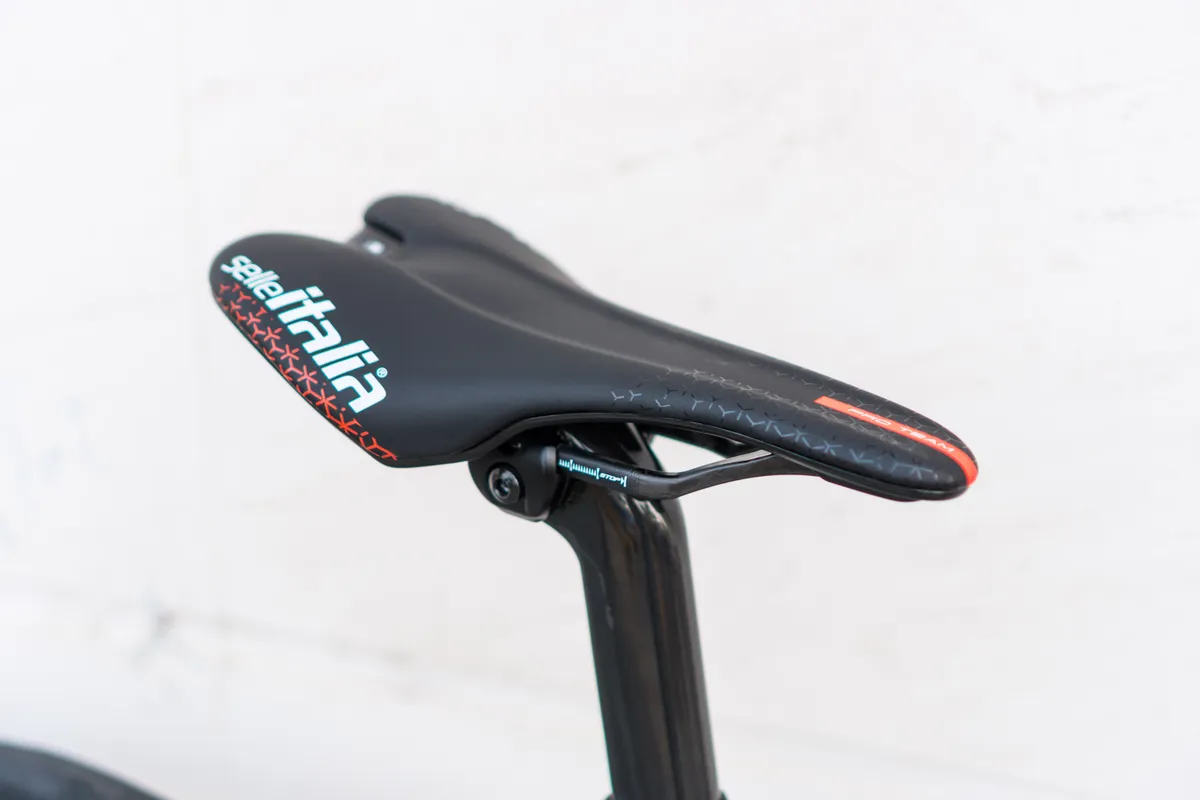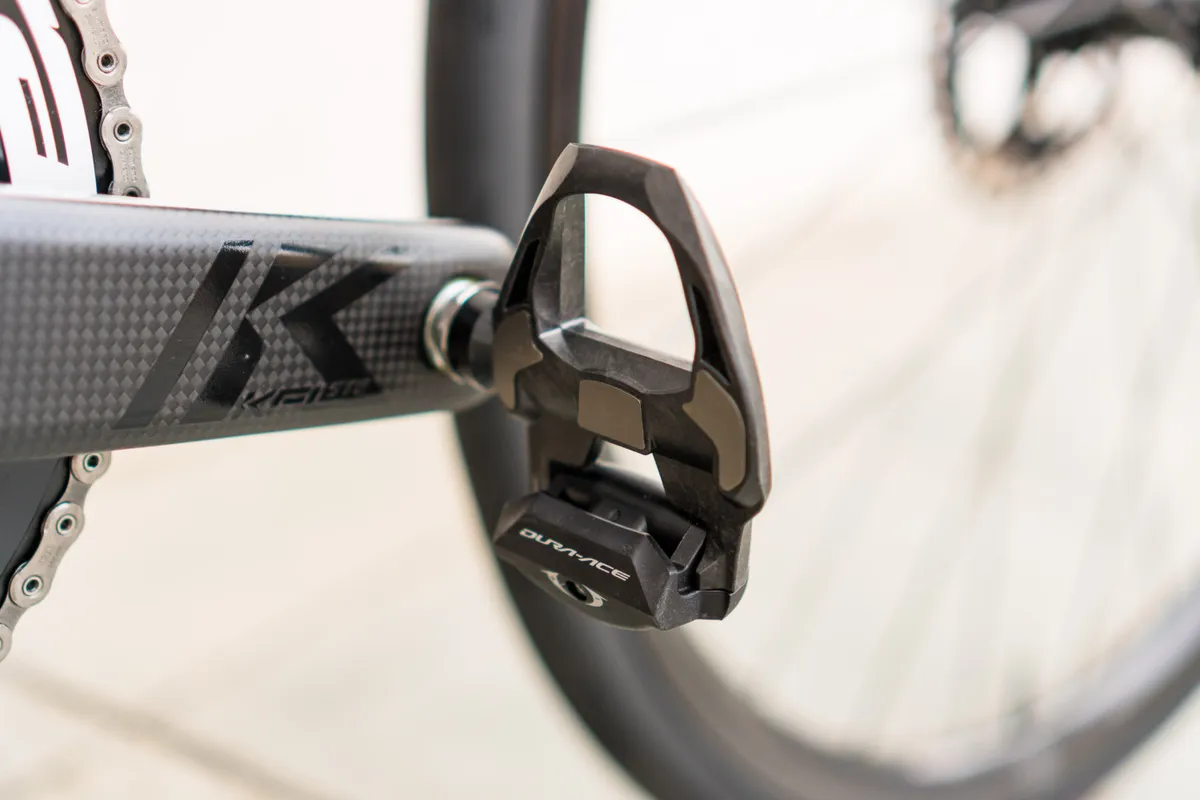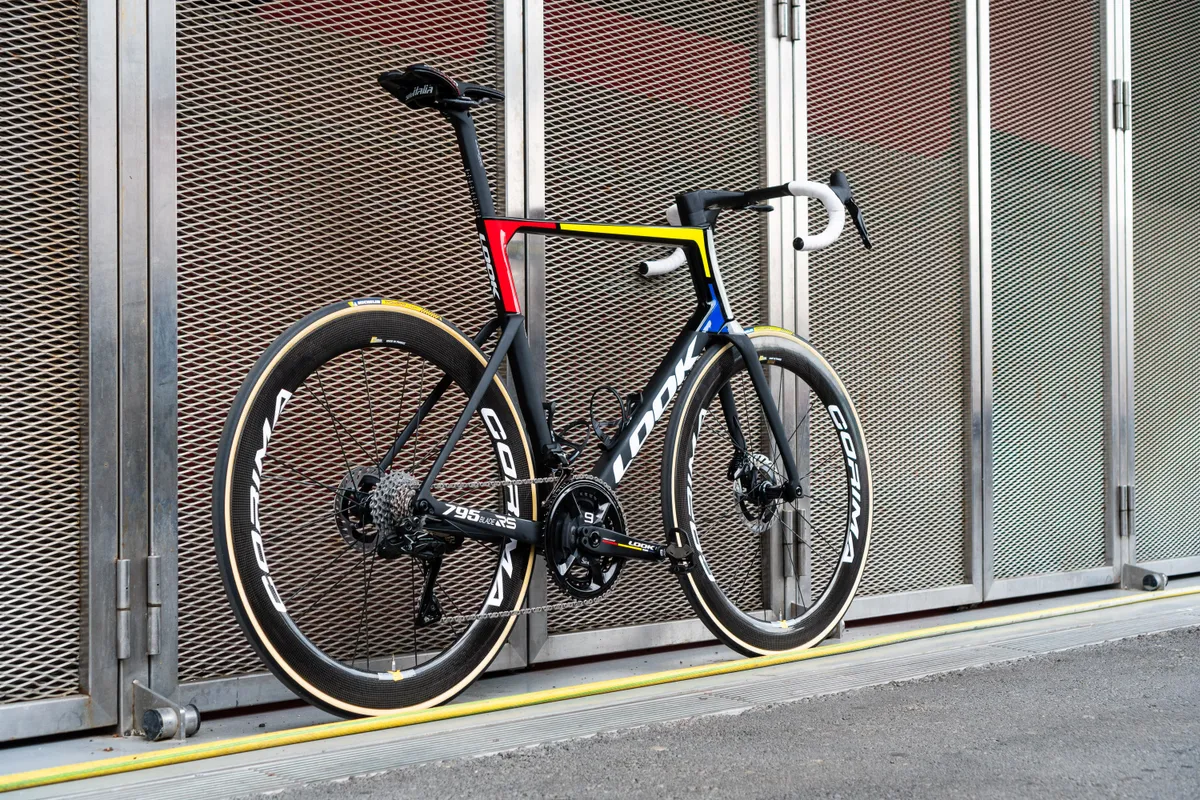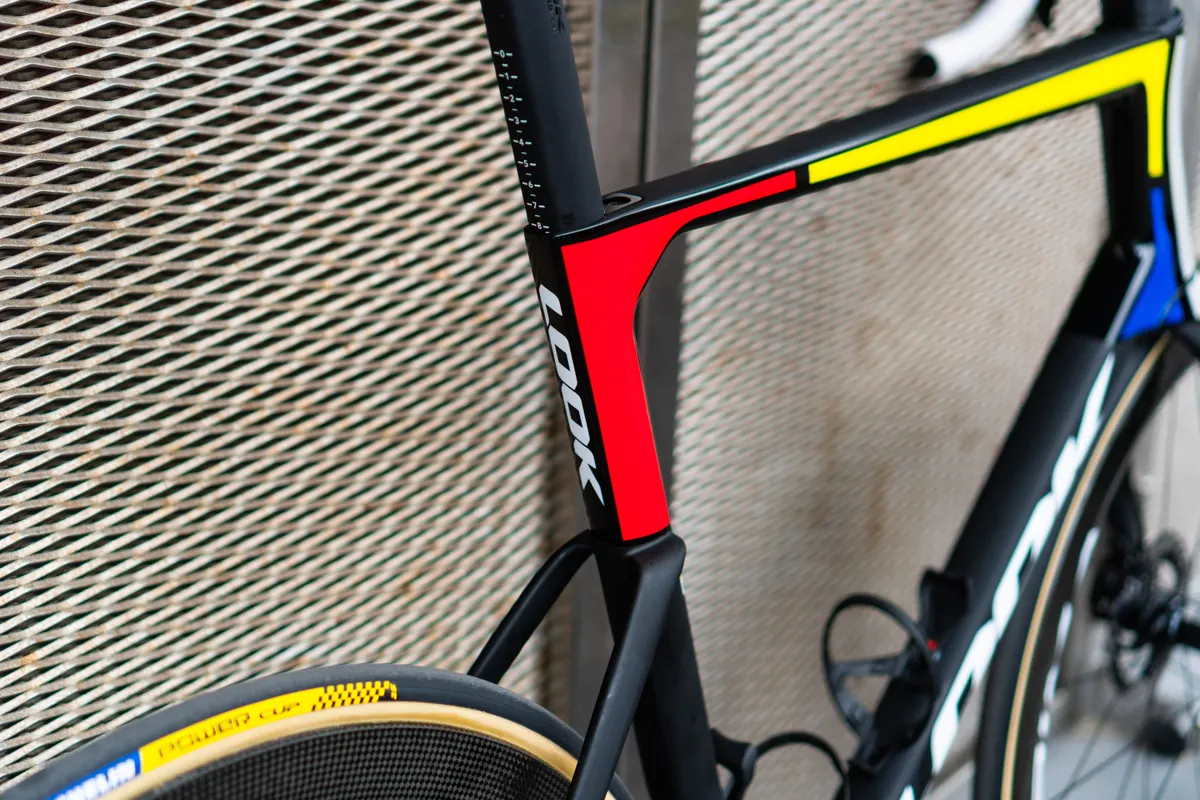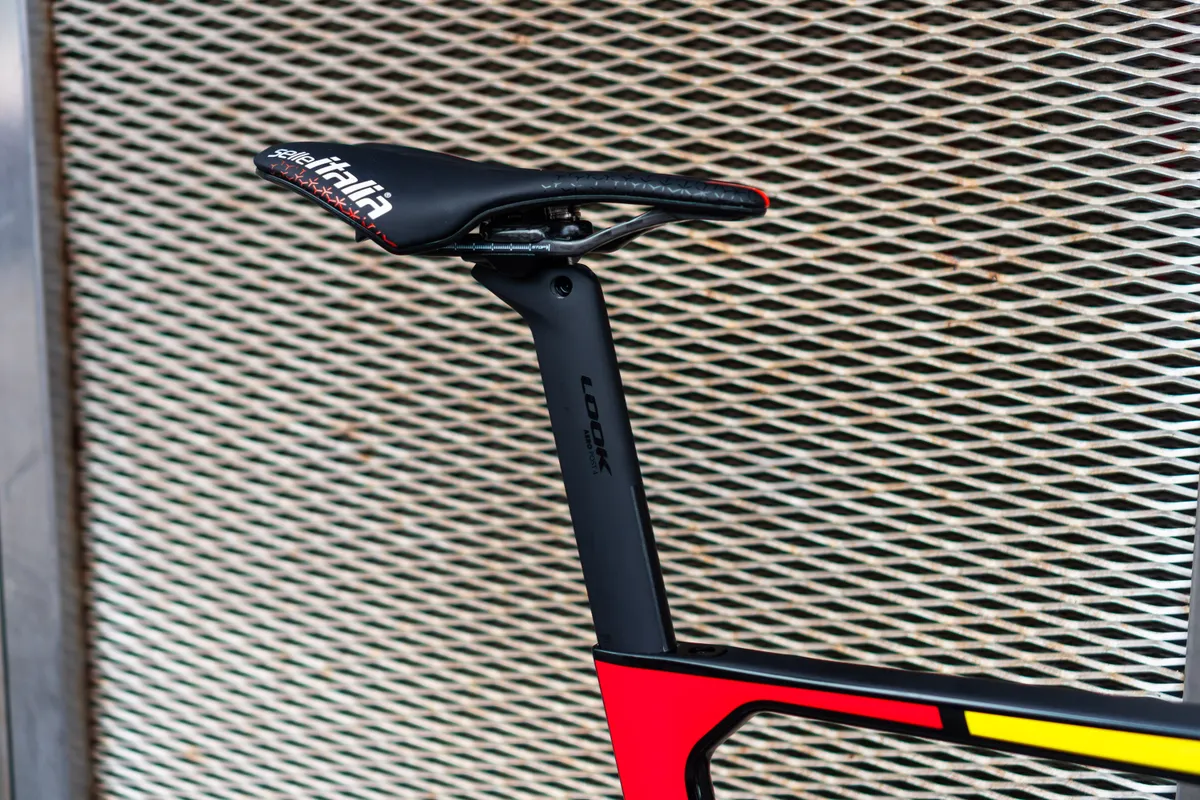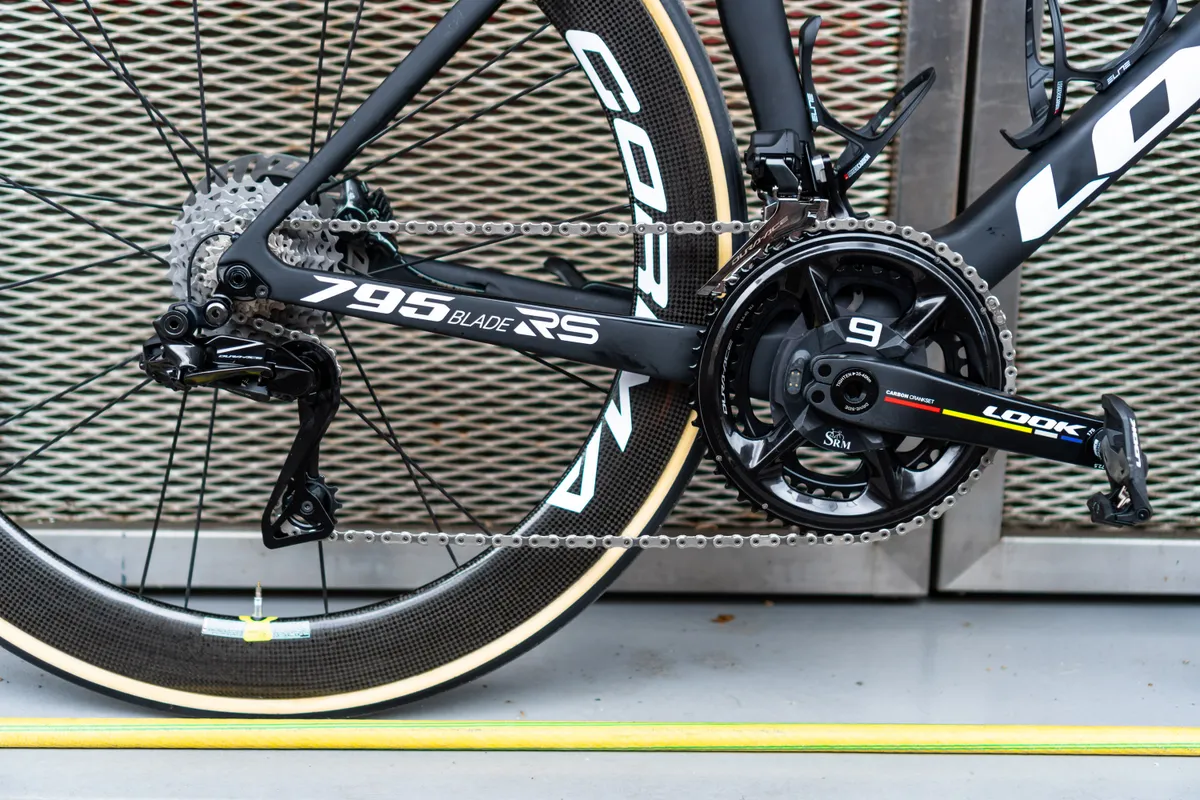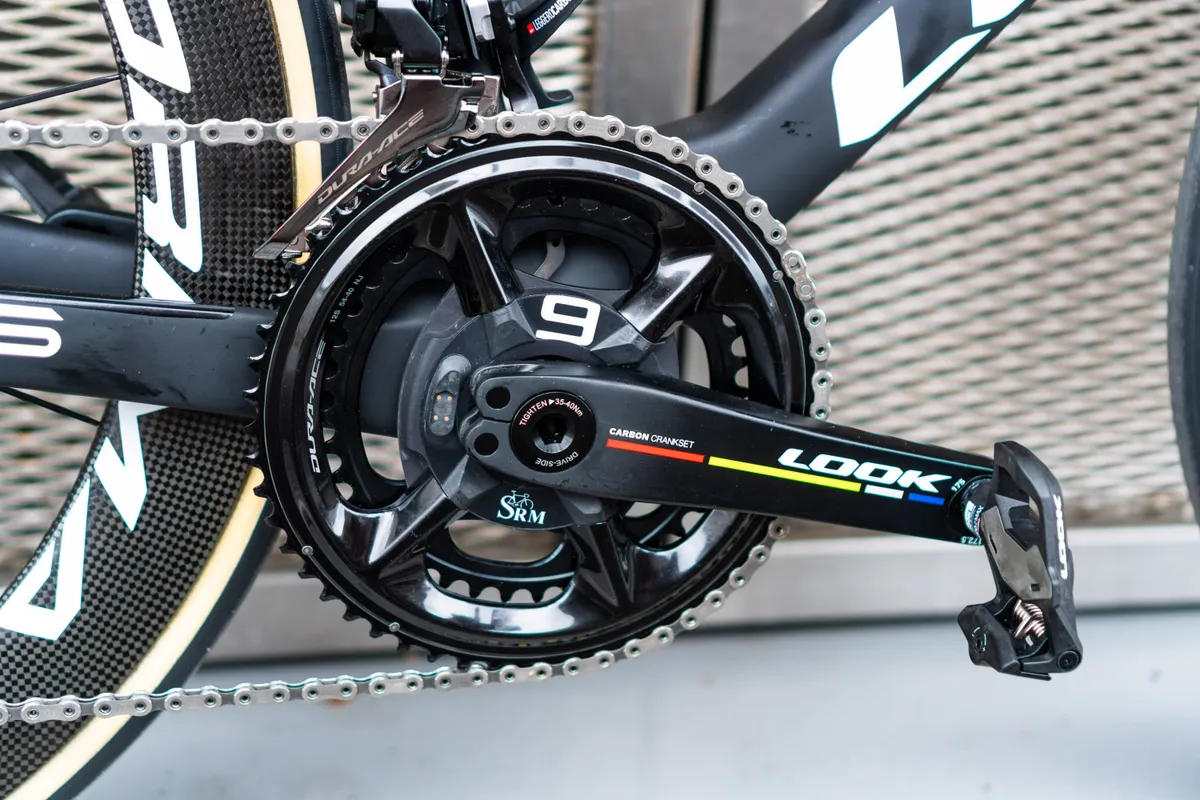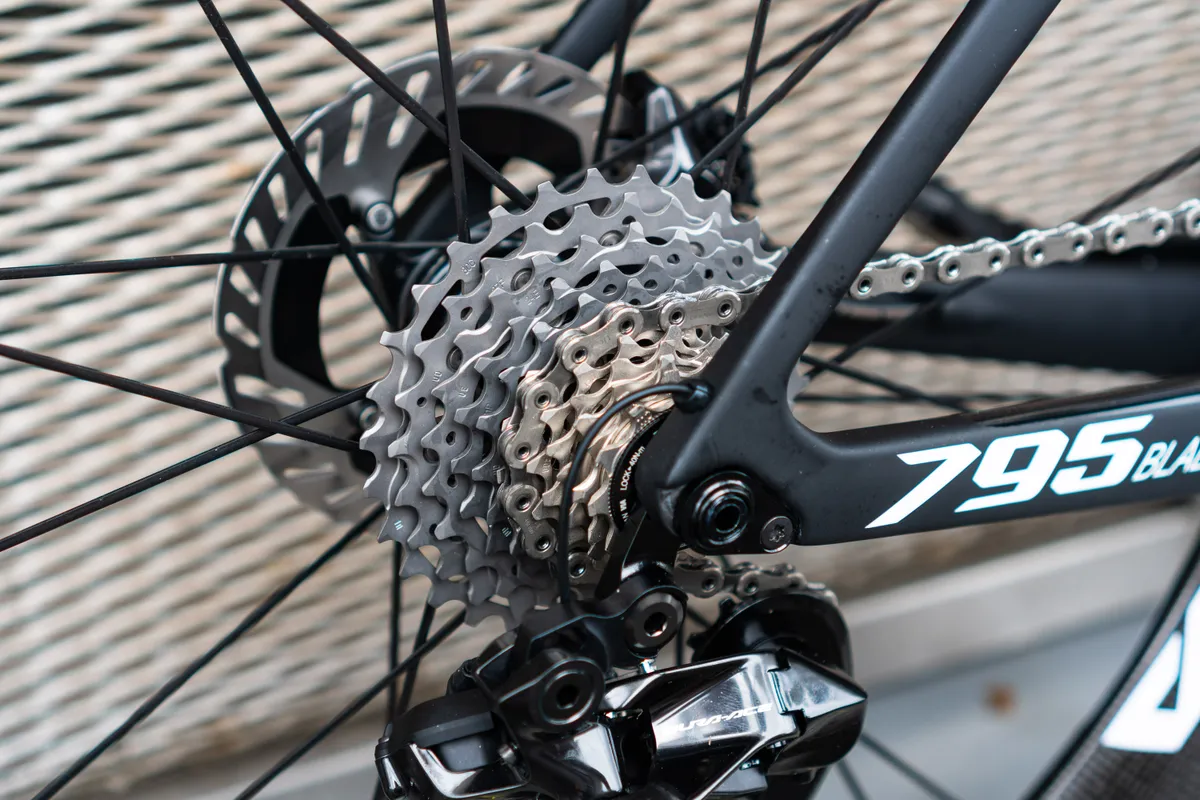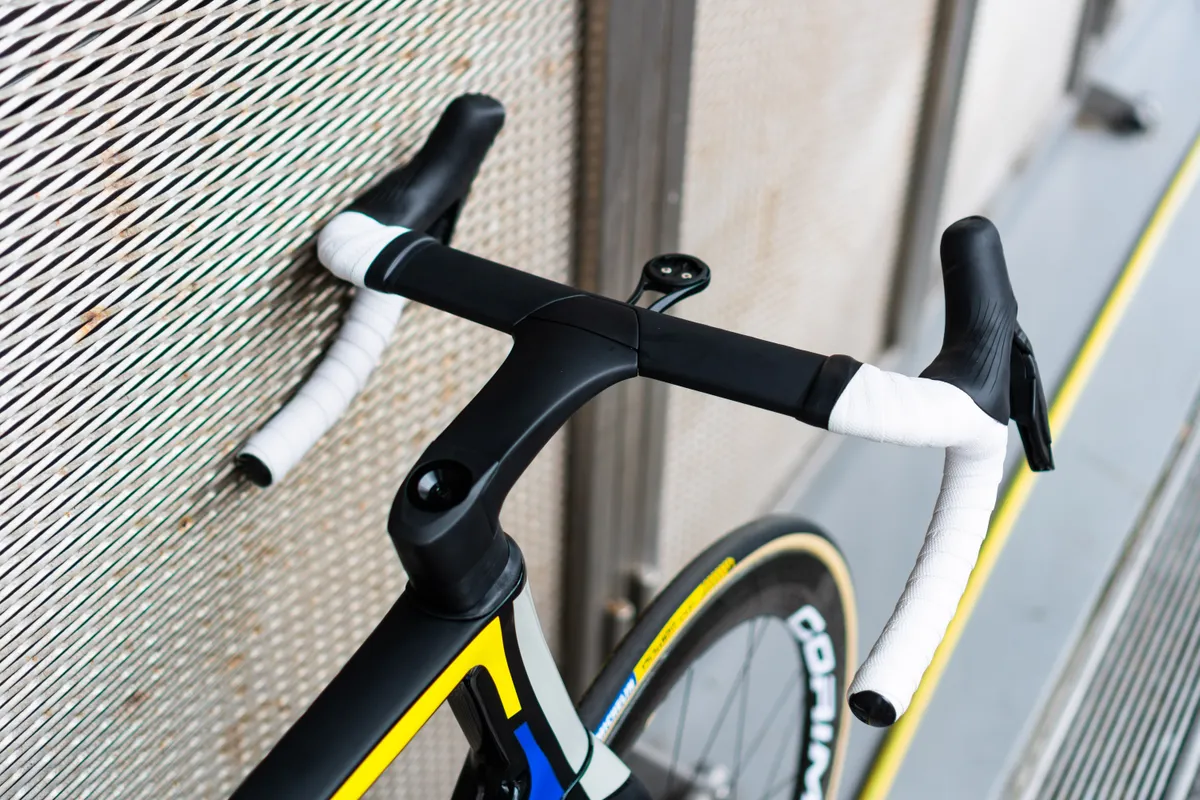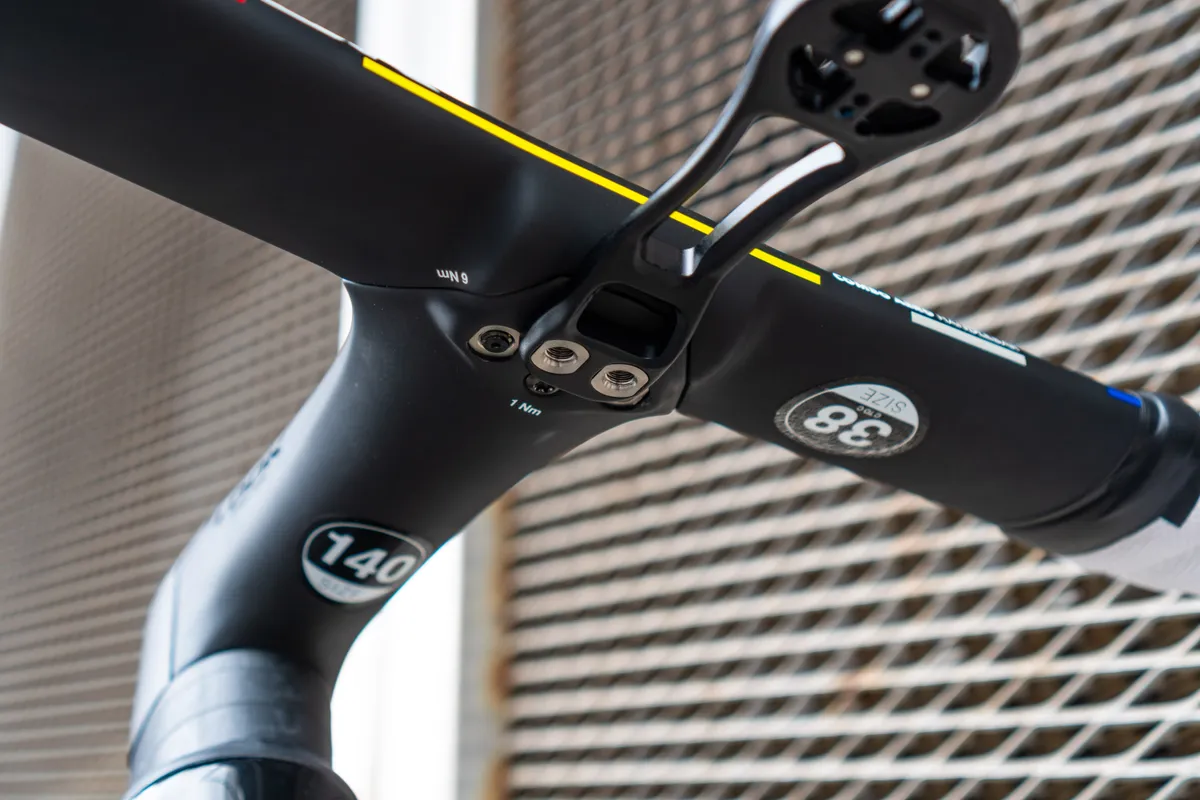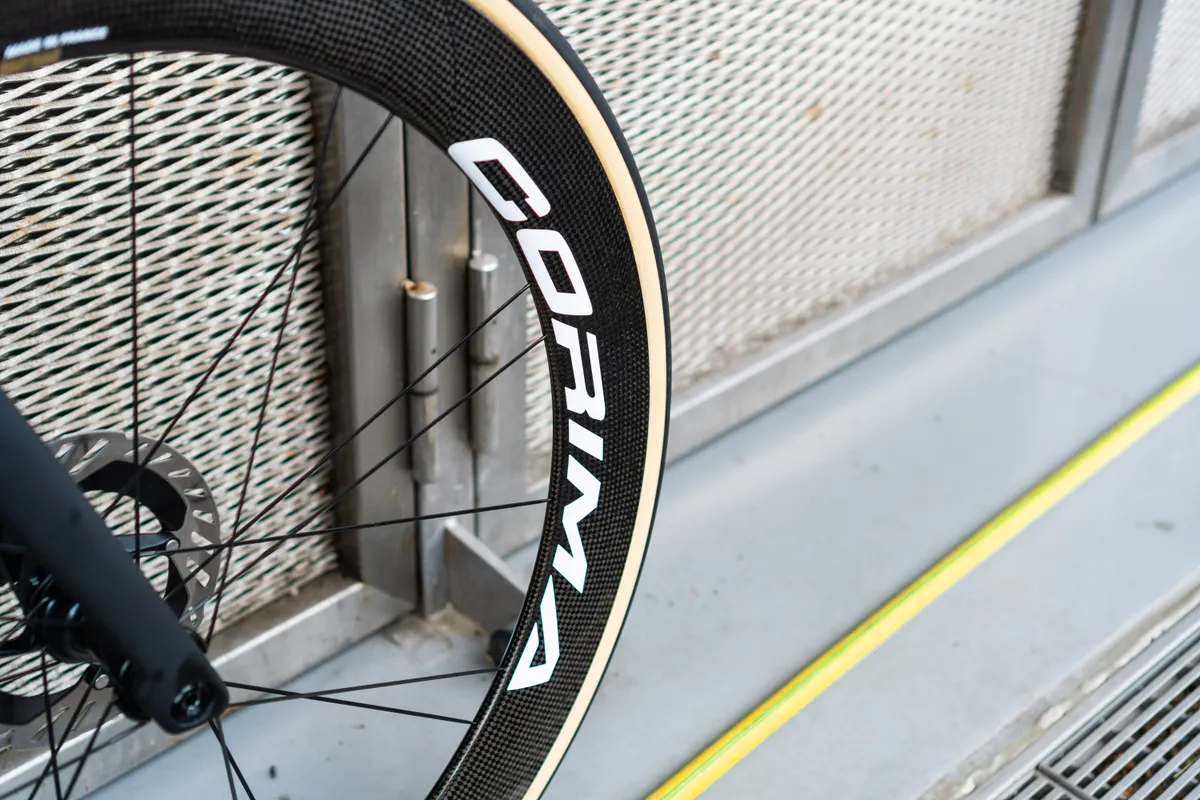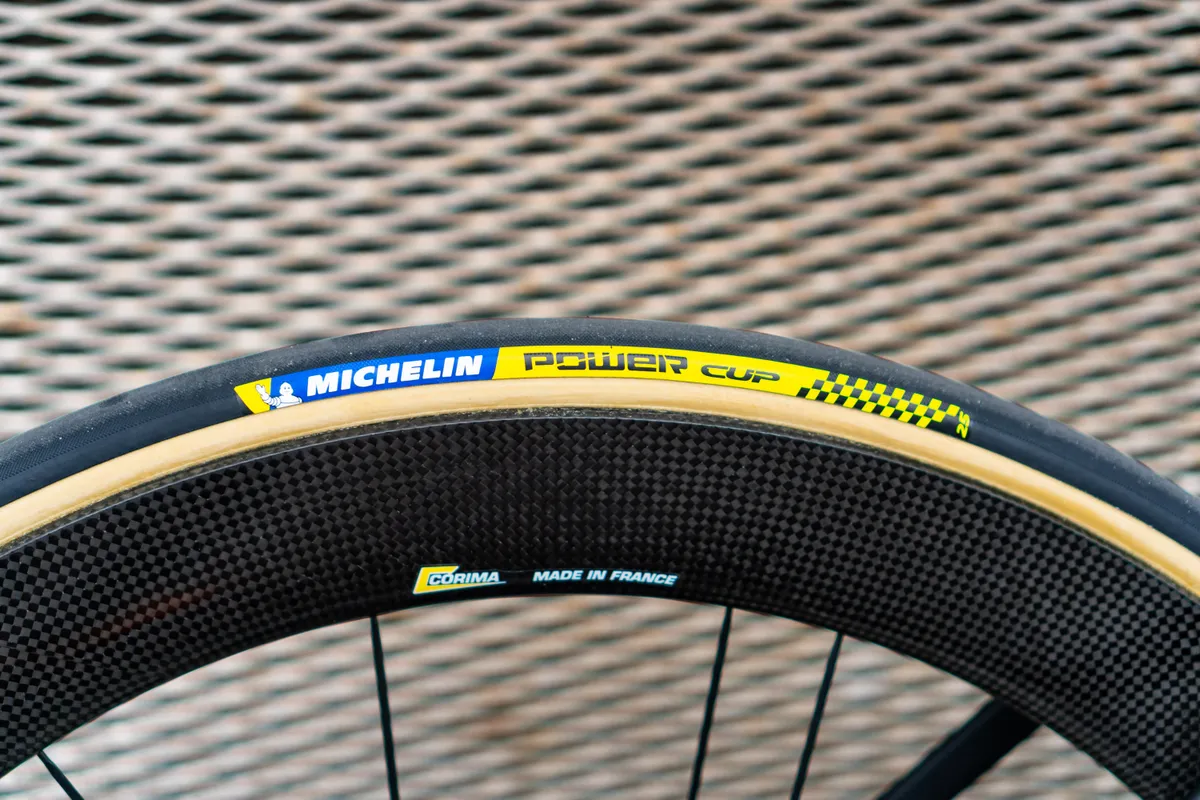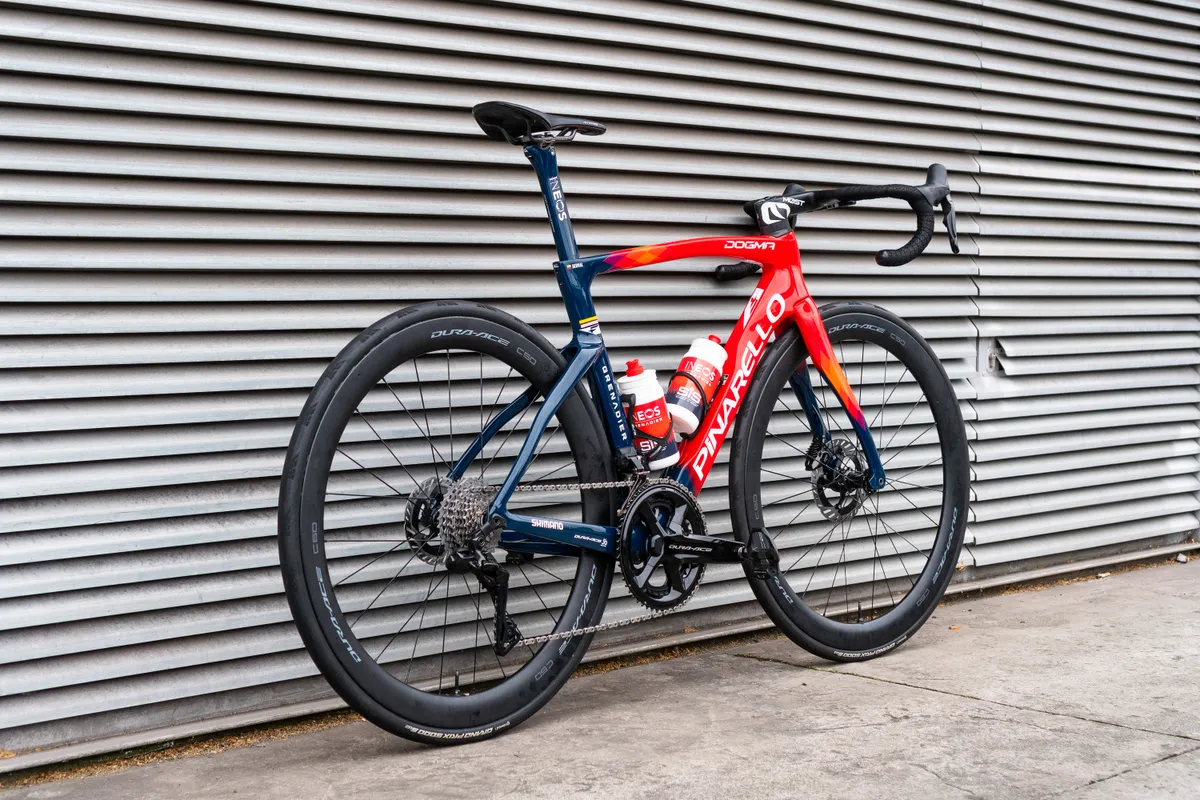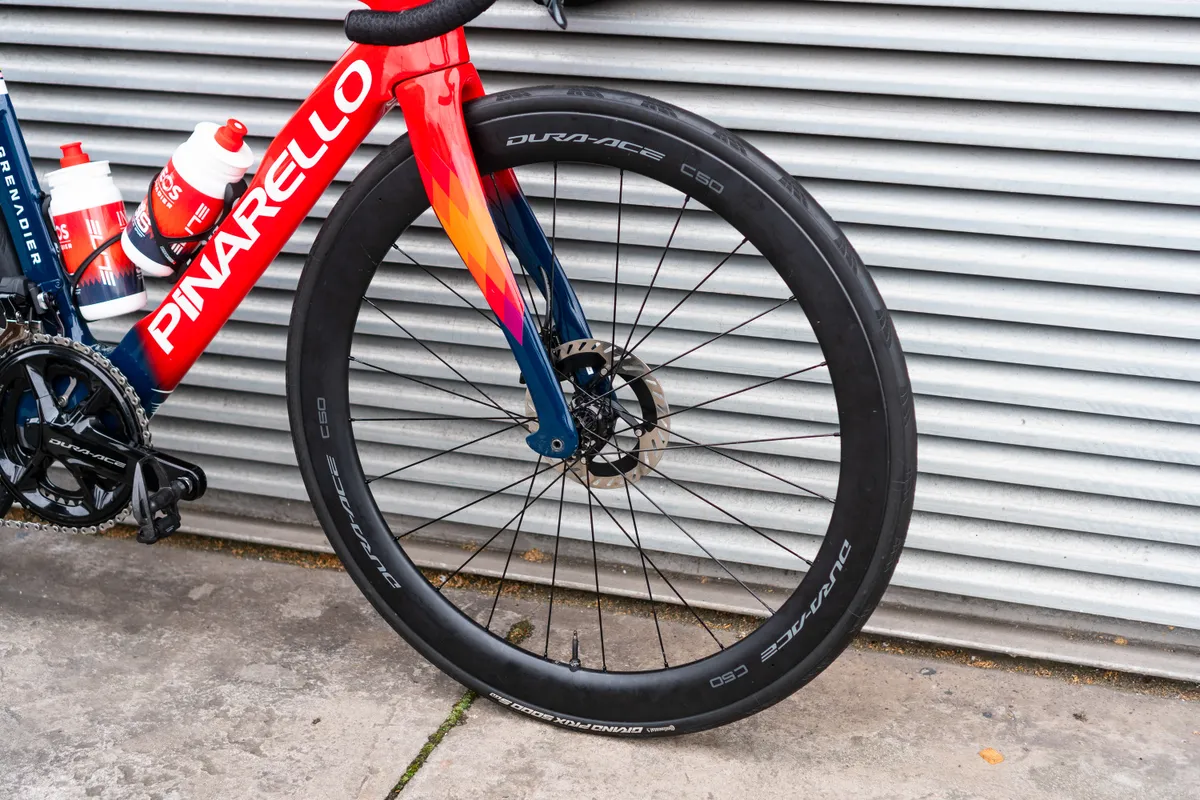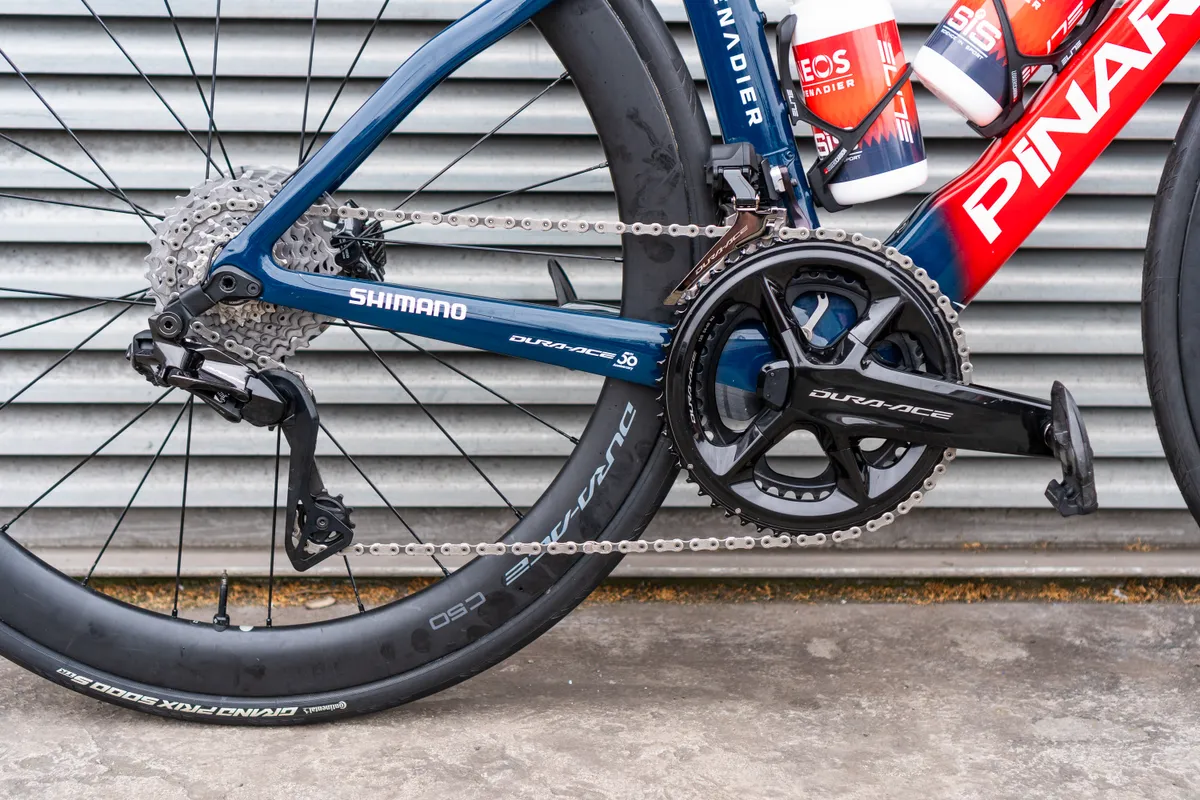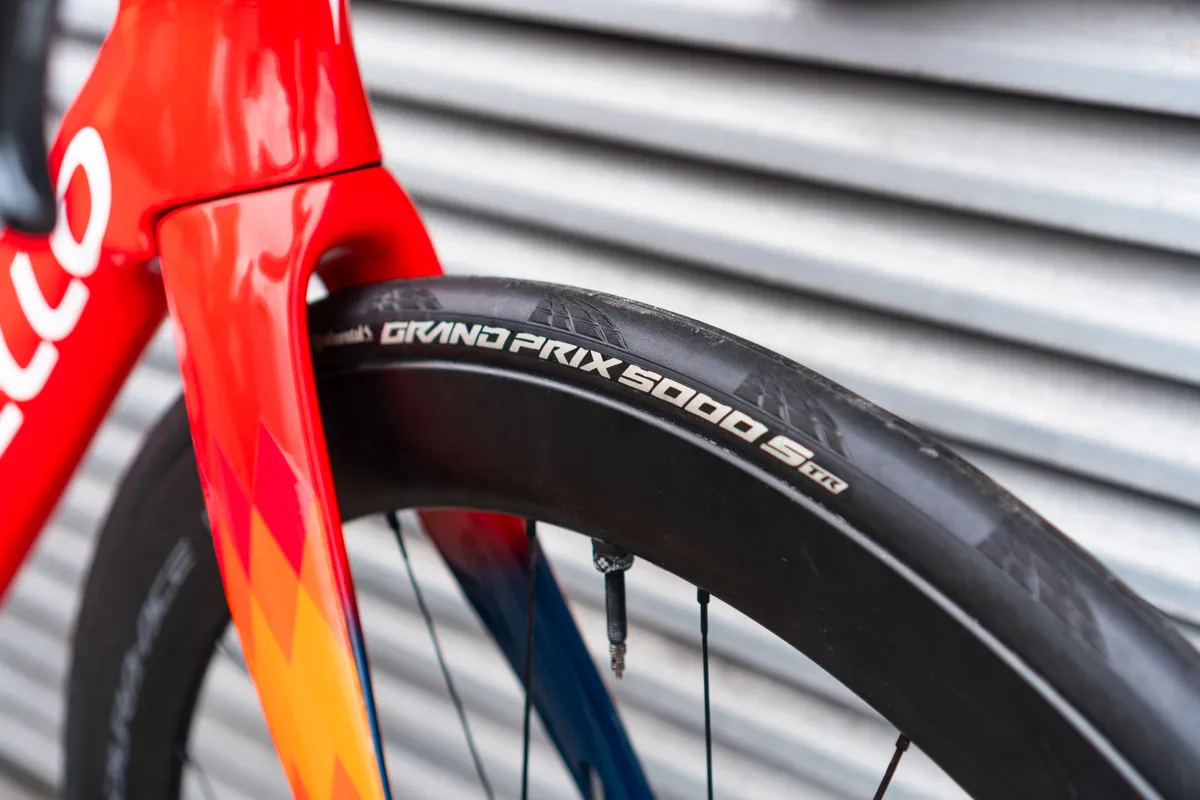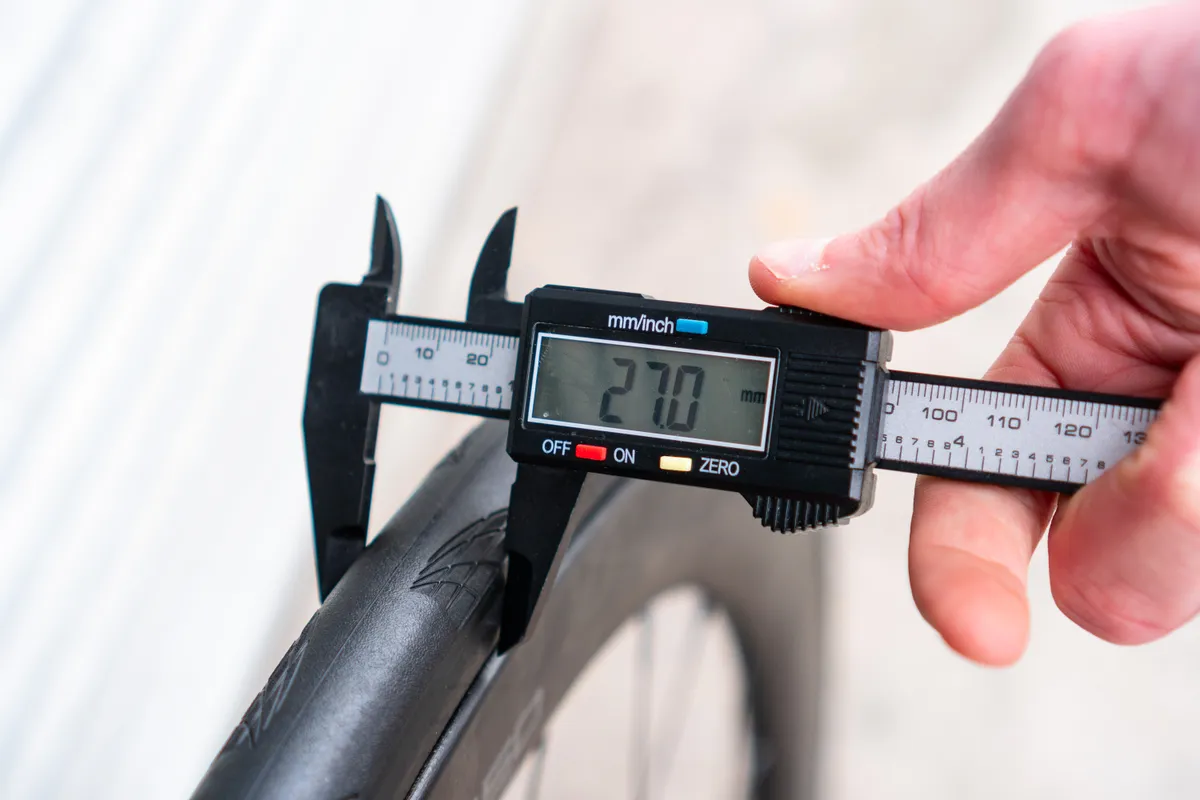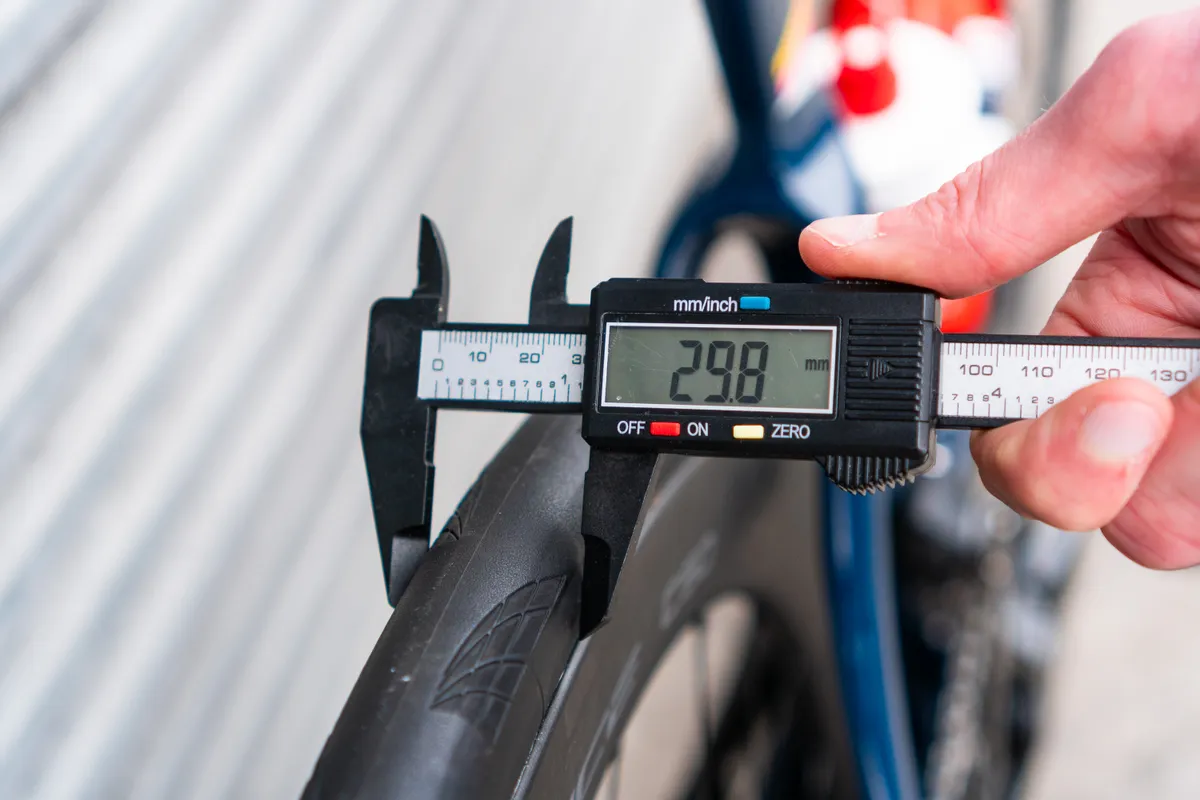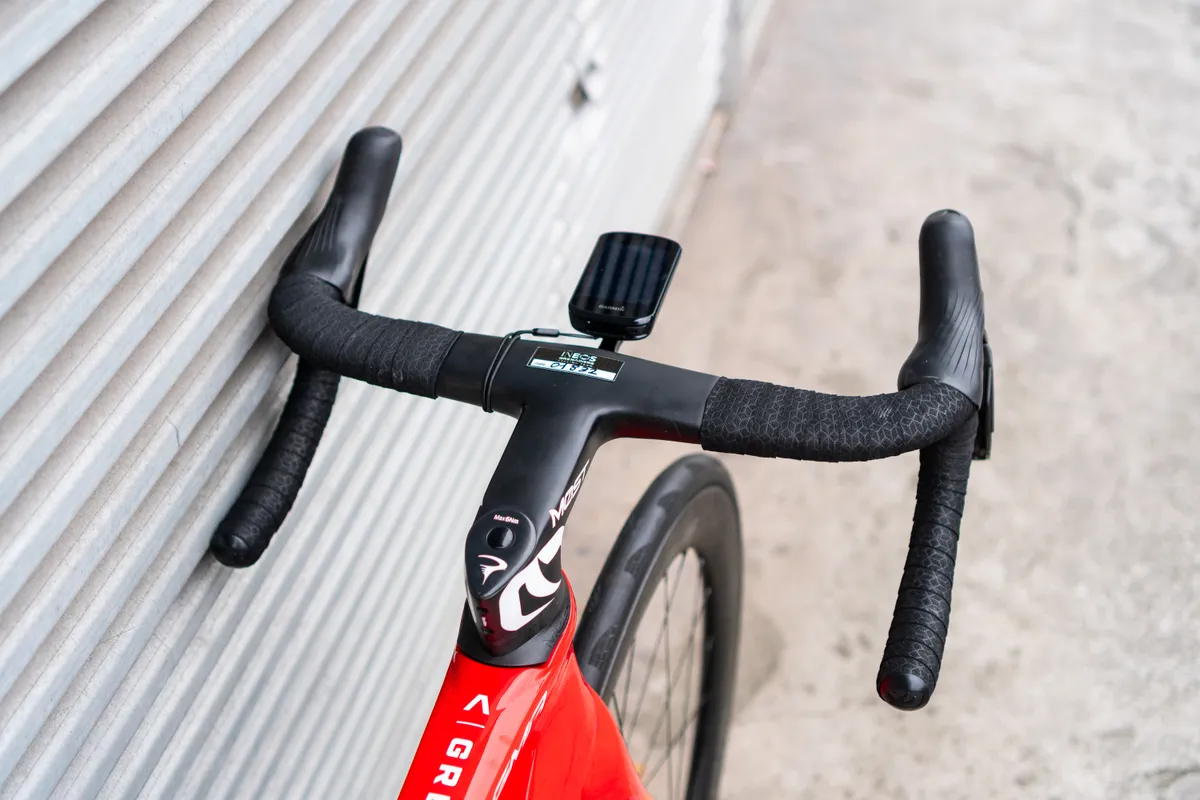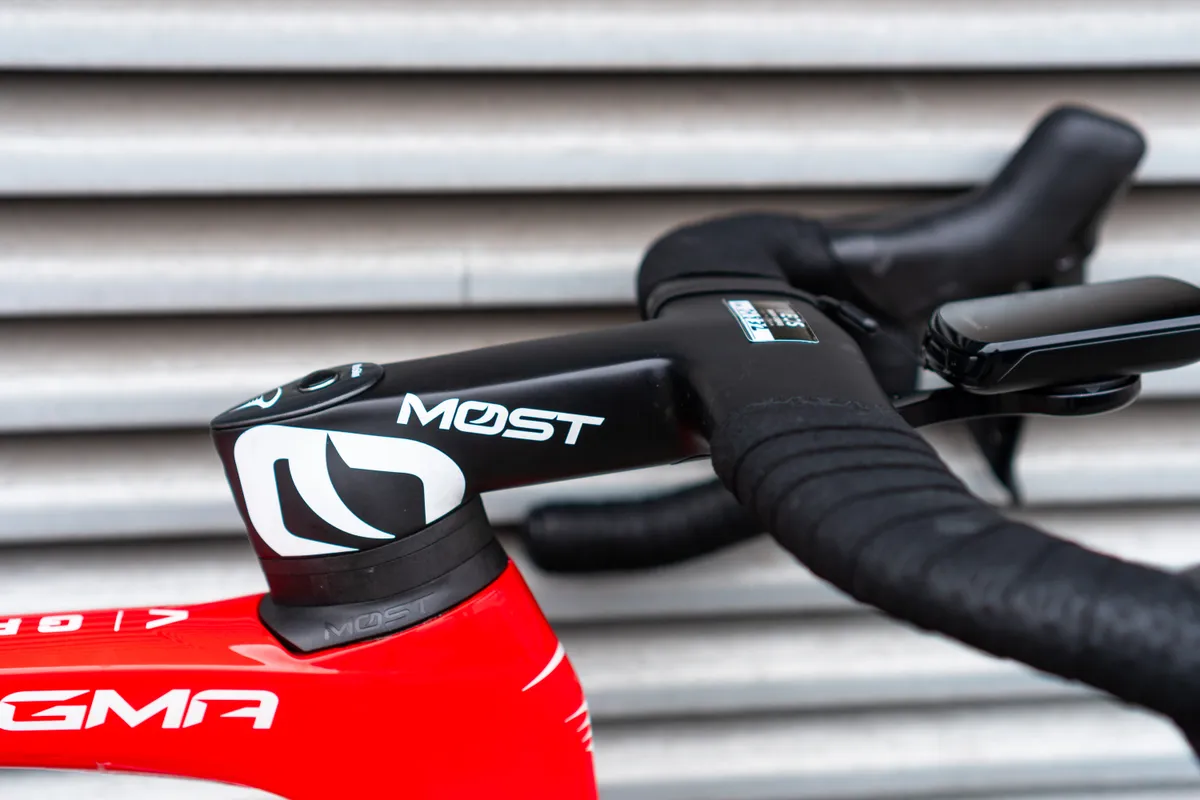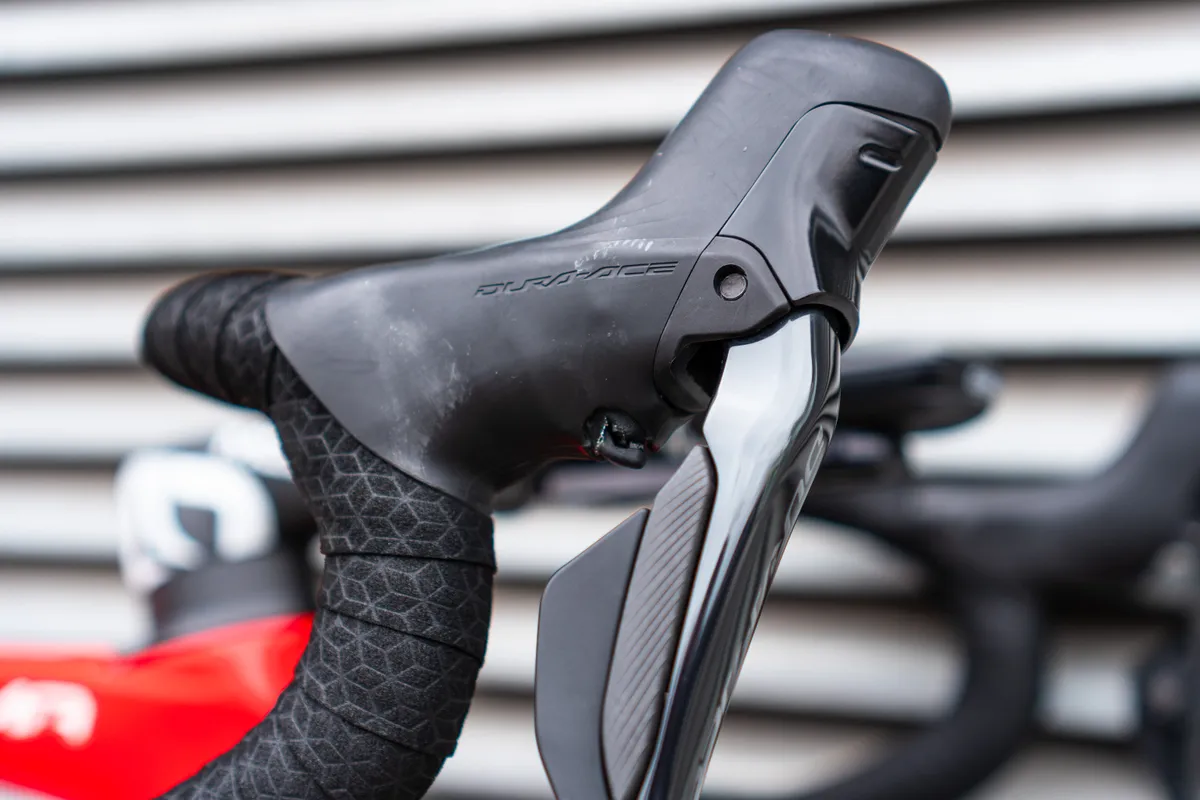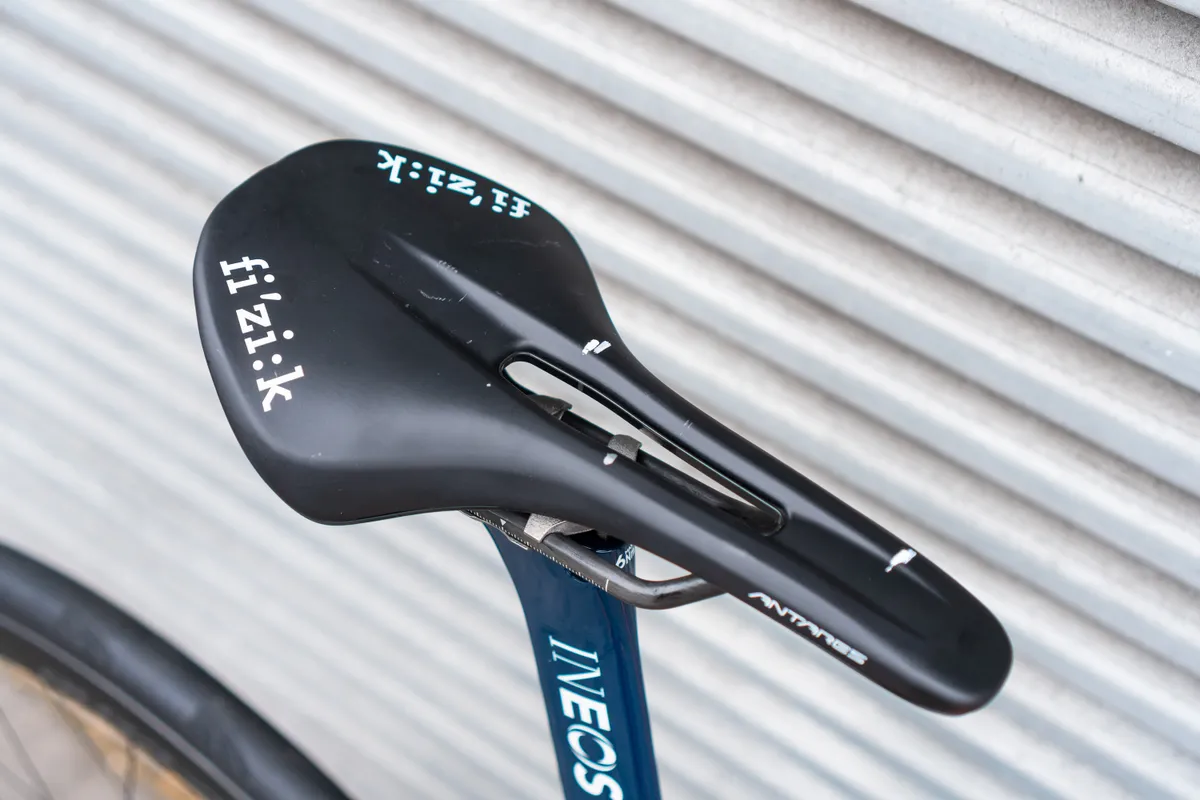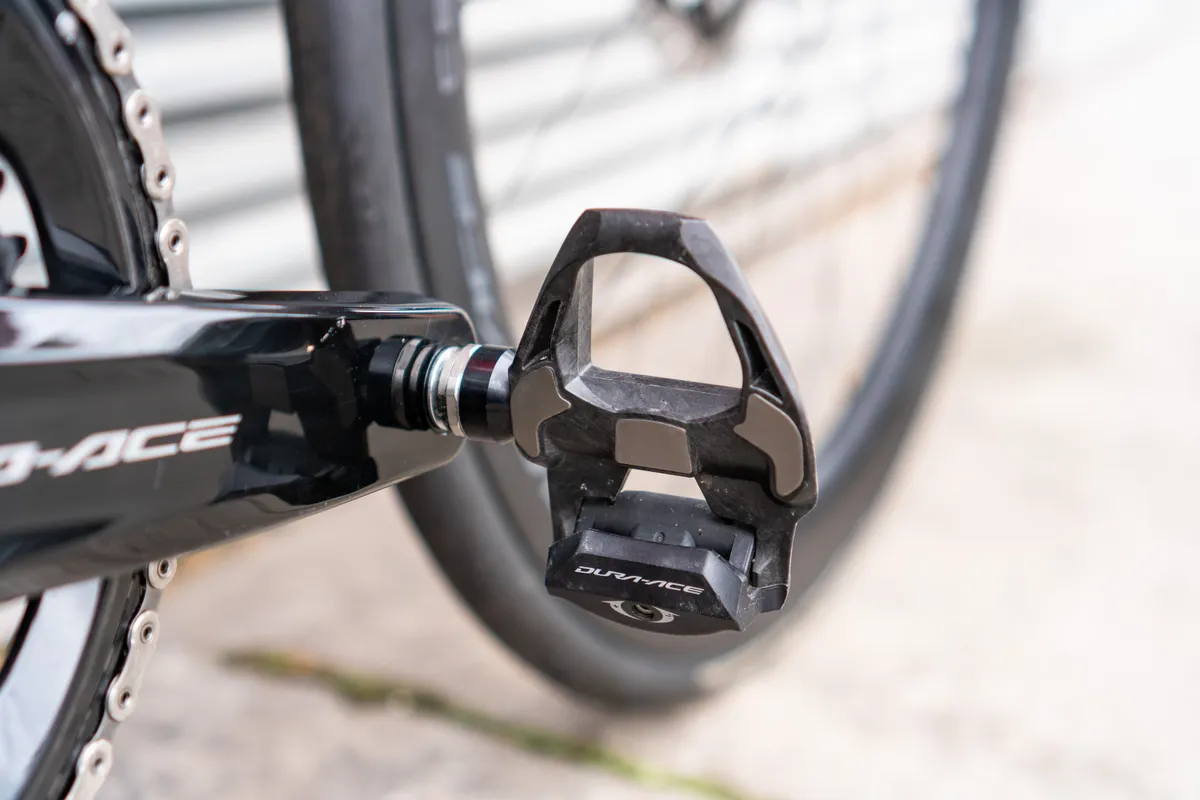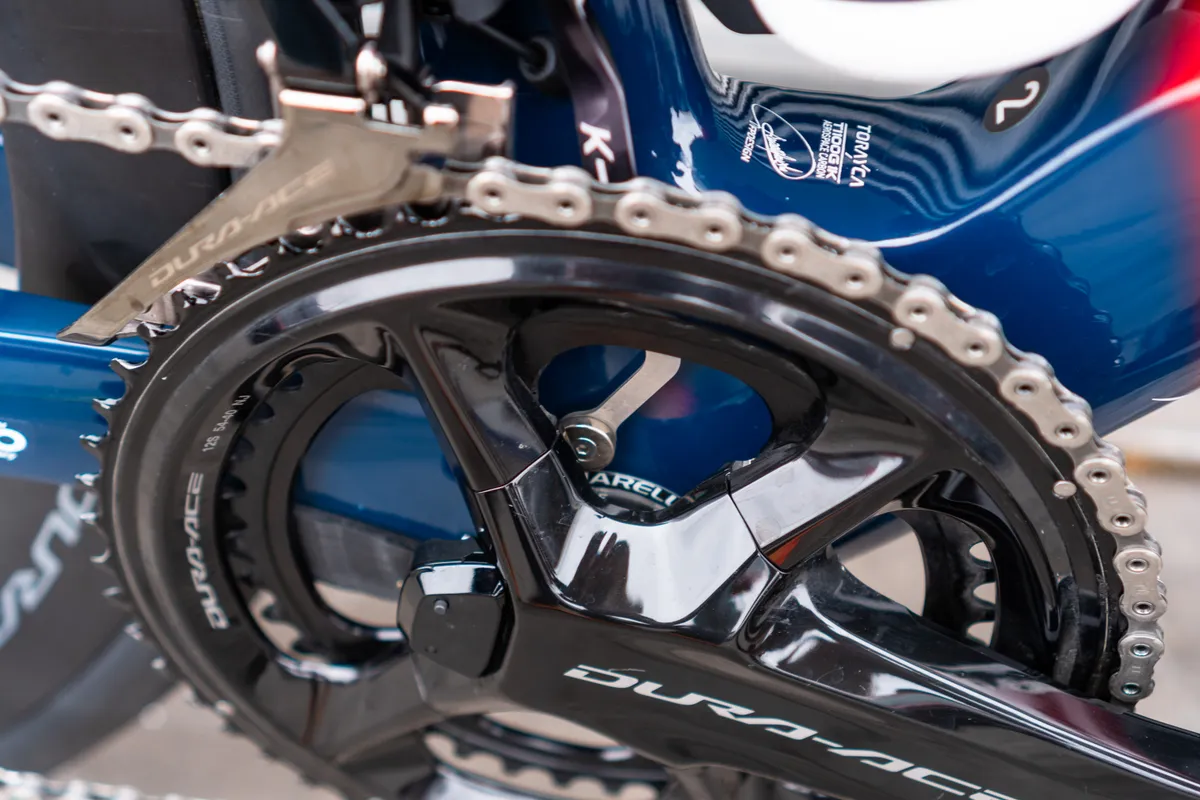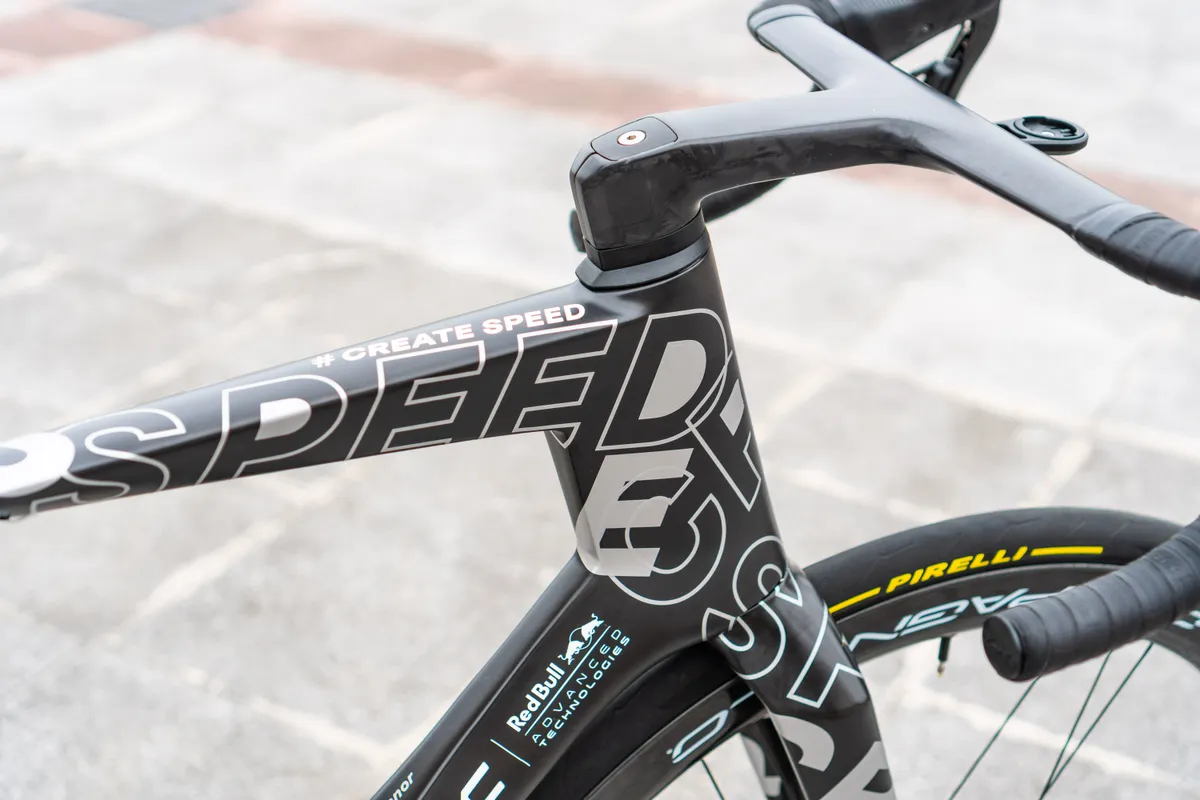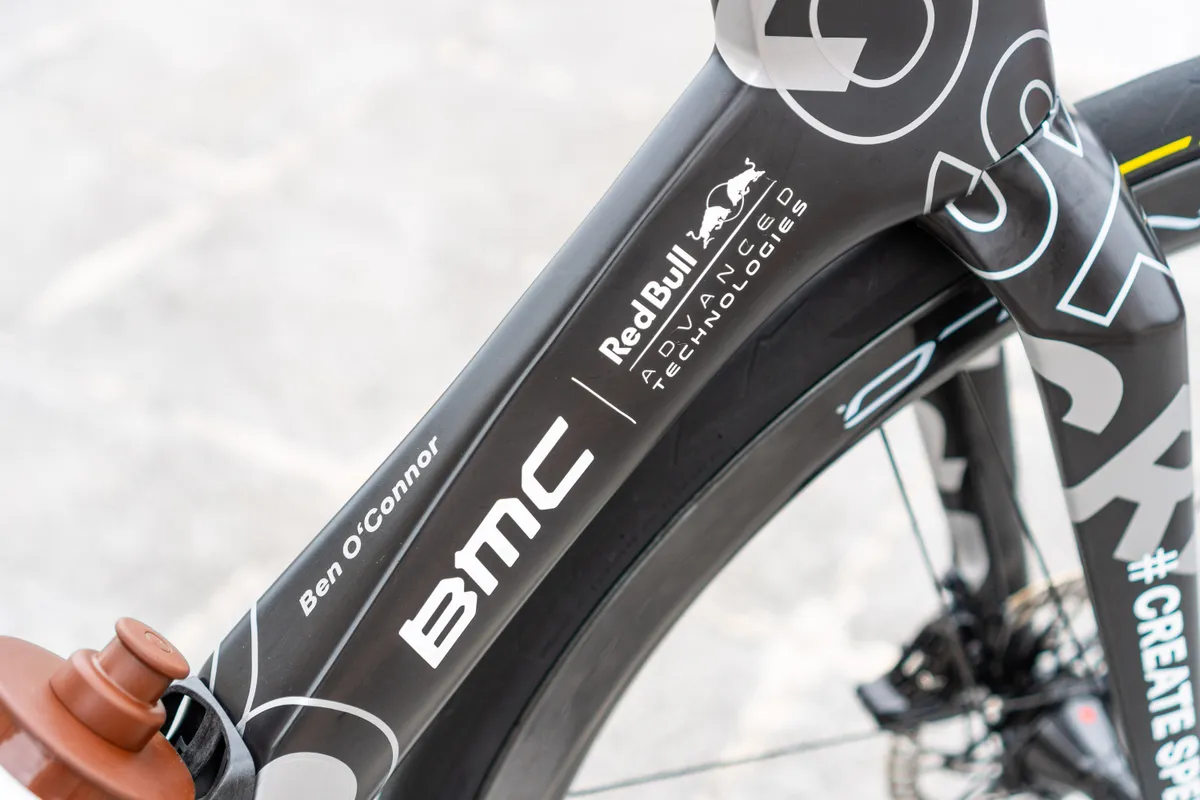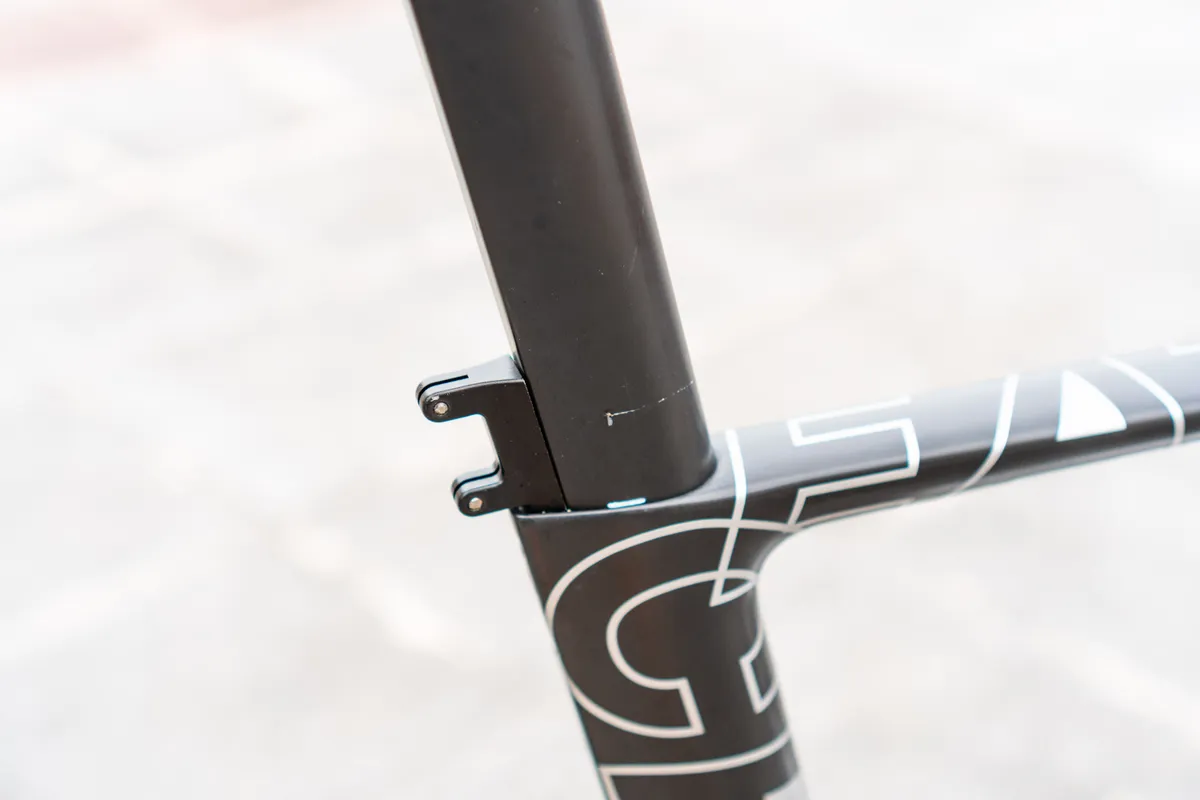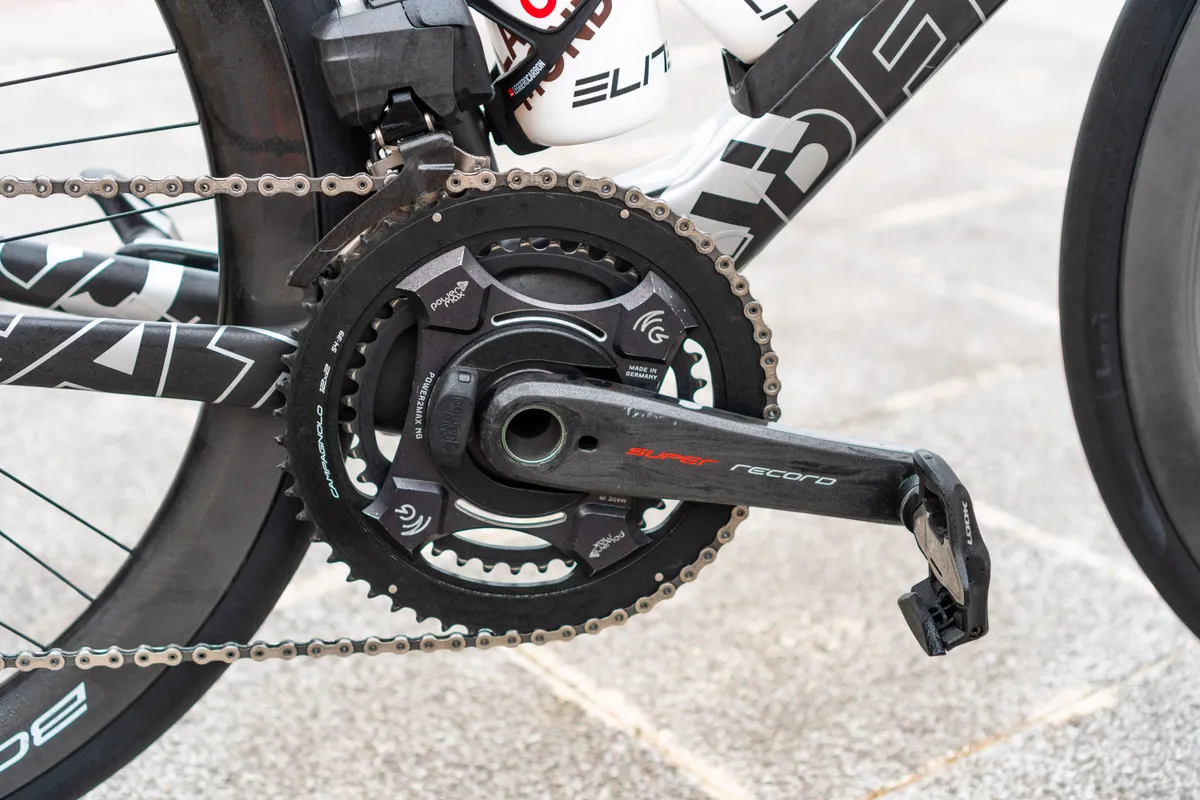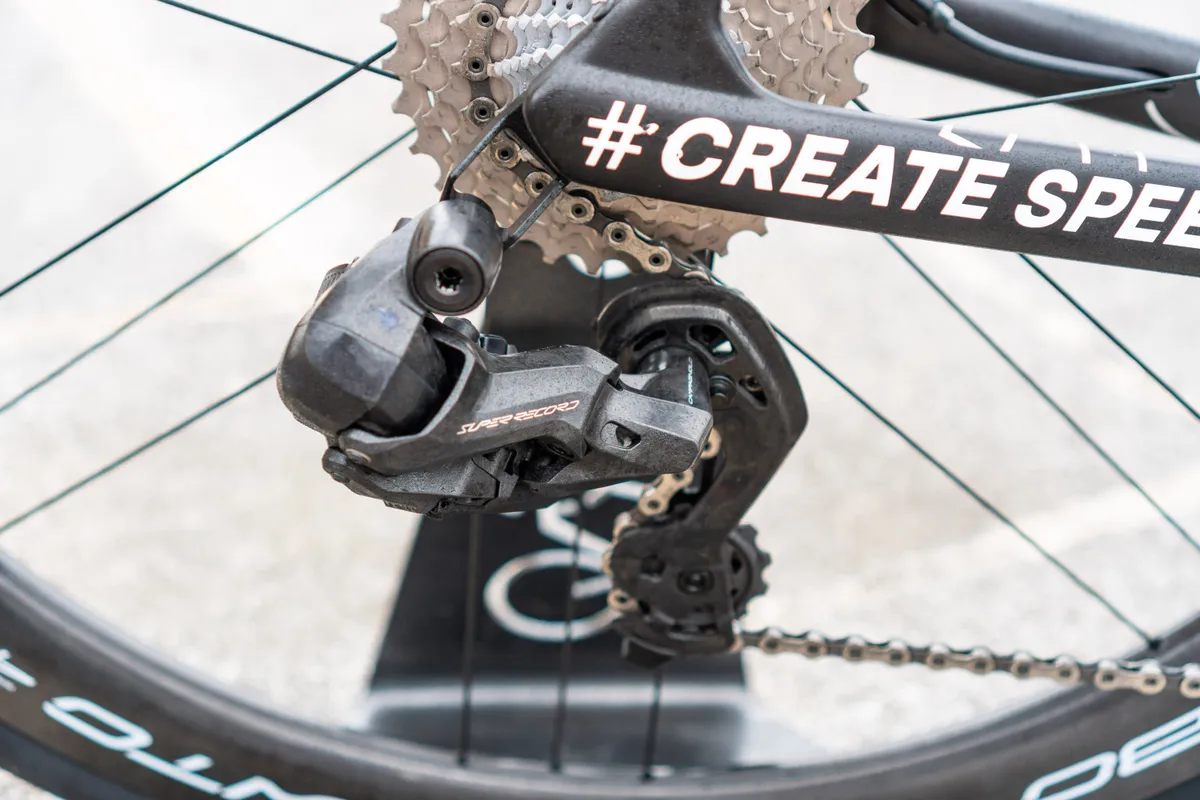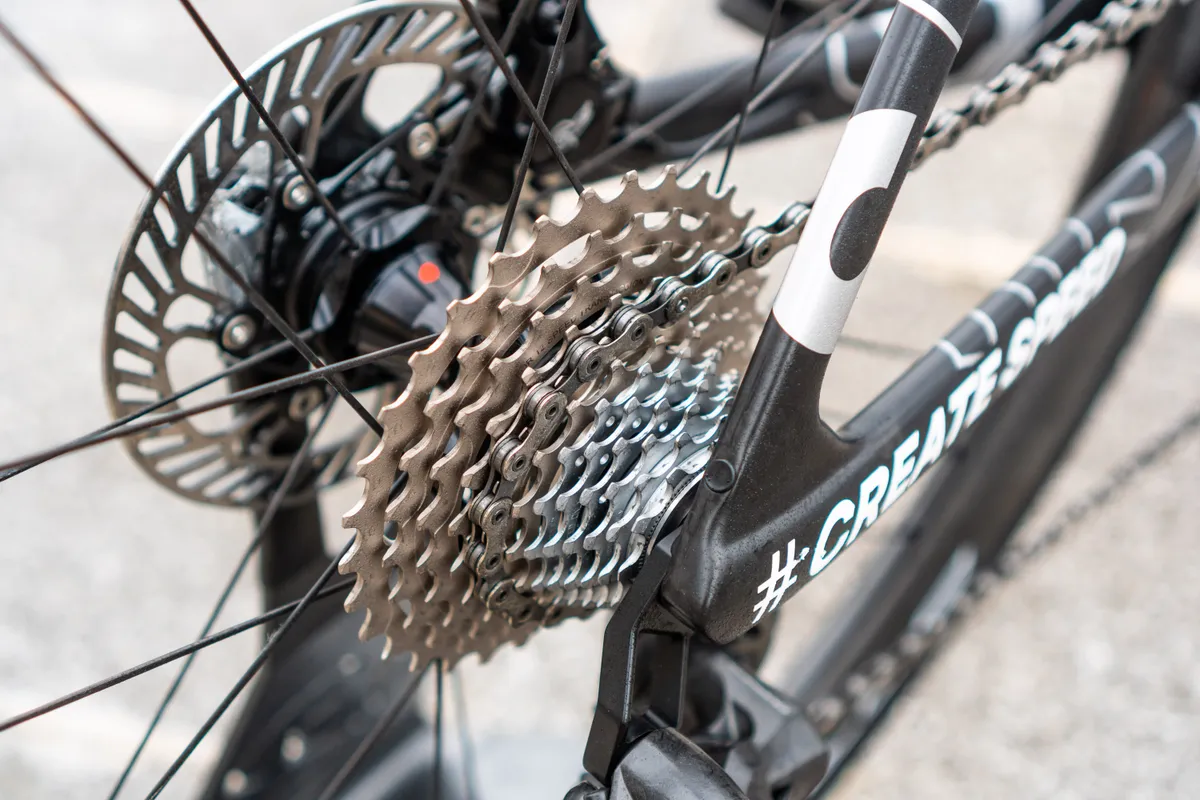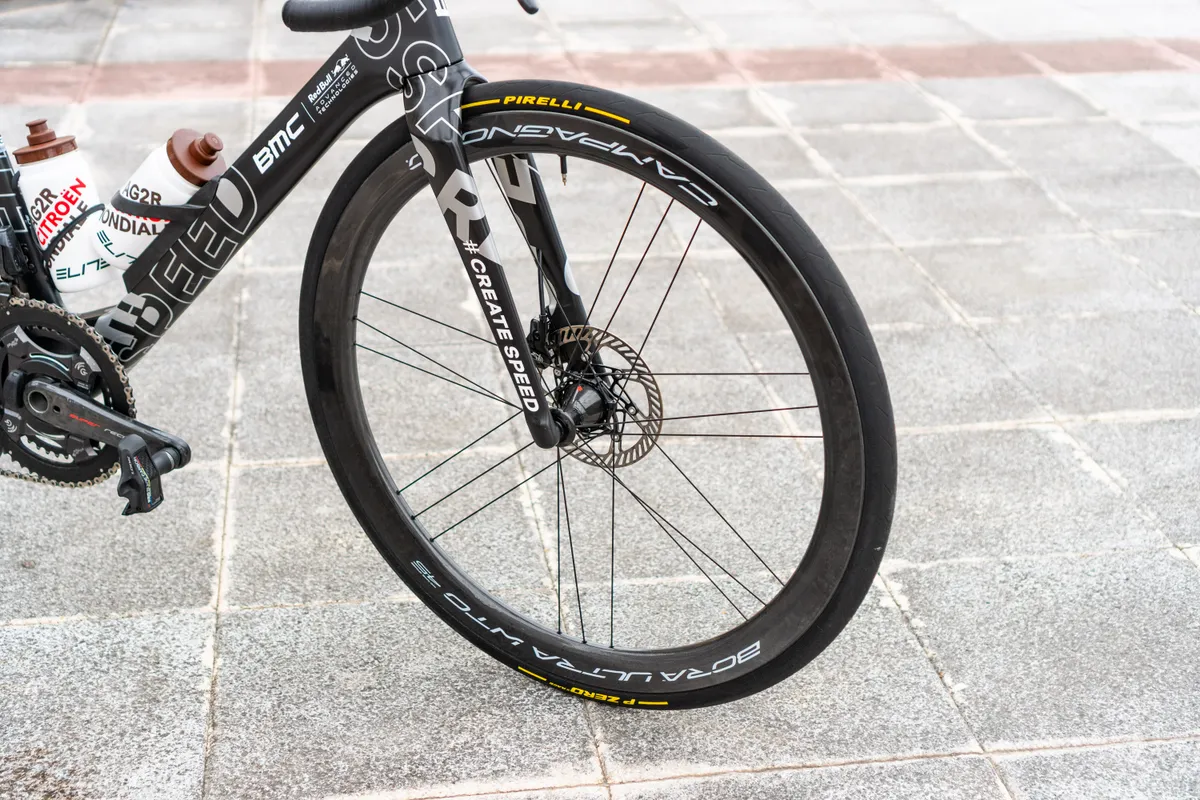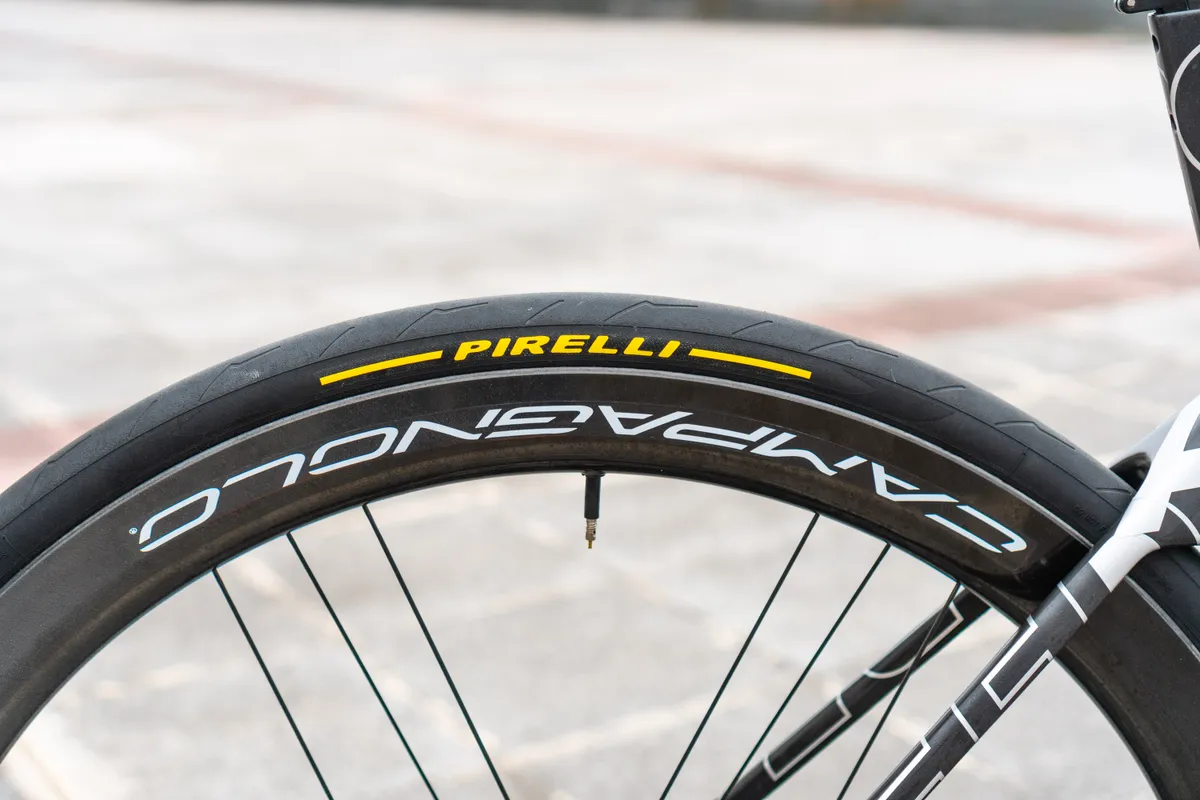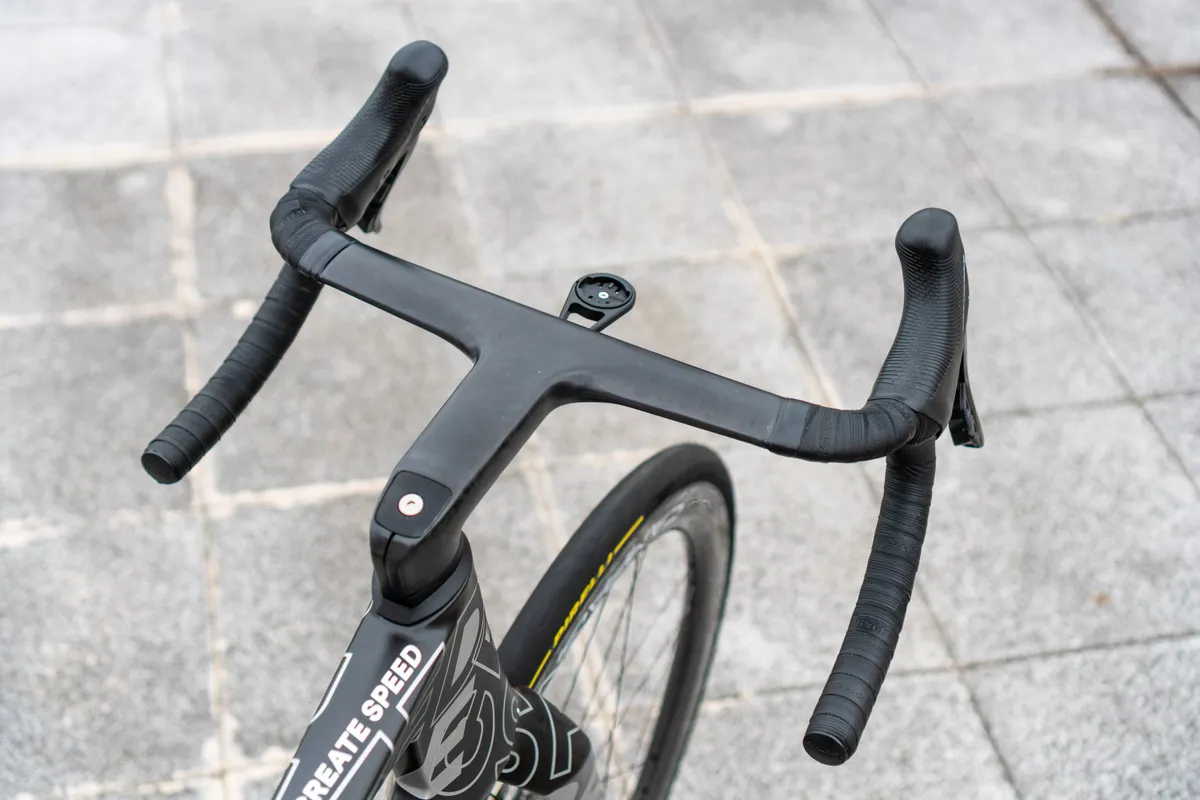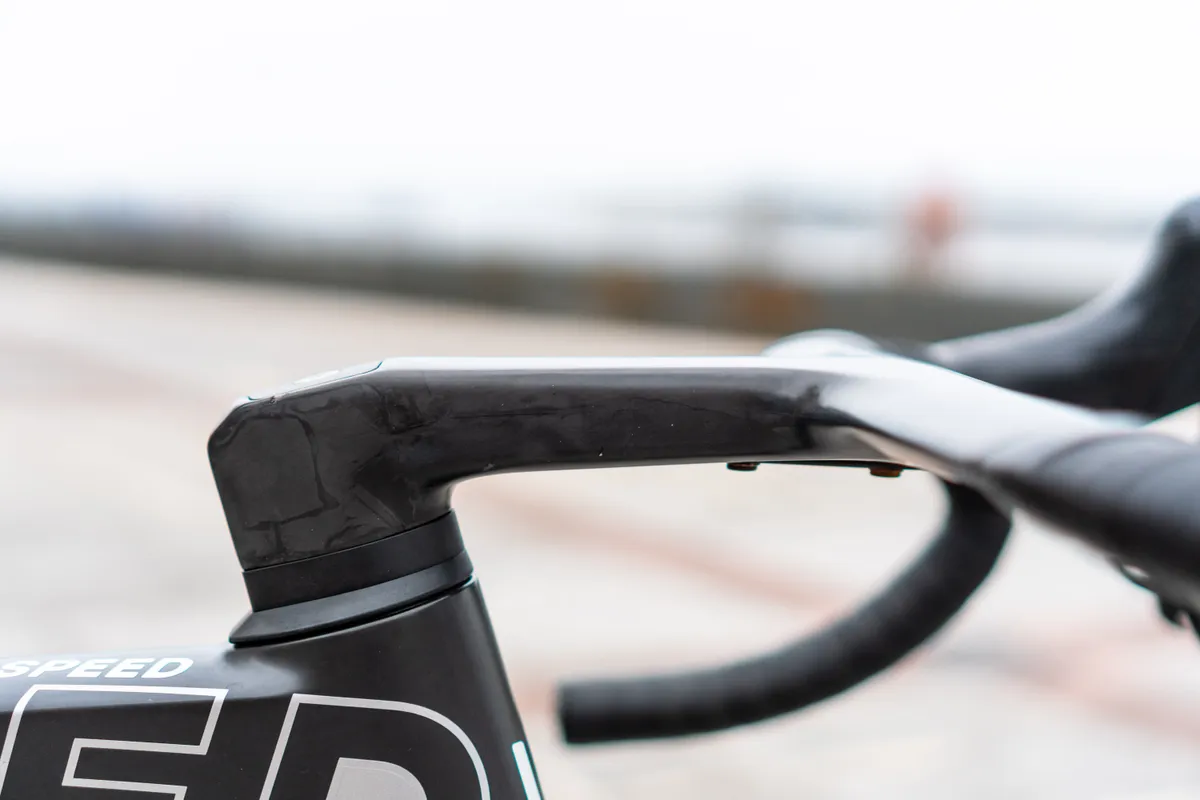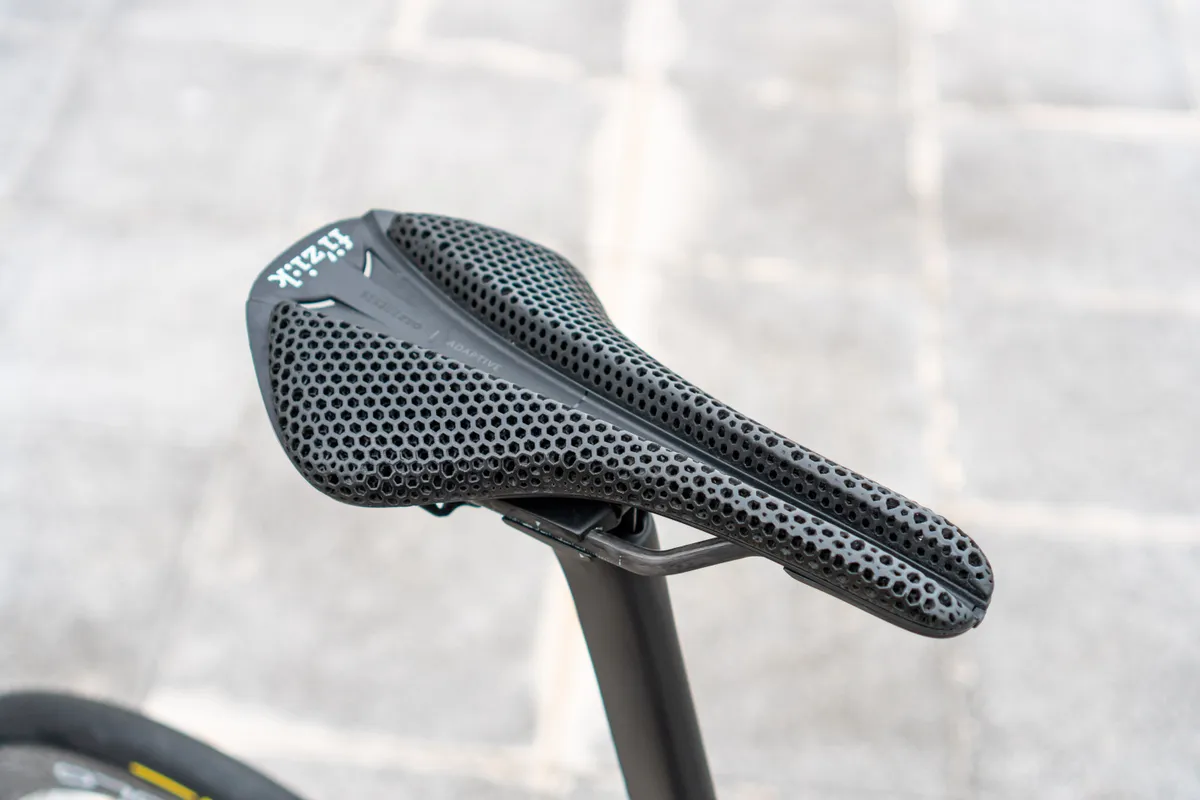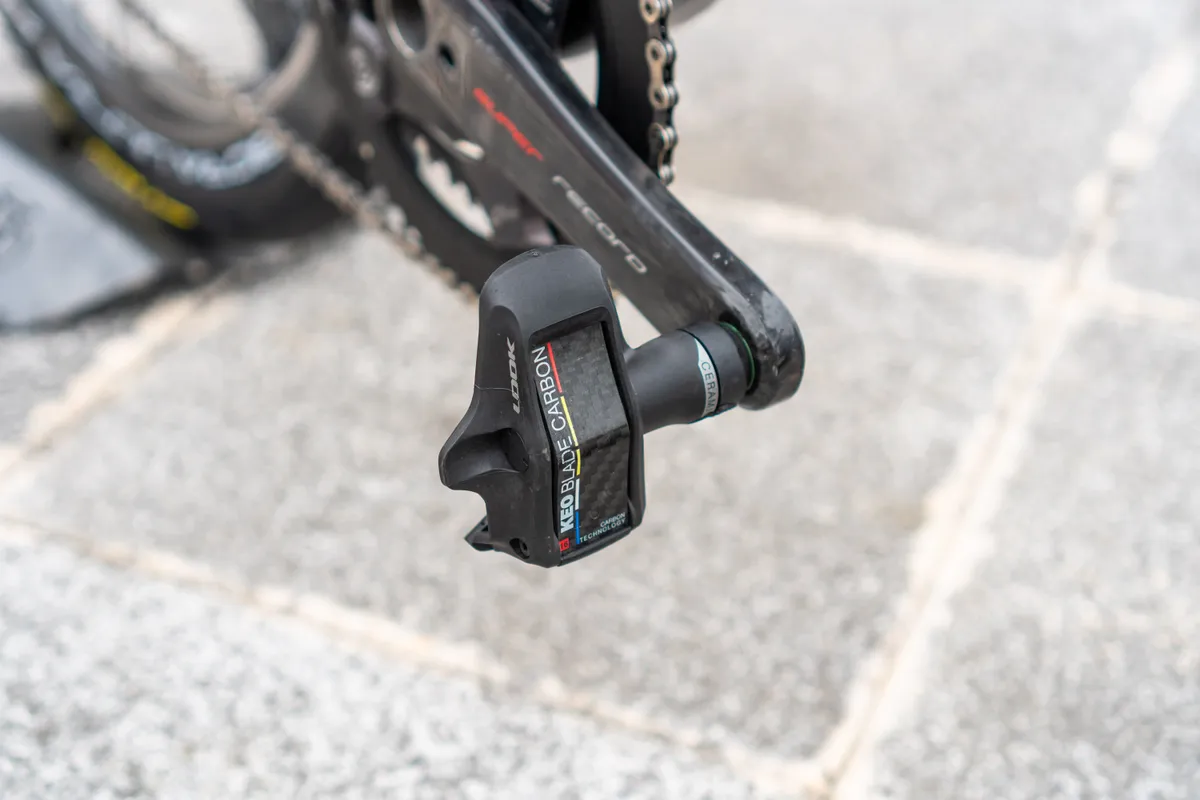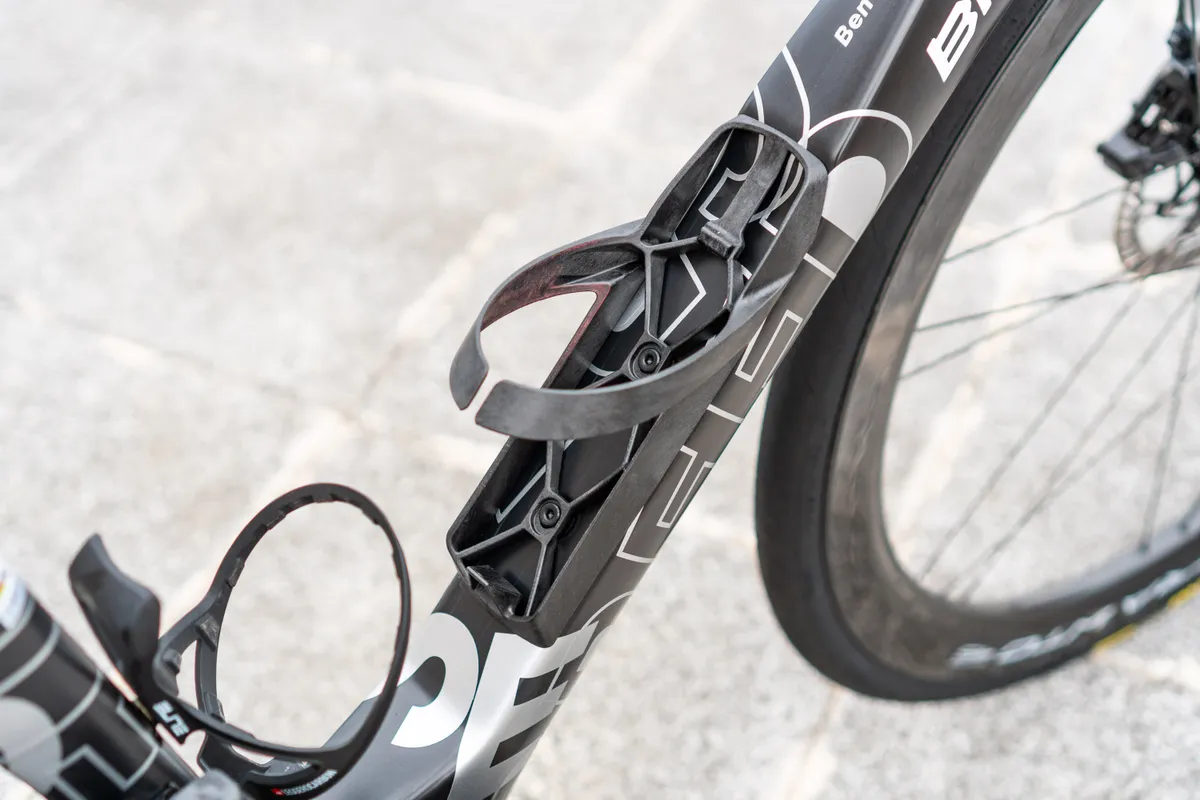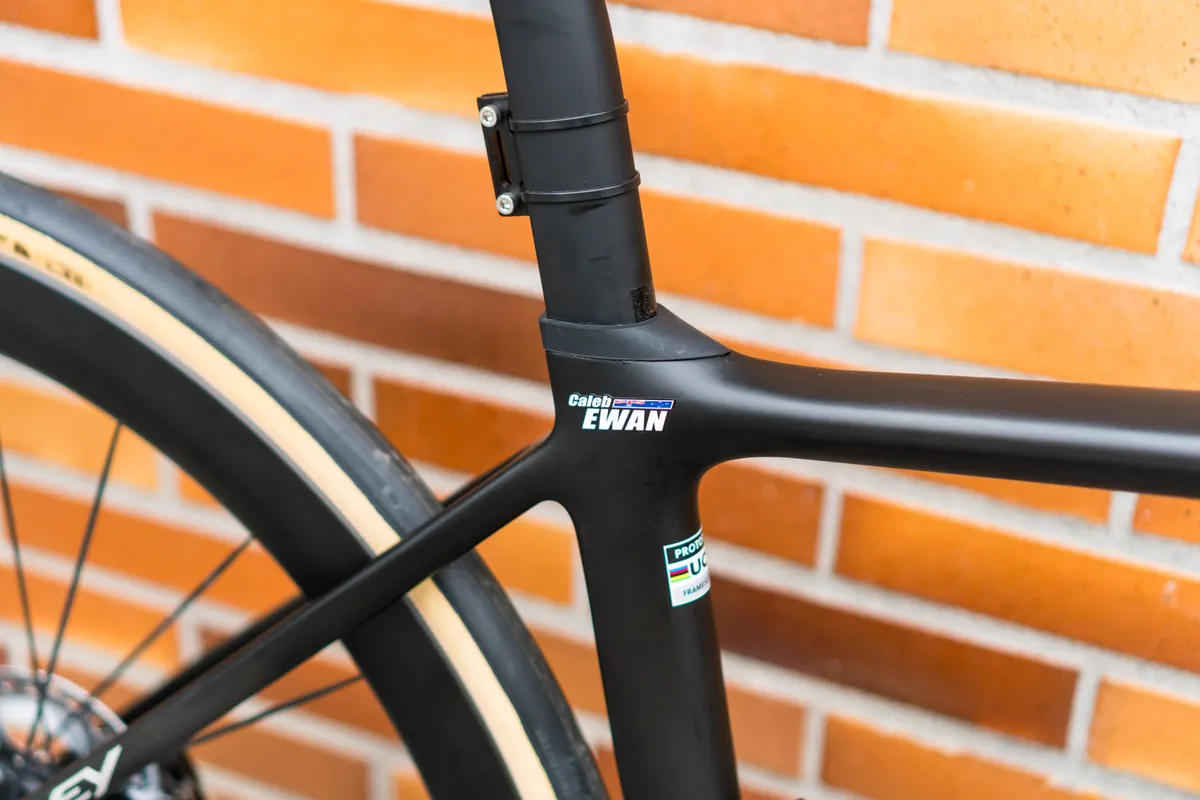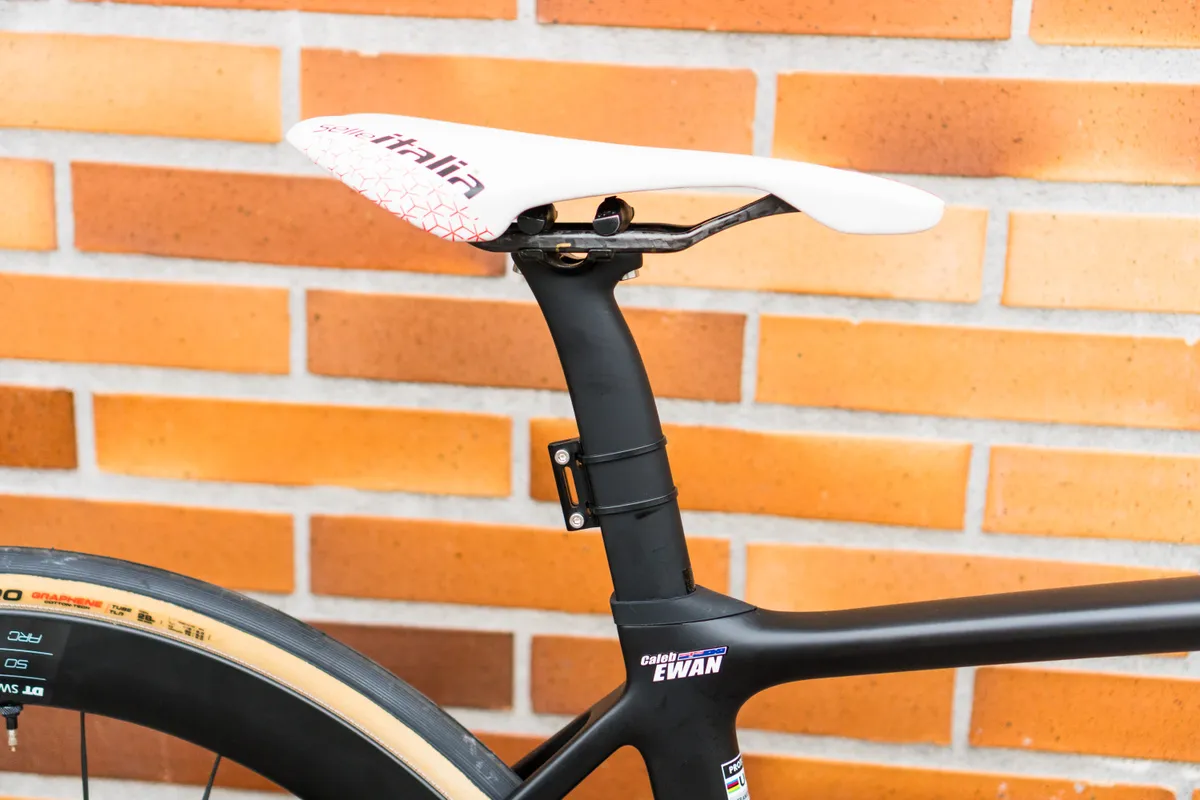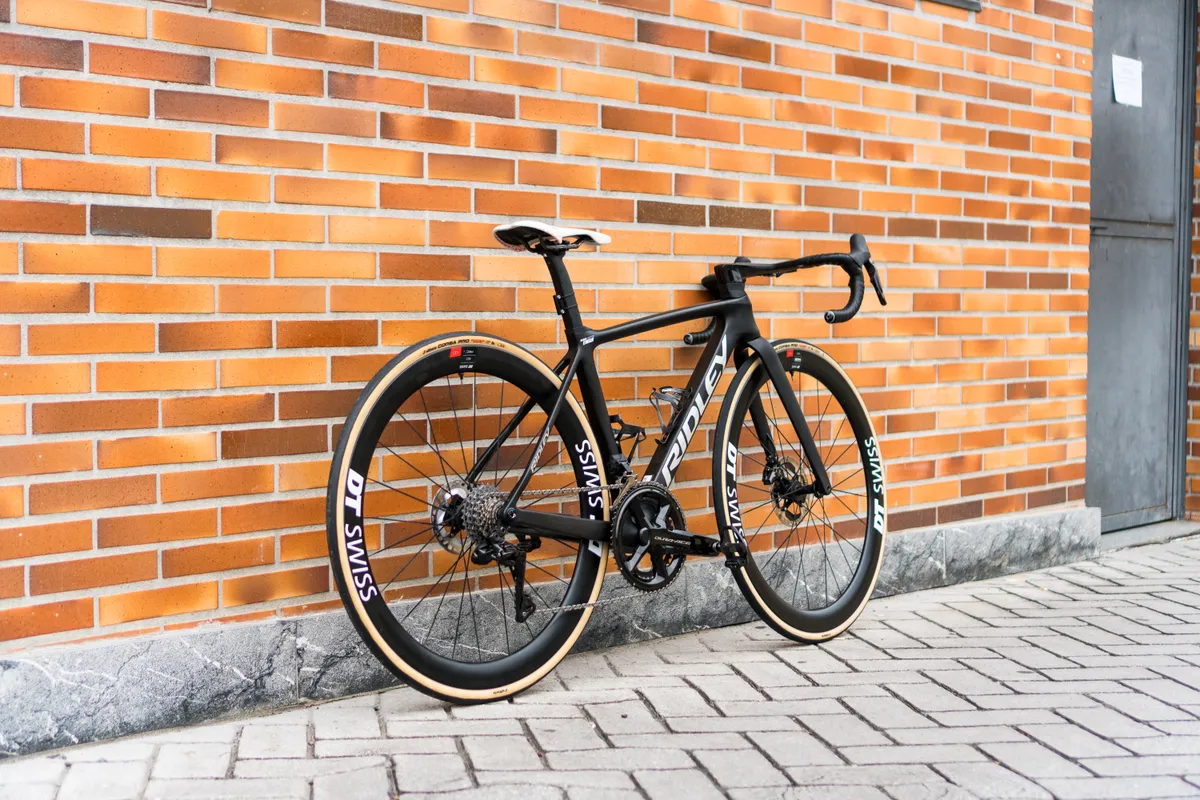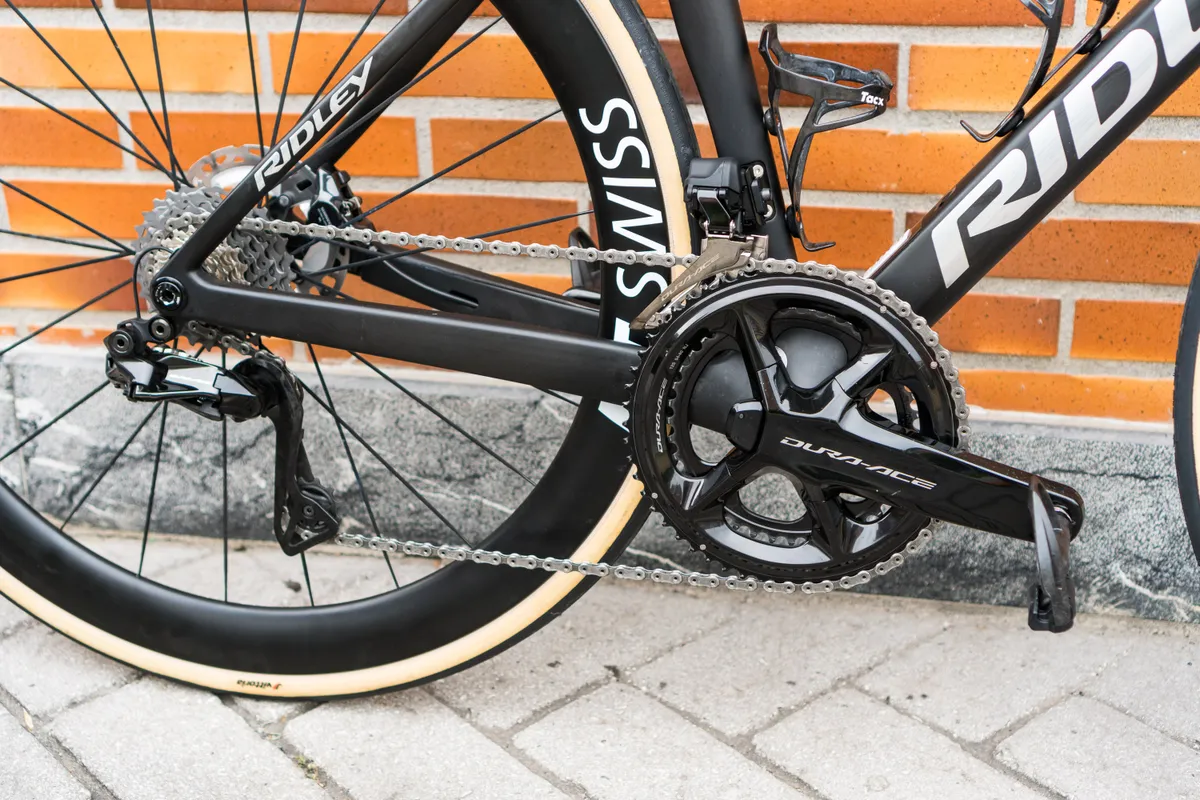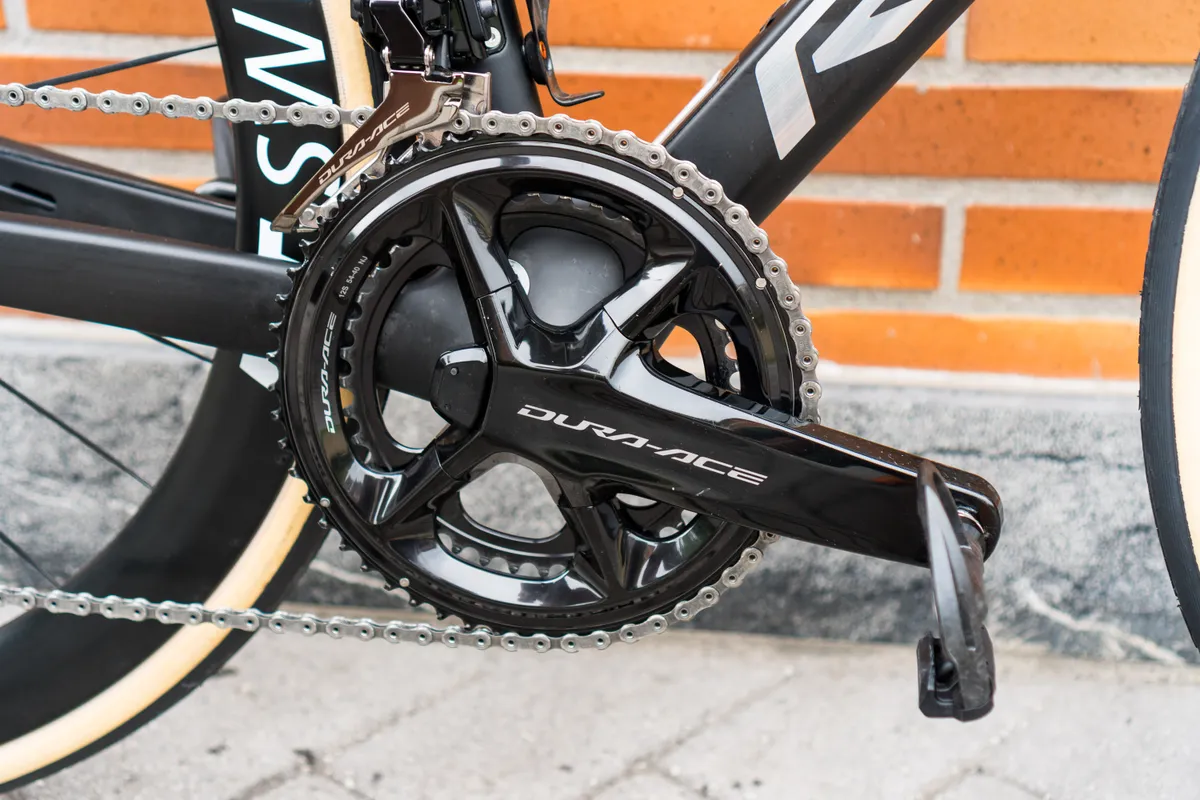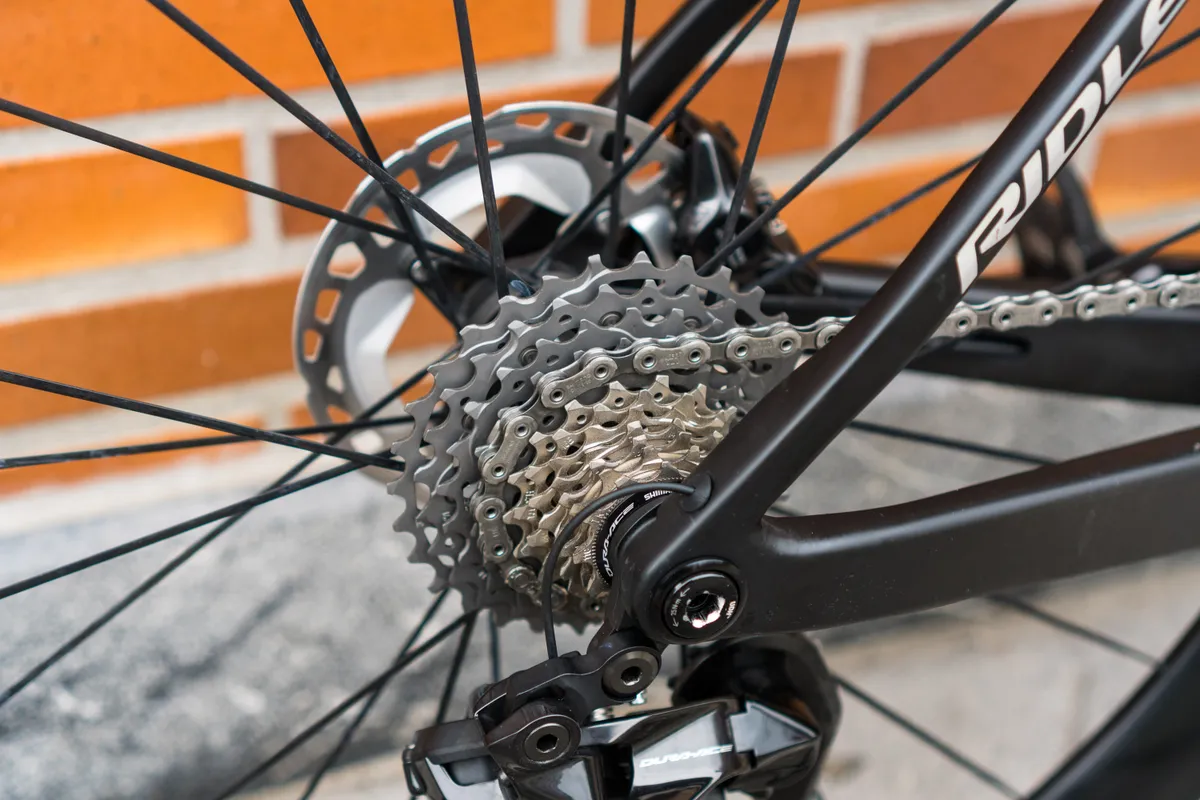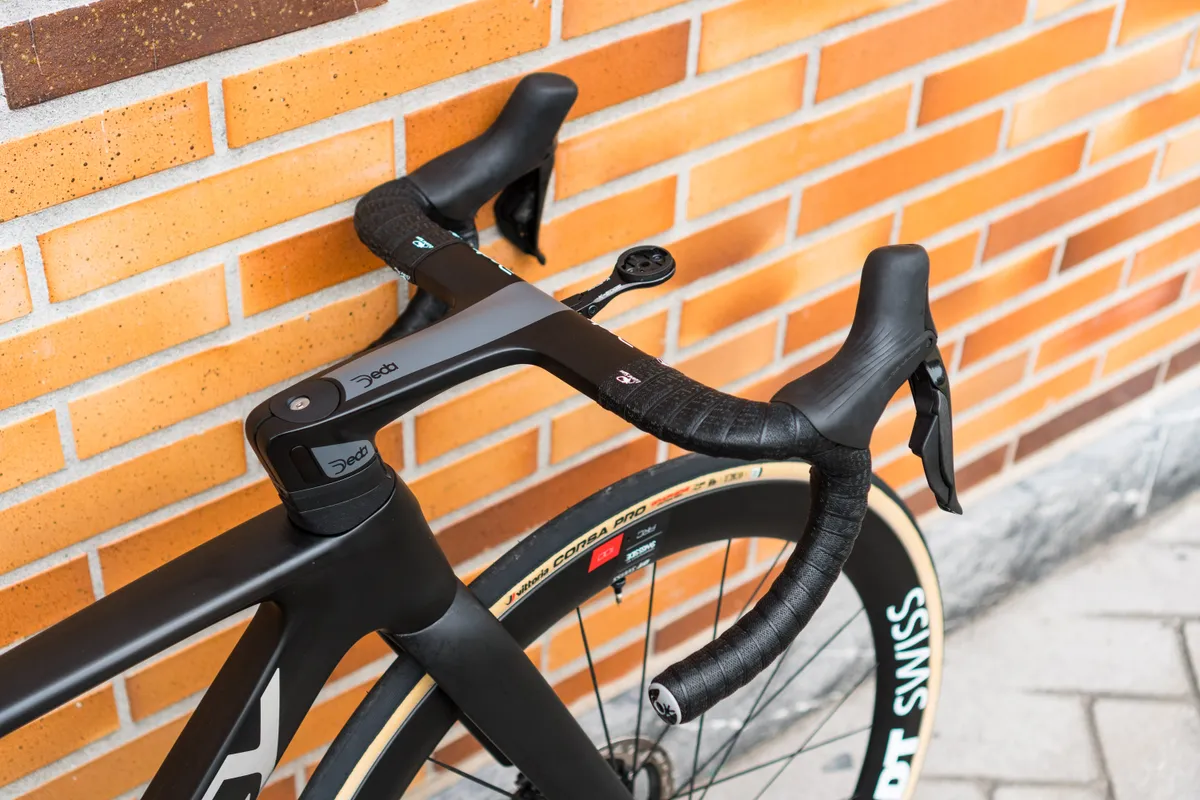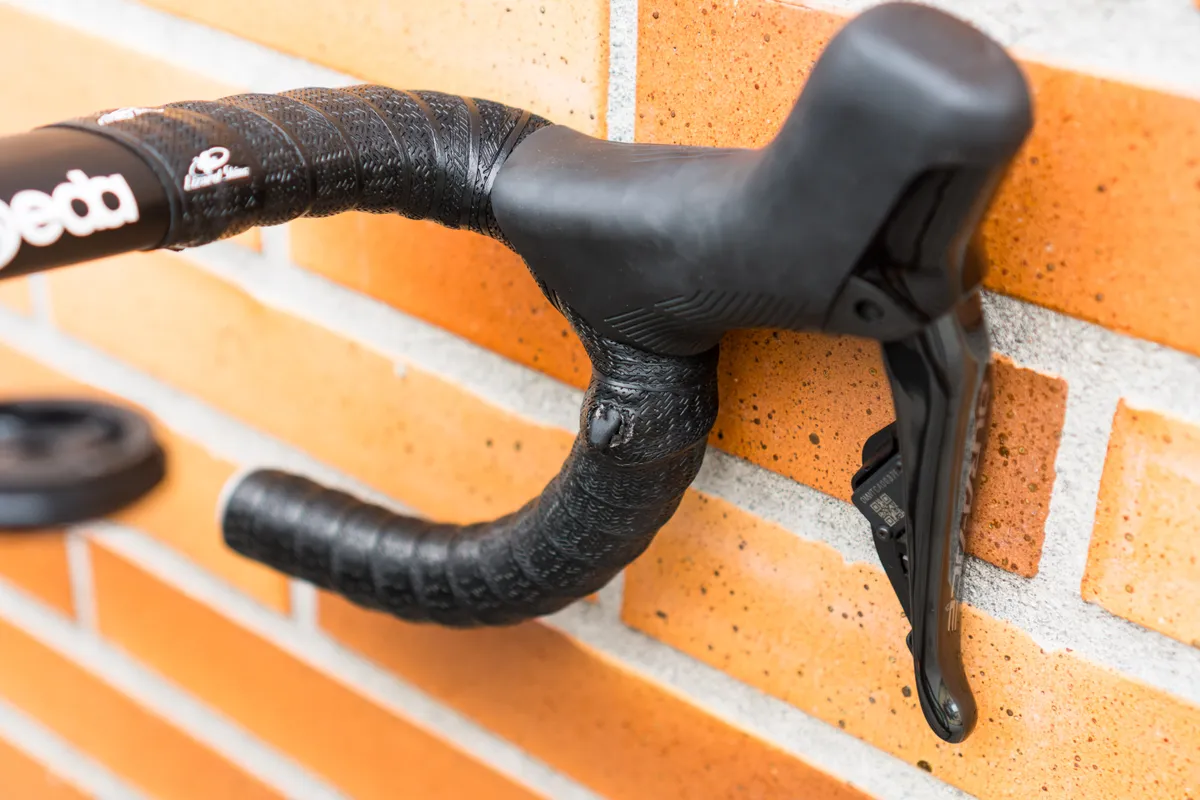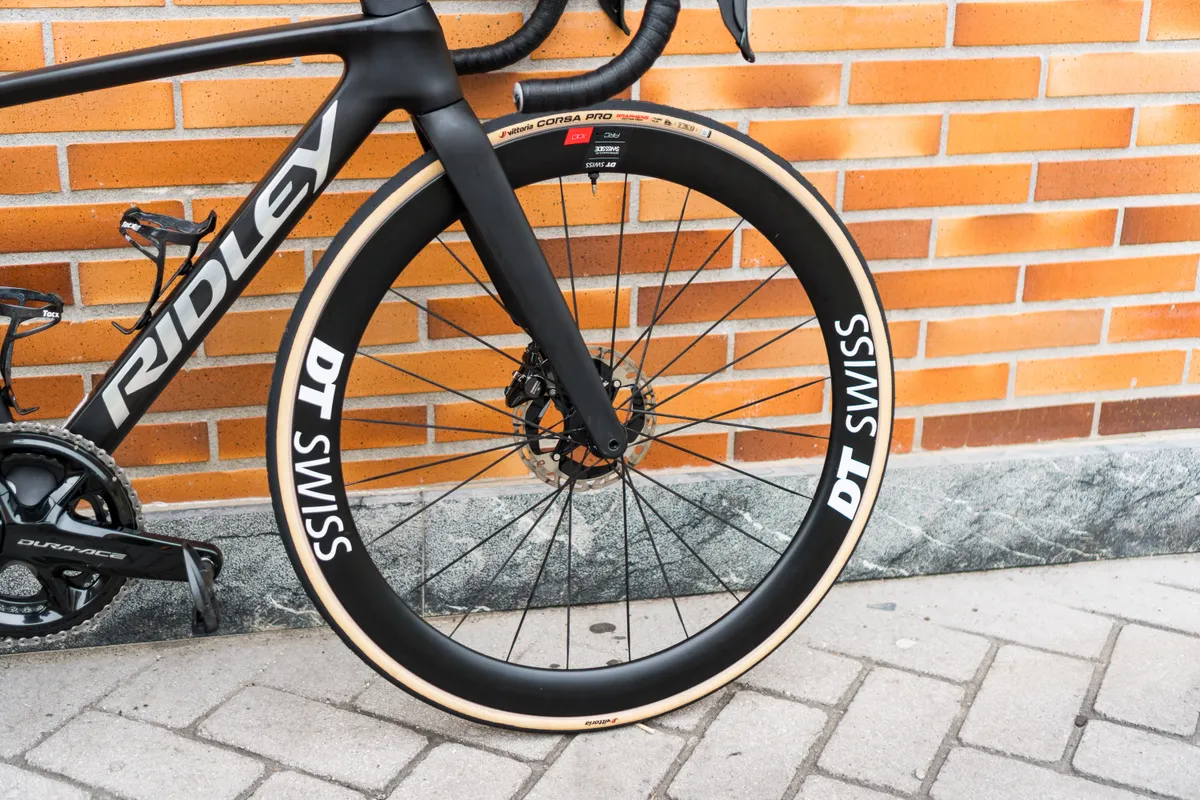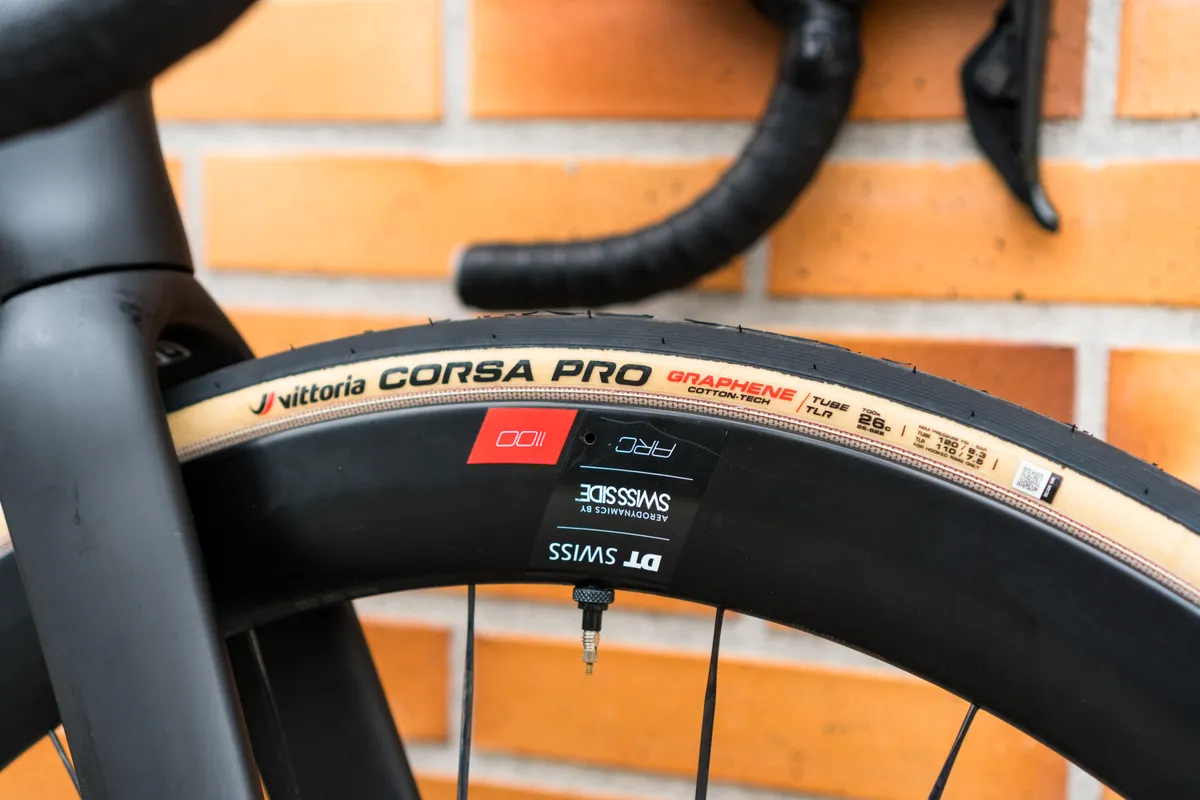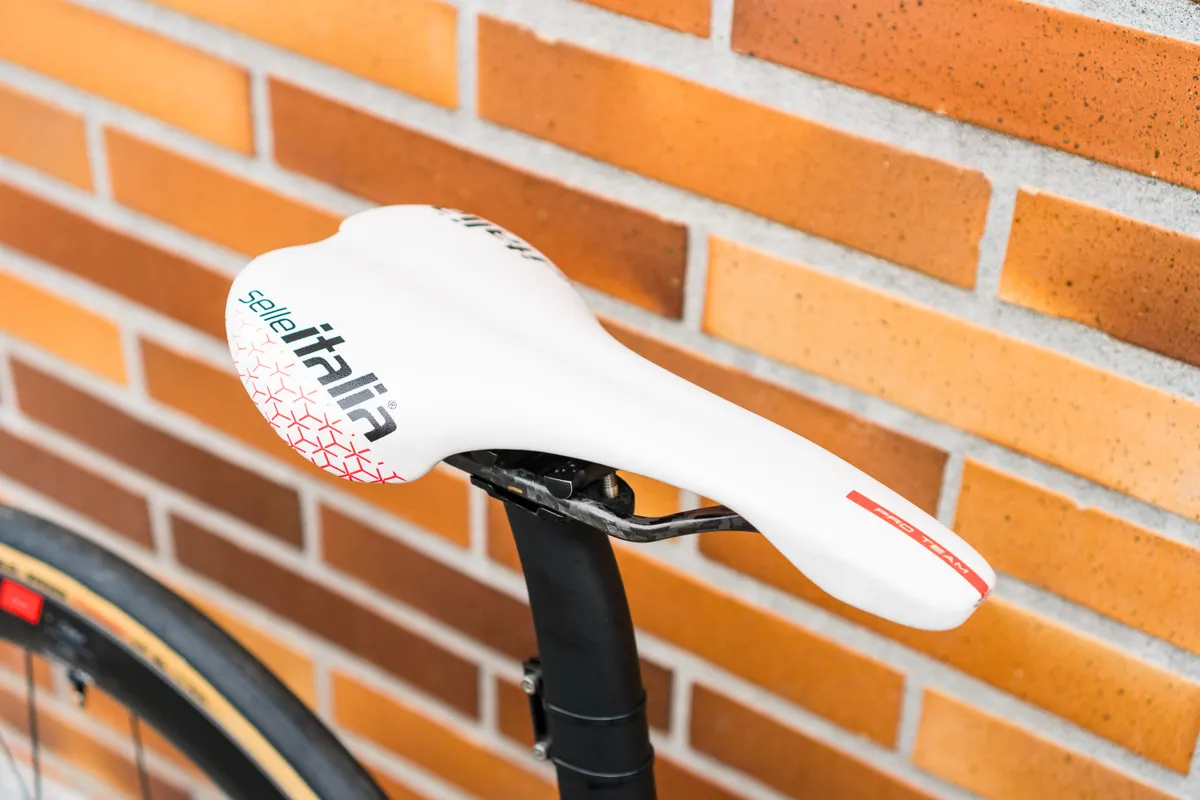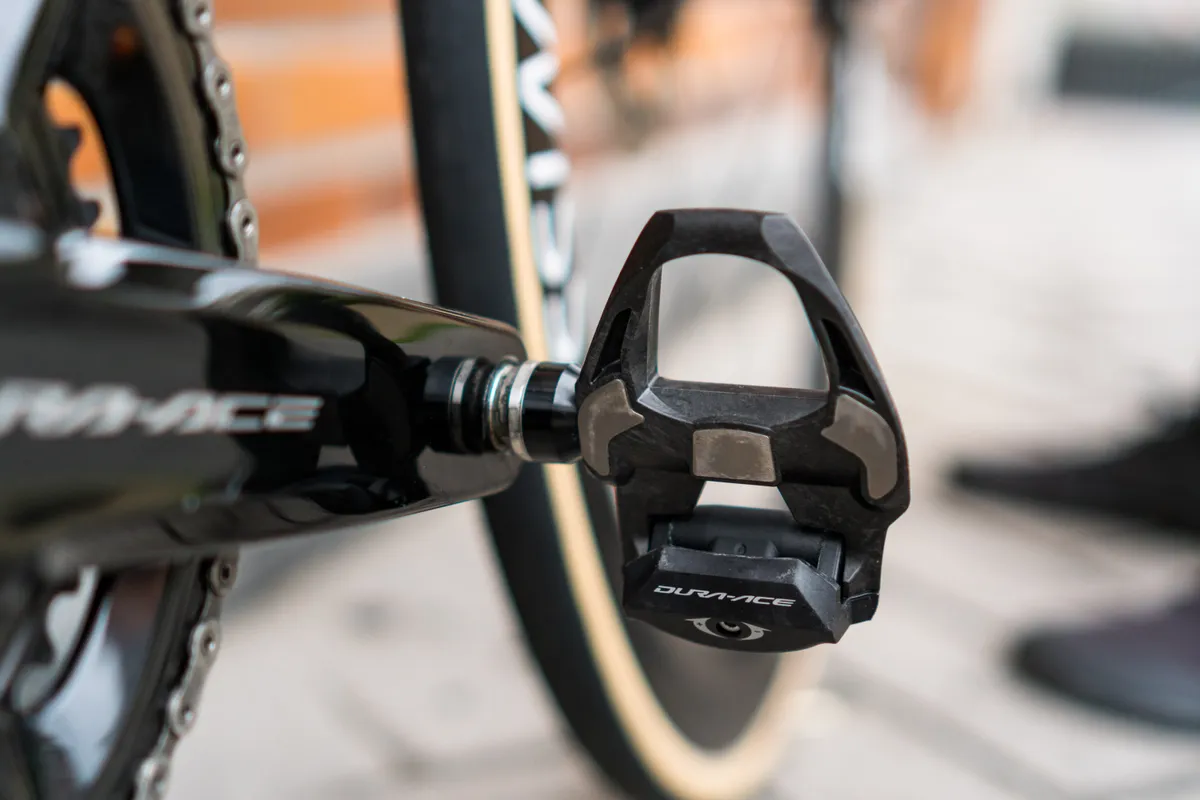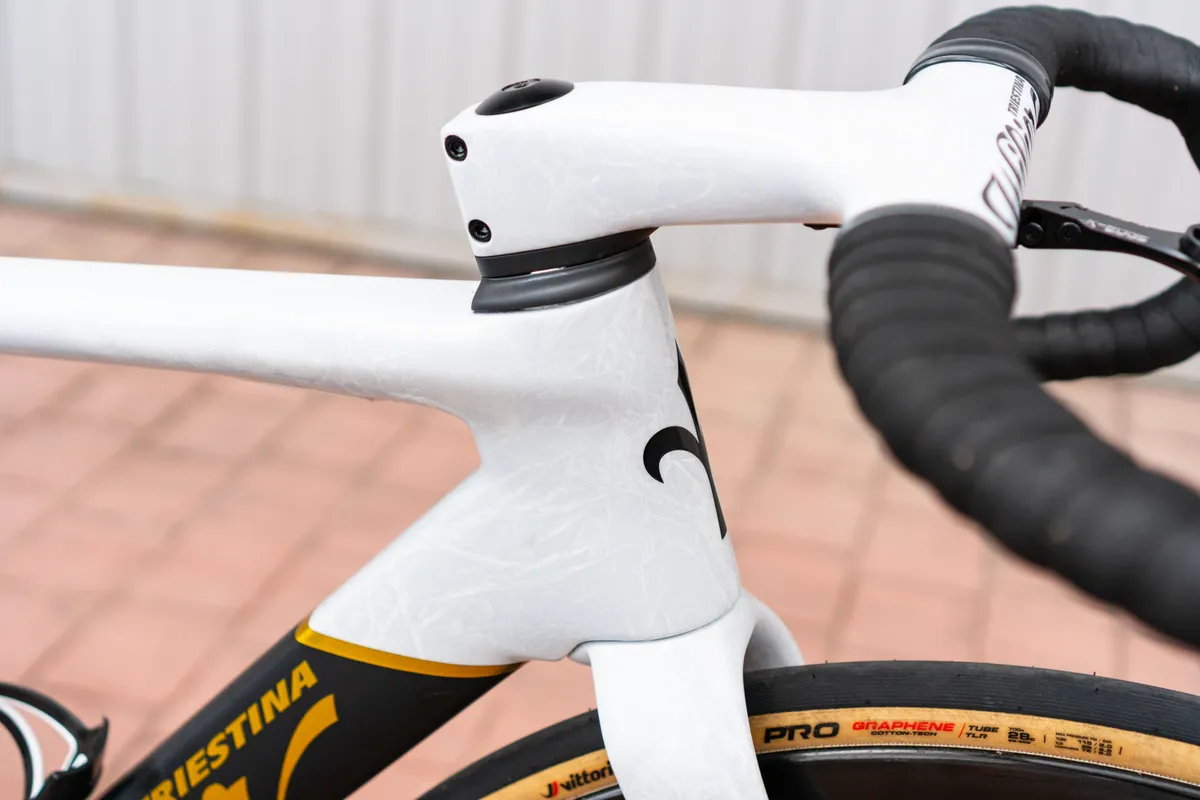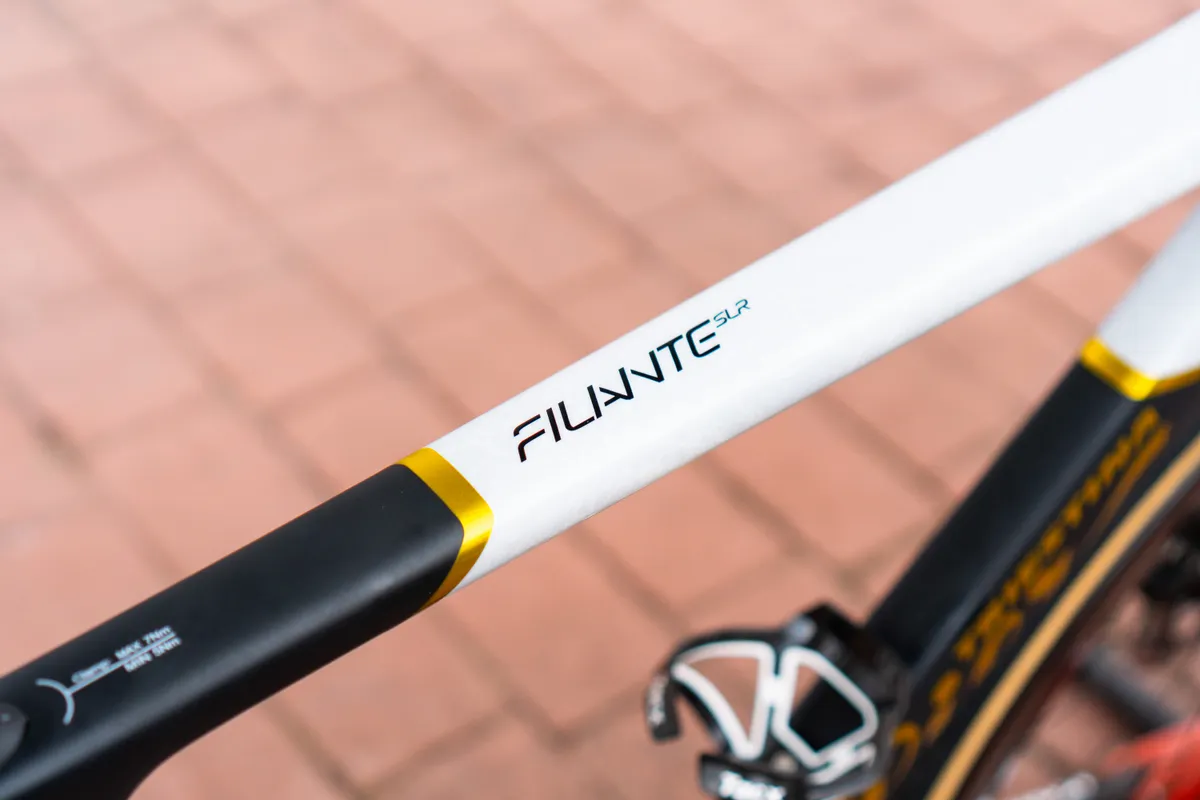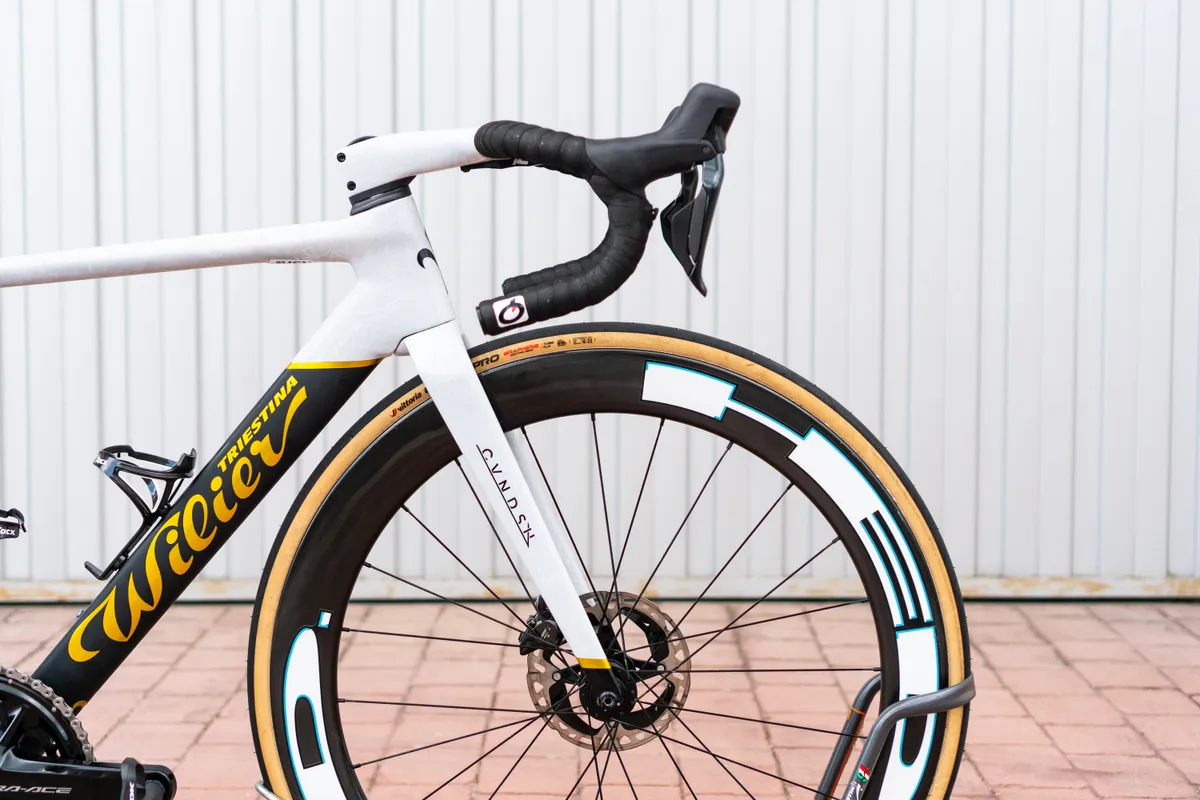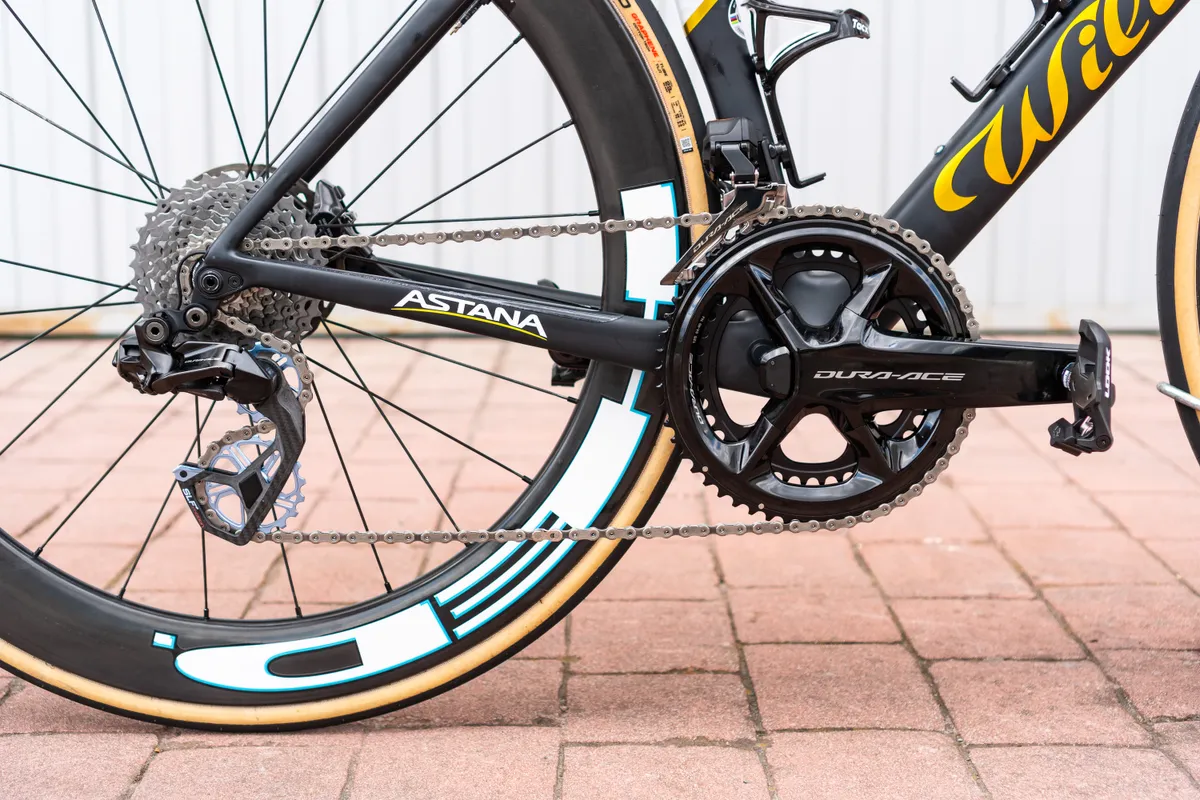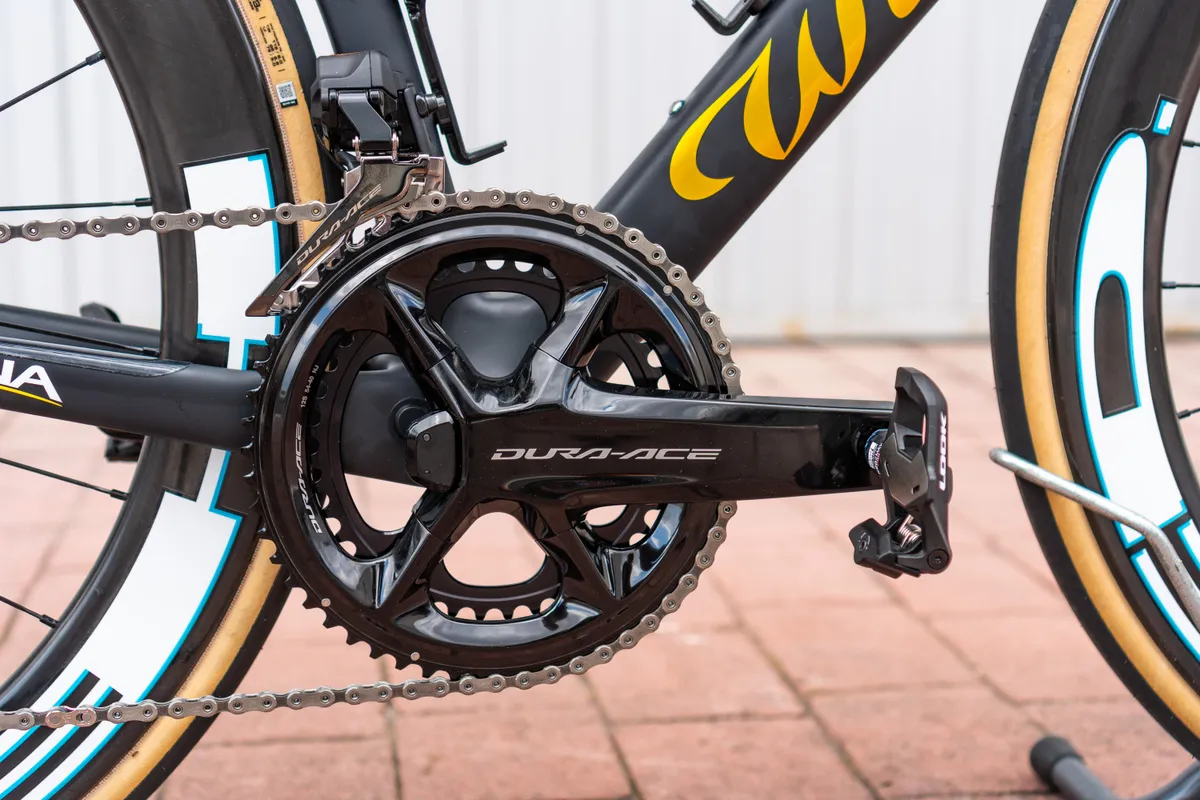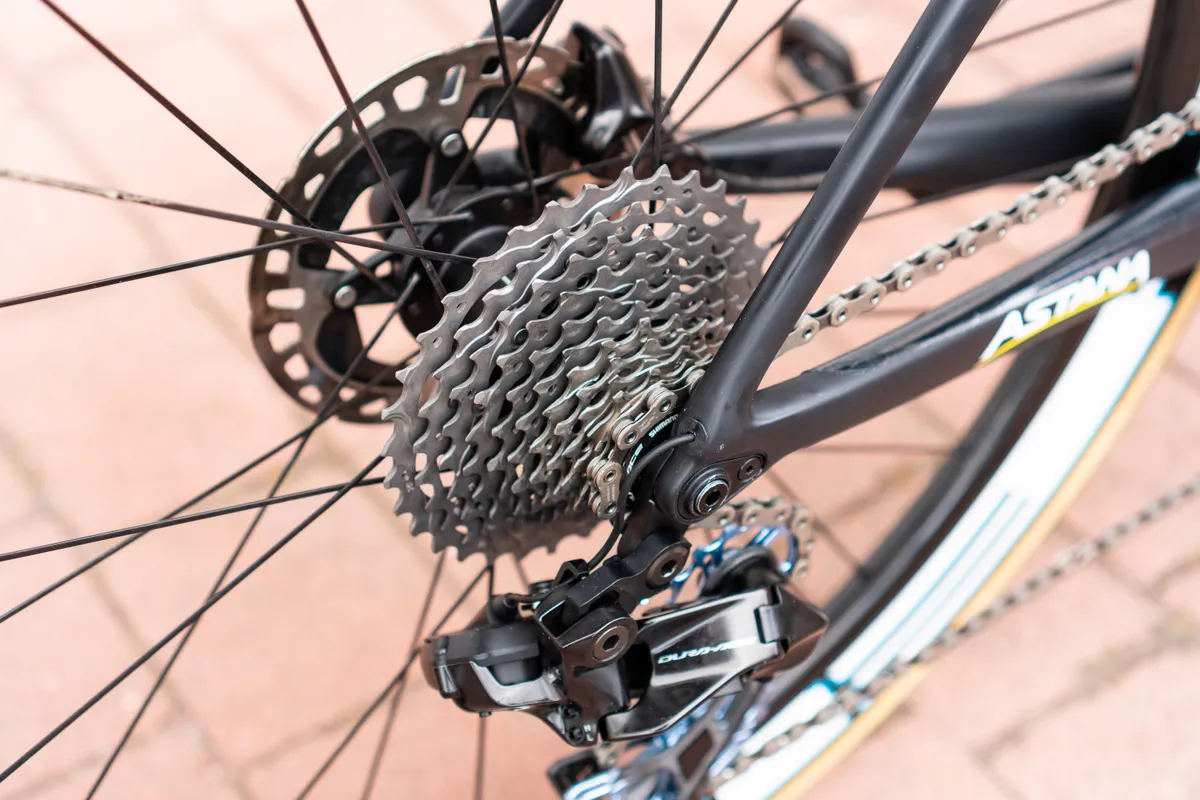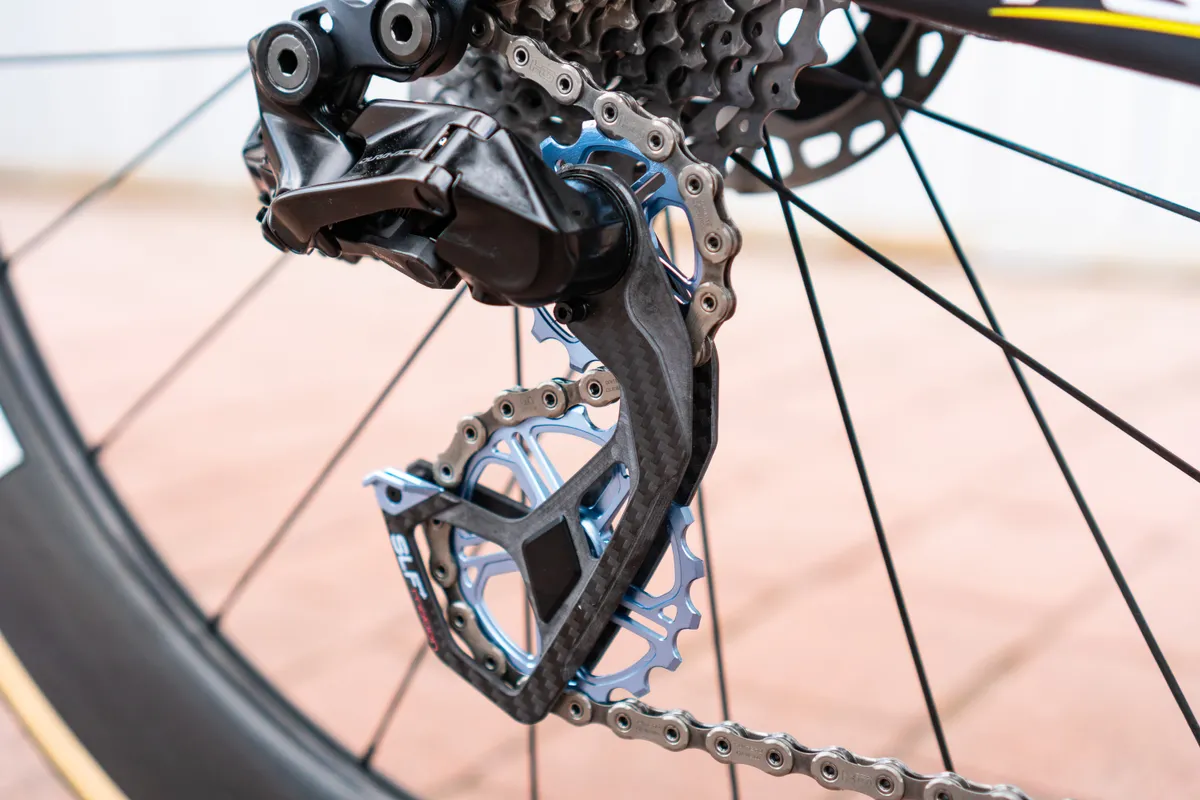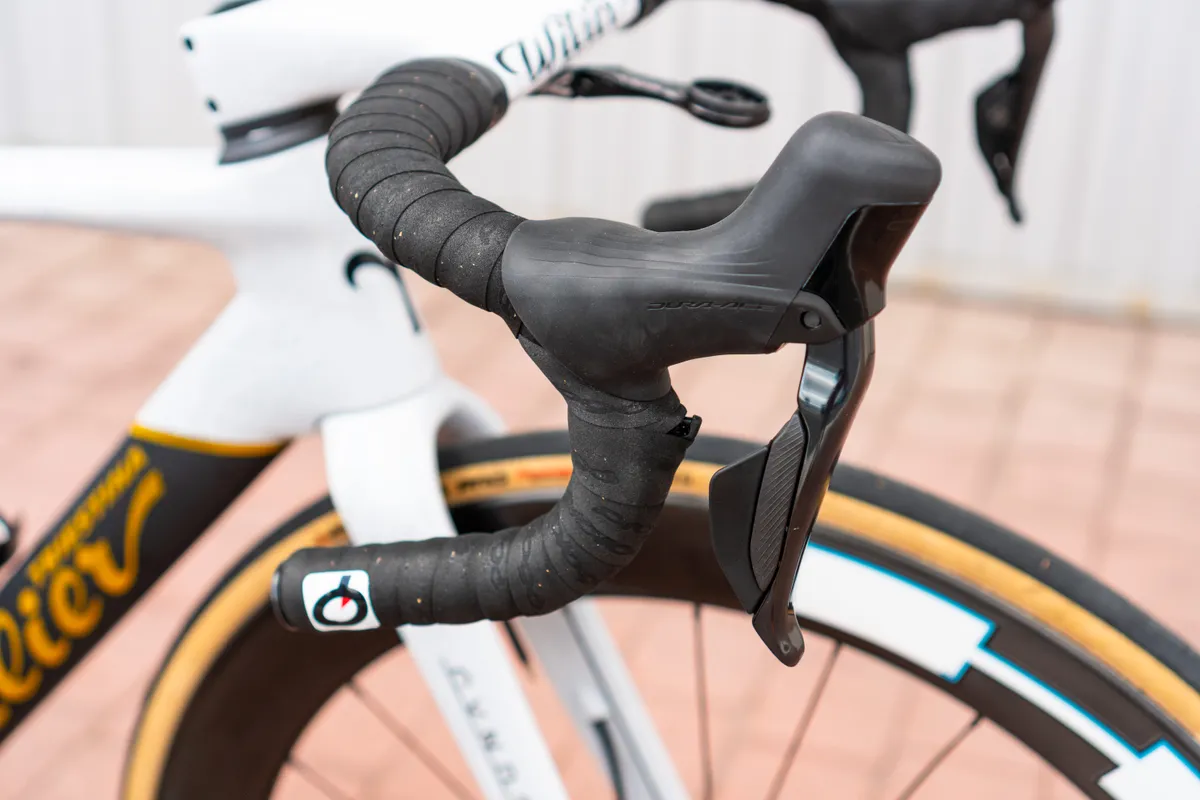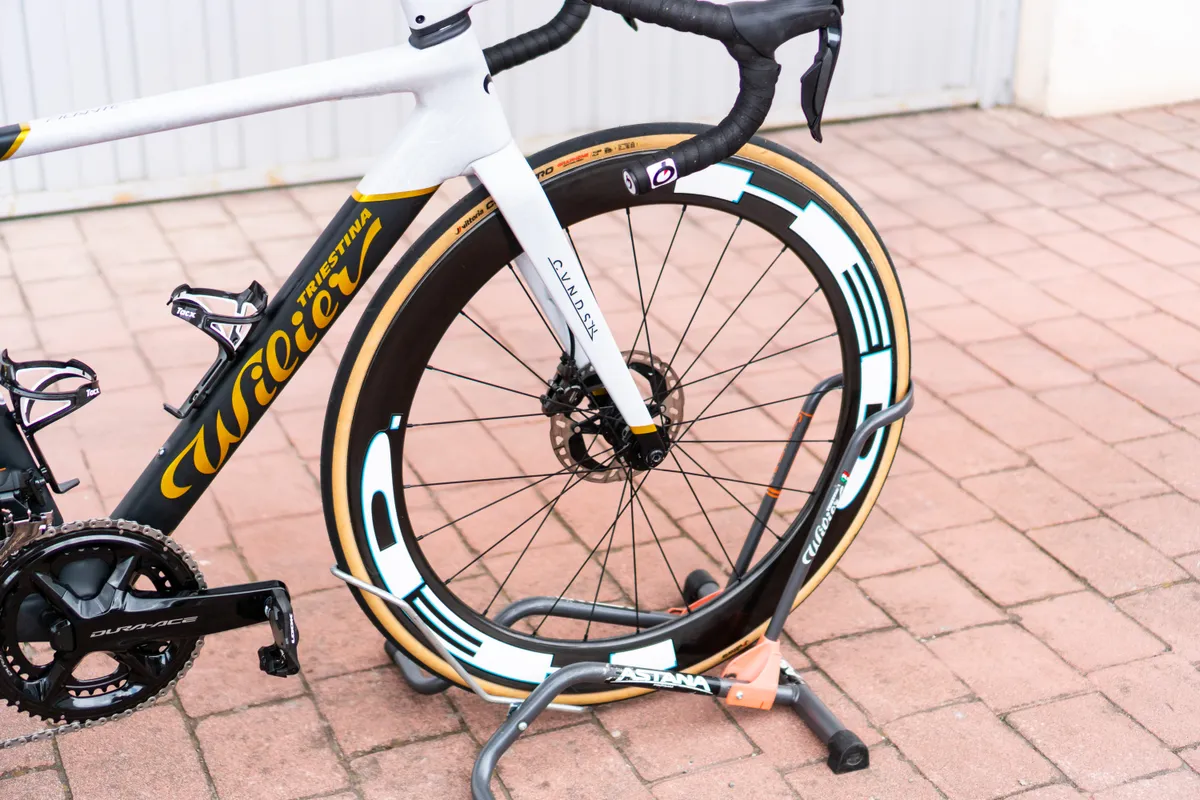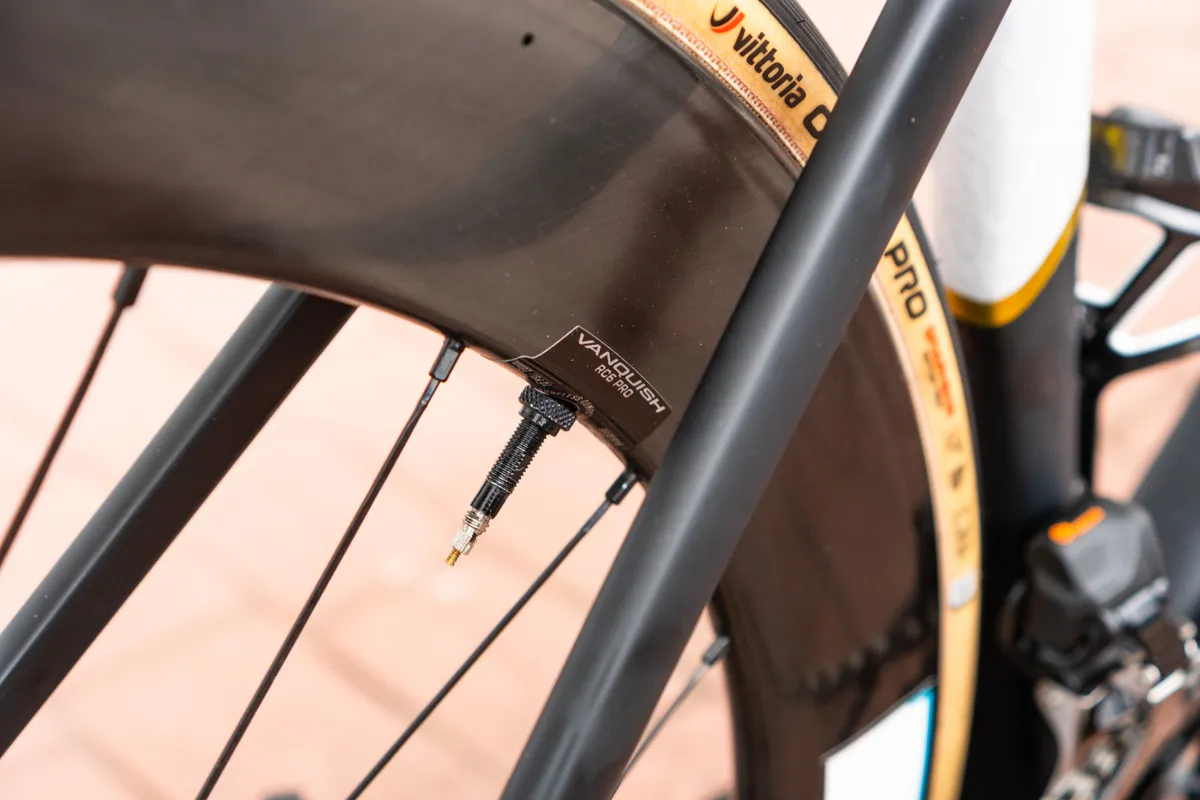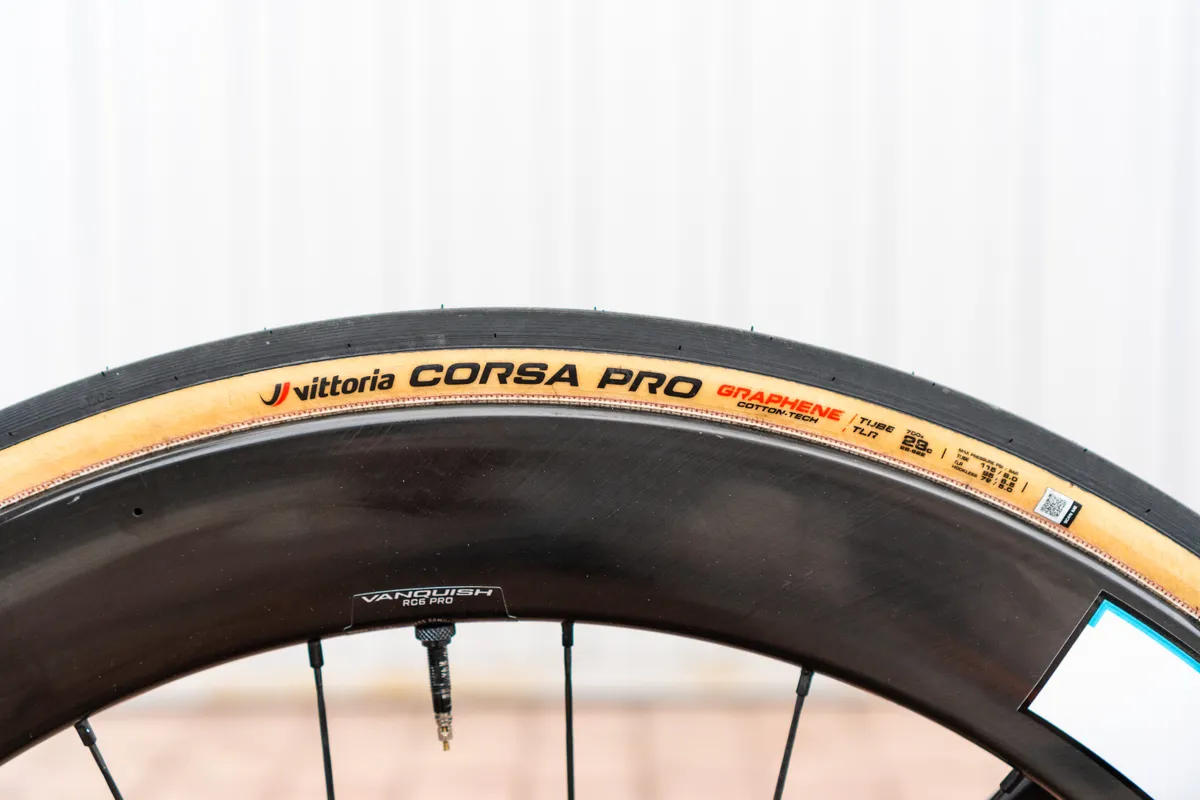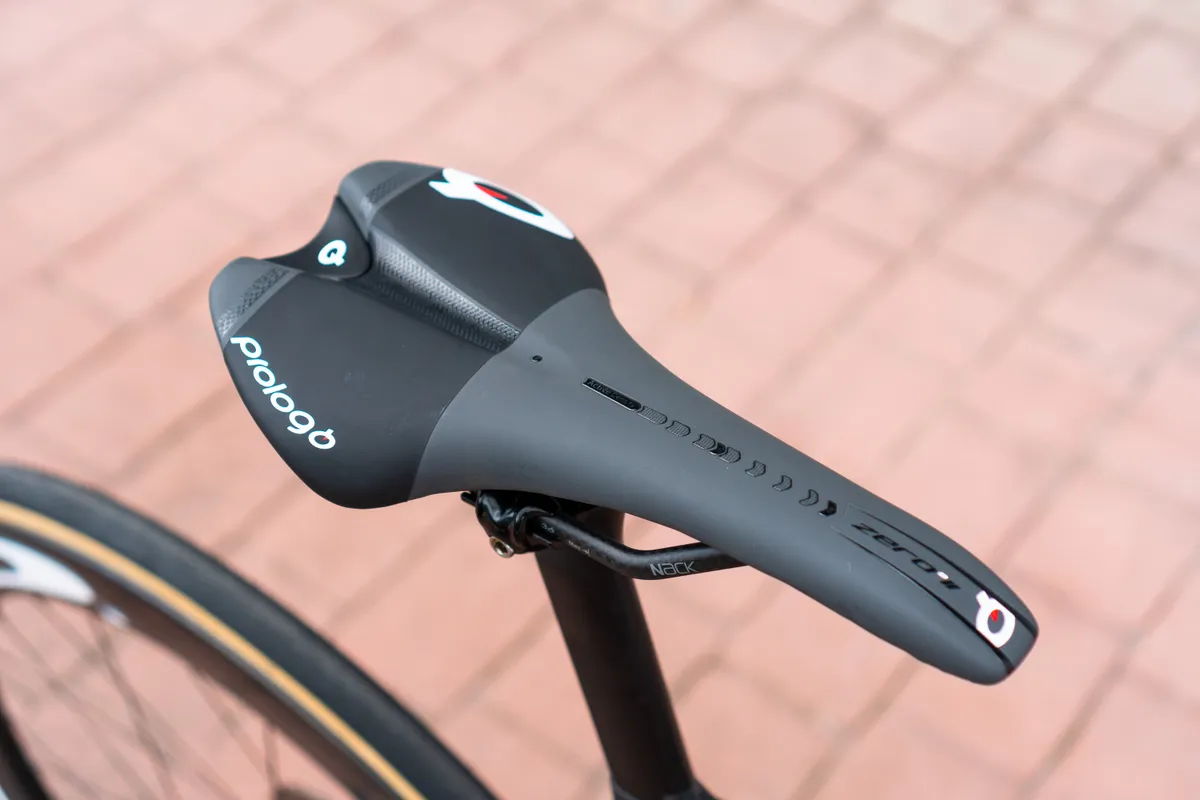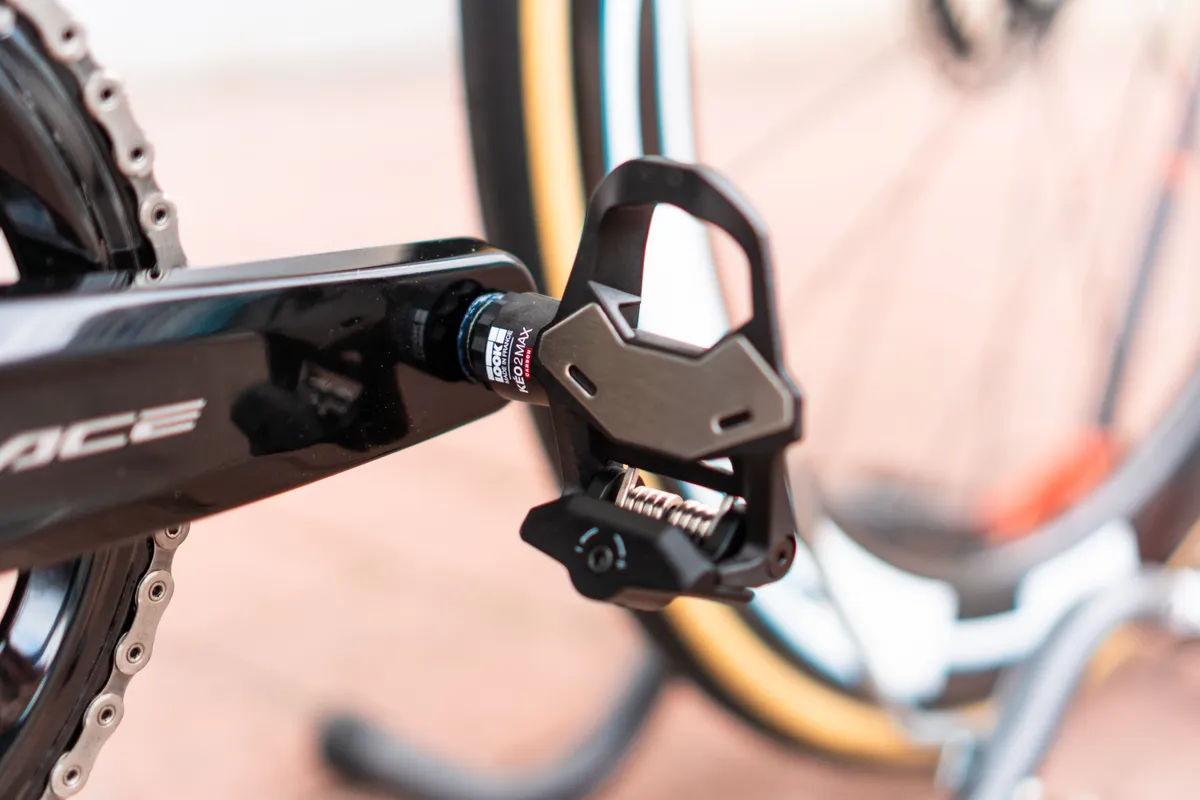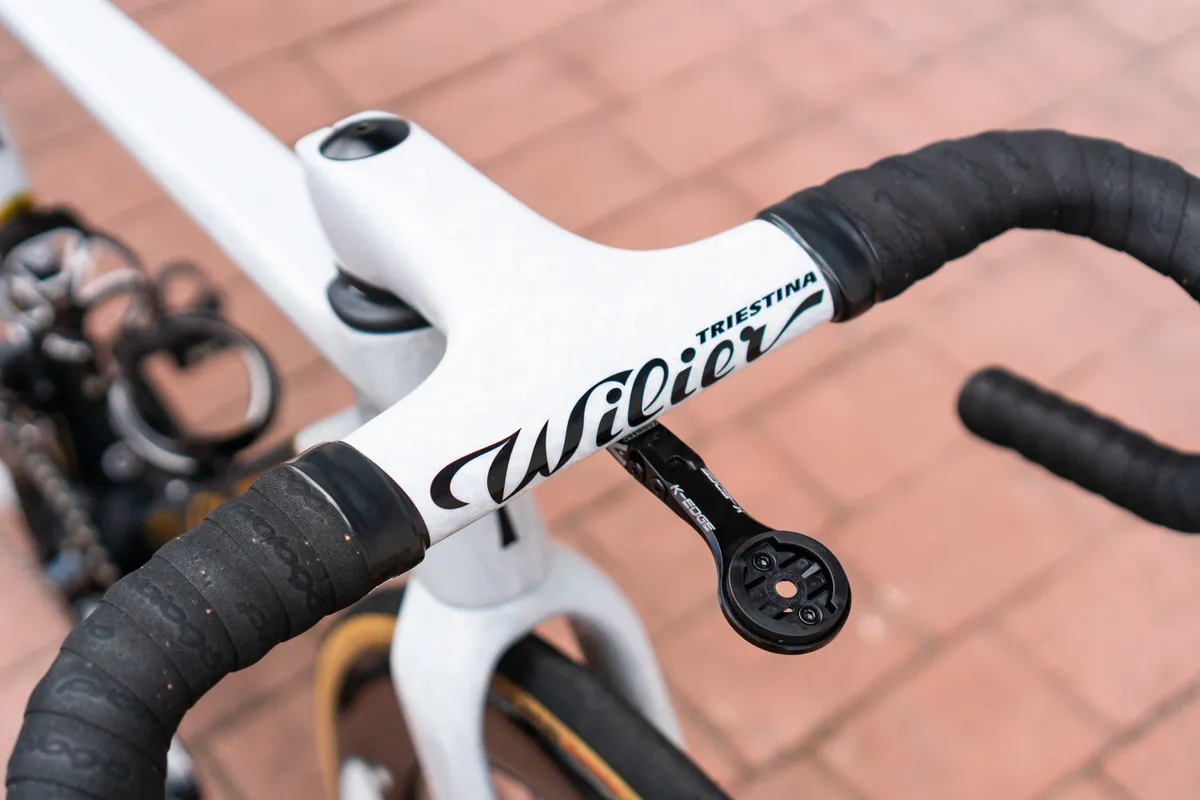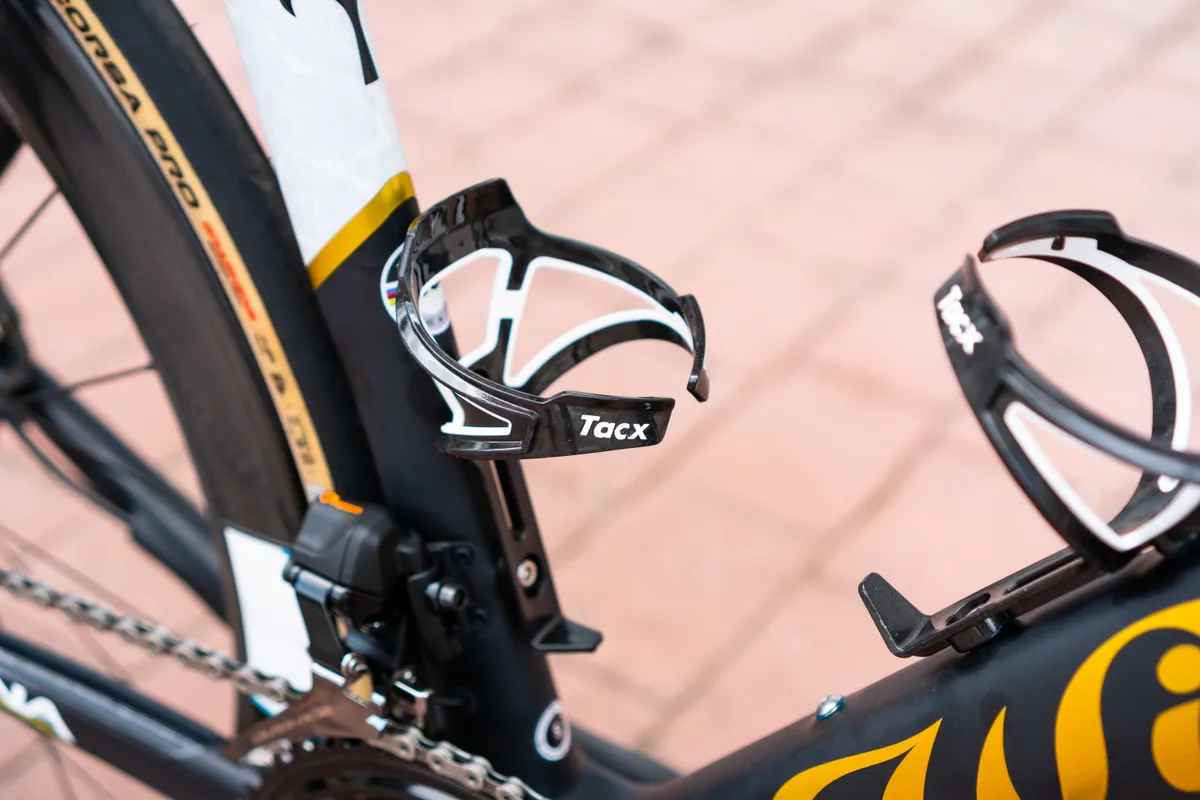This article is from 2023. Check out our guide to how much Tour de France bikes weigh in 2024.
The Tour de France is the most important race of the year, so teams and riders use the best and latest equipment.
Given that, you might think the answer to the question “How much does a Tour de France bike weigh?” would be a simple one – “Bang on the UCI minimum bike weight of 6.8kg.”
The halcyon days of sub-5kg off-the-shelf road bikes are long gone, however.
While many lay blame at the feet of things such as road disc brakes and tubeless tyres and wheels, another major culprit is aerodynamic drag – or, more specifically, efforts to counter it.
As we’ve seen with bikes such as the Specialized S-Works Aethos, it’s perfectly possible to build a disc brake road bike that weighs less than 6.8kg (at a cost, of course, but that’s no issue for Tour pros).

The problem is that bikes such as the Aethos would be slower than heavier, more aerodynamically efficient ones except on the steepest of gradients, for racing at the WorldTour level.
Though famous for its mountains, the Tour de France isn’t a simple hill climb race.
In fact, despite being one of the most mountainous Tours of recent years, the 2023 race is currently sitting on an overall average speed of more than 41kph/25mph.
The challenge for bike brands, therefore, is to build a bike that is both as aerodynamic as possible yet also light enough to hit 6.8kg in full race trim. As things stand, compromises have to be made somewhere.
So how much does a complete pro bike weigh in 2023? We got our hands on 11 Tour de France bikes and put them on the BikeRadar scales of truth.
Caveat warning
As with our 2022 Tour de France bike weights exposé, there are a couple of caveats to note first.
After seeing almost every rider aboard full-fat aero road bikes at last year’s Grand Départ in Copenhagen, Denmark, these bikes were all optimised for this year’s race start in Bilbao, Spain.
As a result, the bikes we saw were mostly using slightly lighter frames and parts where possible.
They were also all weighed ready-to-ride, with a number of ‘optional’ accessories most brands don’t include when quoting complete bike weights, such as pedals, power meters, bike computer mounts and bottle cages.
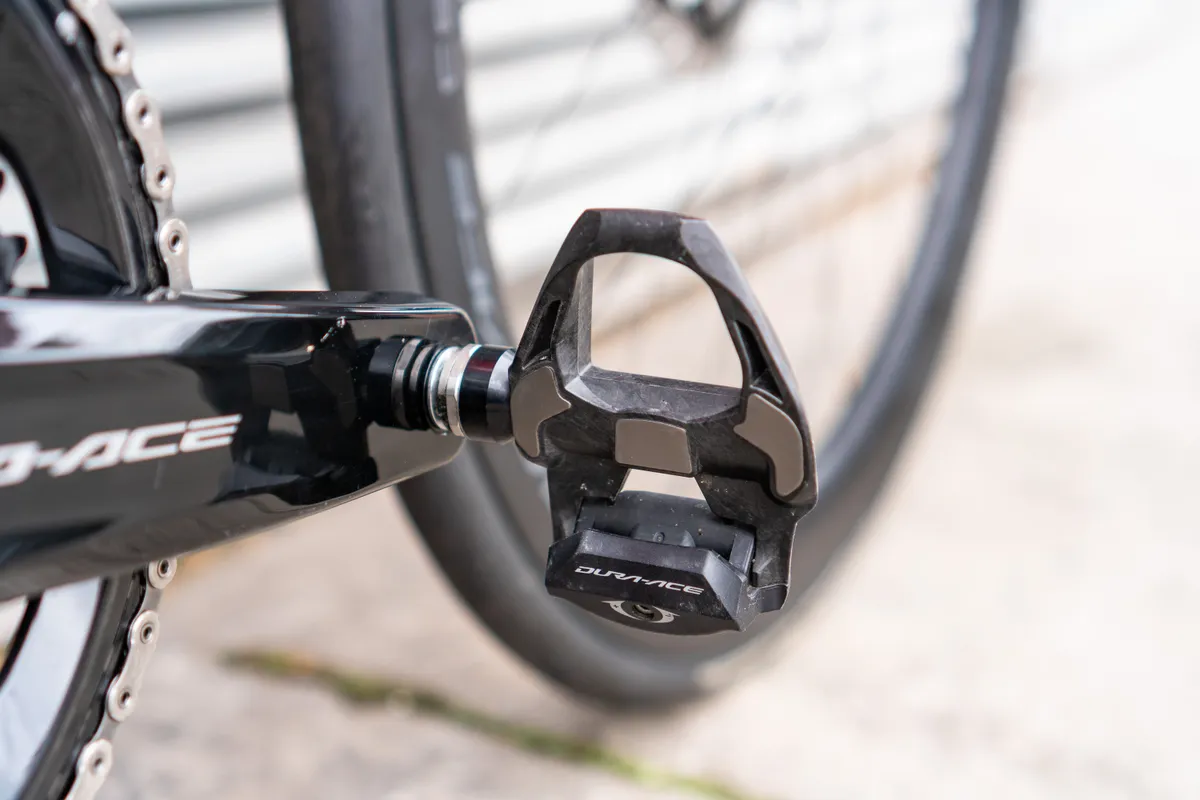
Secondly, practically every team in the race has been changing bike setups to suit the changing demands of each individual stage.
While for some riders and teams, this may just mean changing wheelsets and tyres, for others it can mean switching to a different bike altogether.
For example, current race leader, Jonas Vingegaard, has used at least four different bikes so far at this year’s race – a Cervélo S5 aero bike equipped with a 2x drivetrain (the bike we weighed) plus another with a 1x drivetrain, as well as a Cervélo R5 climbing bike and a Cervélo P5 time trial bike.
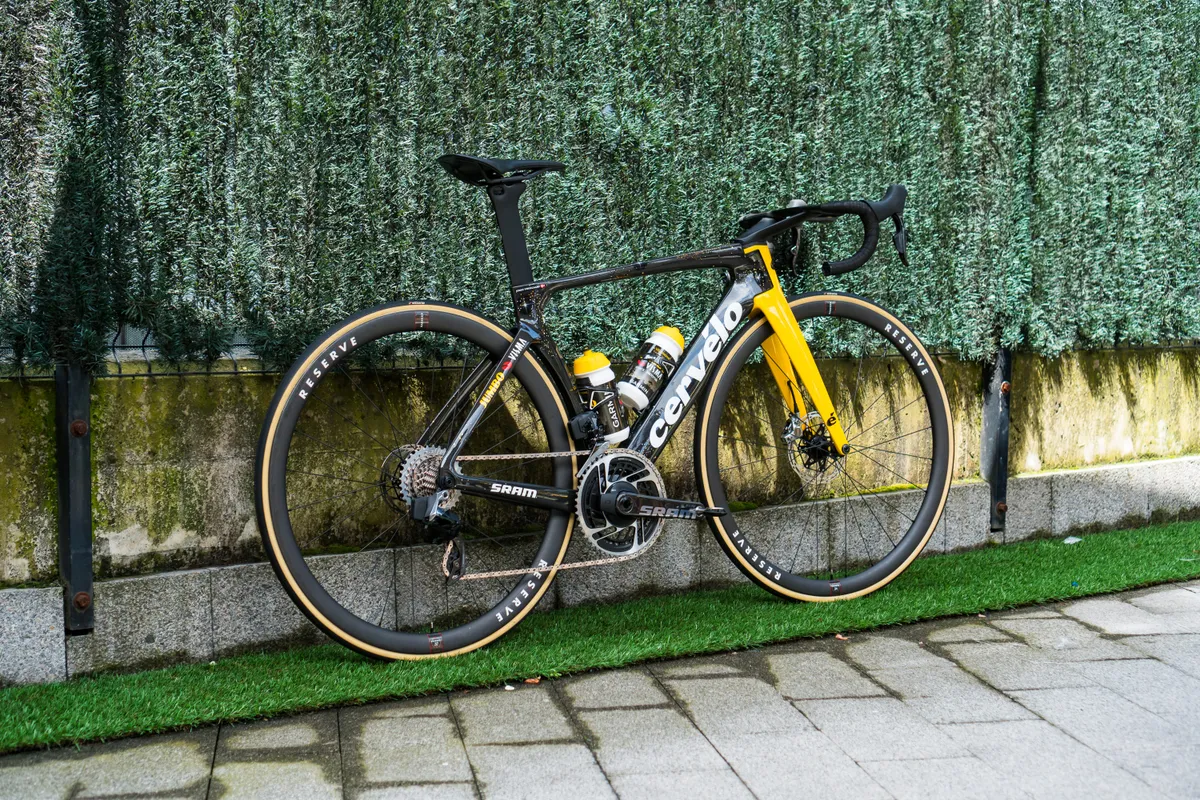
He’s also been changing between tubular and tubeless tyres and wheelsets to suit the various demands of each stage.
So while the bike of his which we weighed in Bilbao didn’t hit the 6.8kg mark, it’s highly likely he’s been using one which is there or thereabouts for big days in the mountains.
With that out of the way, though, let’s dive straight into things.
| Rider | Bike | Weight (kg) |
|---|---|---|
| Richard Carapaz | Cannondale SuperSix Evo LAB71 | 7.395 |
| Mathieu van der Poel | Canyon Aeroad CFR | 7.945 |
| Jonas Vingegaard | Cervélo S5 | 7.195 |
| Tadej Pogačar | Colnago V4Rs | 7.245 |
| Alexander Kristoff | Dare VSRu | 7.735 |
| Simon Clarke | Factor O2 VAM | 6.925 |
| Alexis Renard | Look 795 Blade RS | 7.535 |
| Egan Bernal | Pinarello Dogma F | 7.385 |
| Ben O'Connor | Prototype BMC | 7.345 |
| Caleb Ewan | Prototype Ridley | 7.500 |
| Mark Cavendish | Wilier Filante SLR | 7.760 |
| Average | 7.451 |
Richard Carapaz’s Cannondale SuperSix Evo LAB71 – 7.395kg
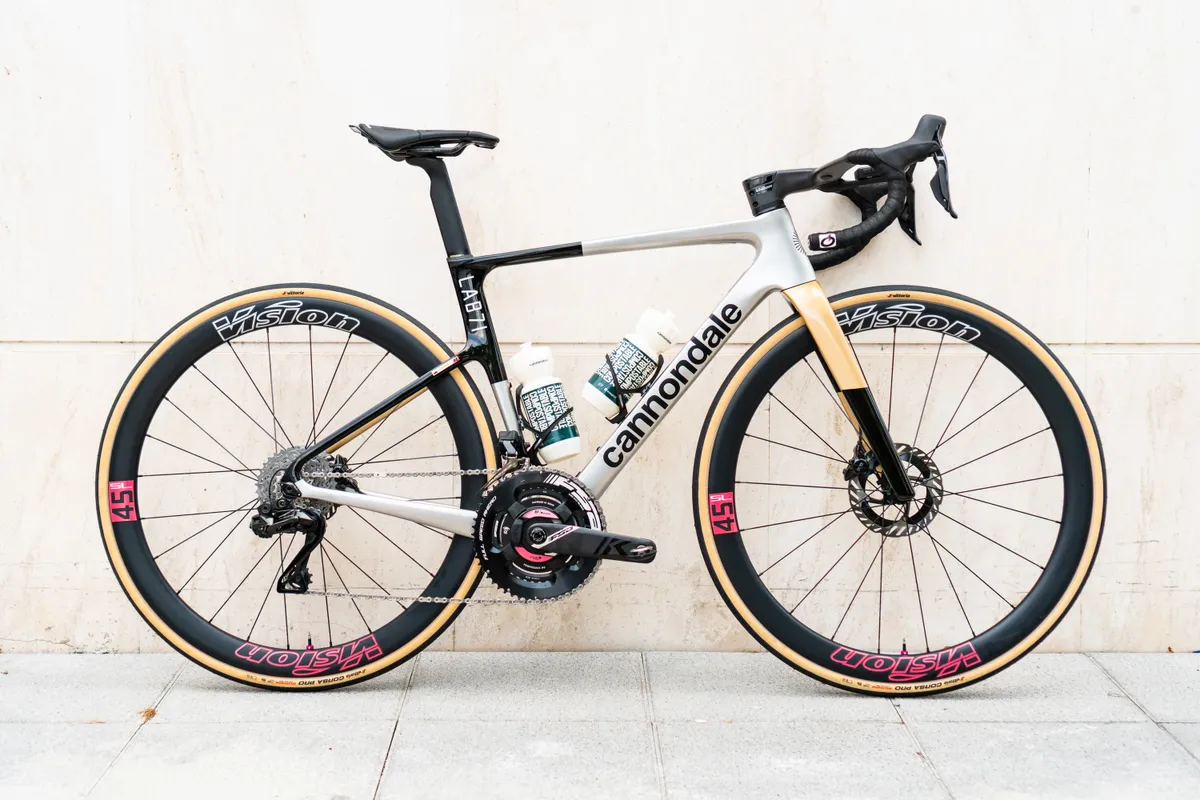
Let’s start with the Cannondale SuperSix Evo LAB71 of reigning Olympic road race champion, EF Education-EasyPost’s Richard Carapaz.
The SuperSix Evo LAB71 is Cannondale’s ultra-premium, all-rounder racing bike.
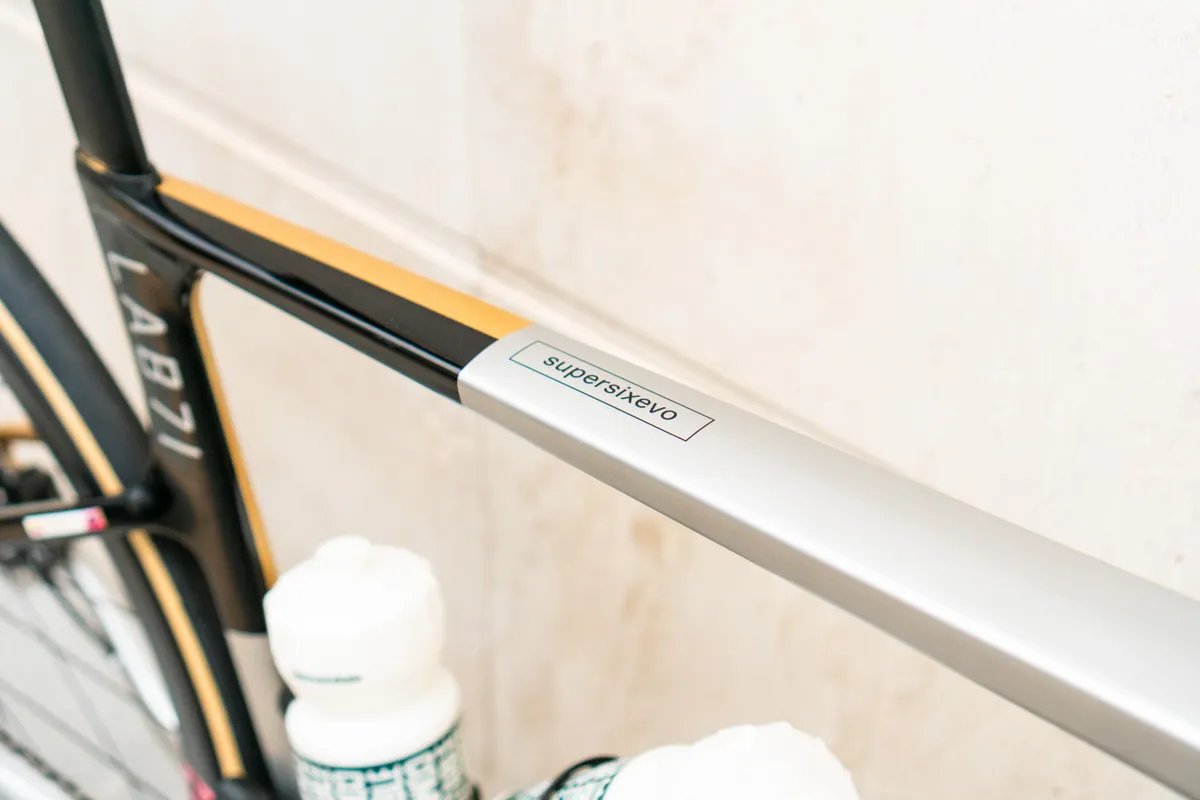
Cannondale says it’s the lightest SuperSix EVO ever, with a claimed weight of just 770g for a painted size 56cm frame.
Carapaz’s size 48cm frame ought to be even lighter, then.
The new SuperSix EVO is also said to be 12 watts more aerodynamically efficient at 45kph than the previous generation bike, too.
At this year’s Grand Départ, Carapaz’s bike was built up with a Shimano Dura-Ace Di2 R9200 groupset.
For the short amount of time Carapaz was in this year’s race (he unfortunately crashed out on stage one), the Ecuadorian was using 54/40t FSA chainrings and carbon cranks on a Power2Max NG Road power meter, combined with an 11-34t cassette out back.
Intriguingly, he also had sprint shifters placed just on the inside of his brake hoods, with a small hole cut out of each rubber hood for the button to protrude through.
From the looks of things, these would enable Carapaz to change gear with his thumbs while his hands are wrapped around the very tops of the shifter hoods.
Vision supplies EF Education-EasyPost with wheels and finishing kit. Carapaz selected the Metron 45 SL wheelset and Metron 5D ACR integrated handlebar.
Finishing things off, Carapaz was using 28c Vittoria Corsa Pro TLR tyres, Wahoo Speedplay Aero pedals, a Prologo Scratch M5 saddle, Elite Leggero Carbon bottle cages and a Wahoo Elemnt Roam bike computer.
All in, Carapaz’s bike weighed 7.395kg.
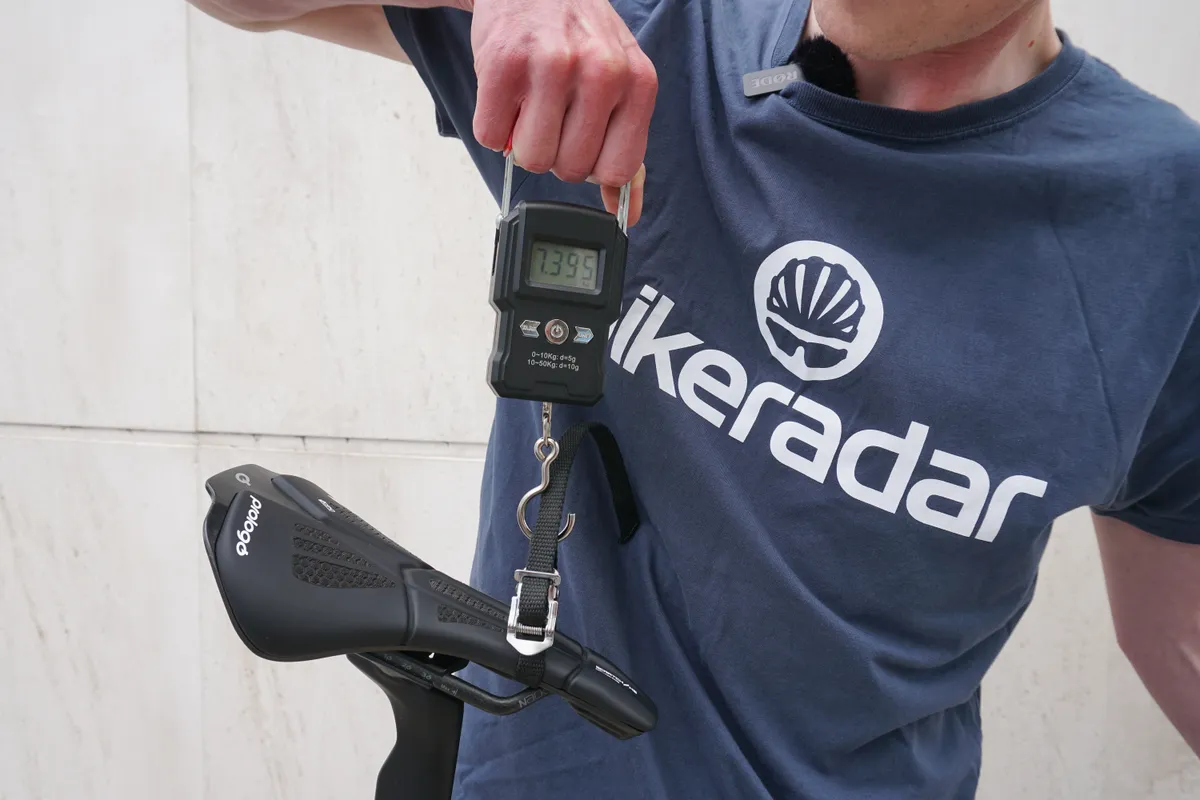
Mathieu van der Poel’s Canyon Aeroad CFR – 7.945kg
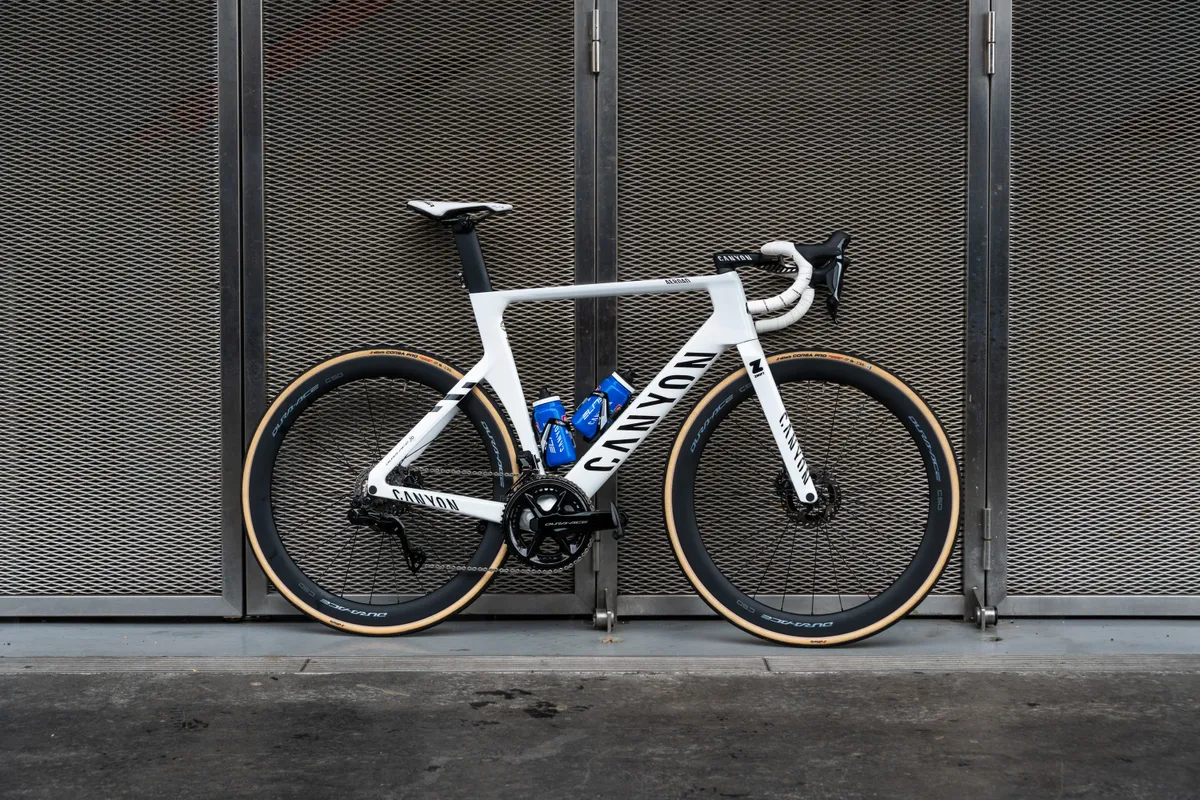
The Canyon Aeroad CFR is a few years old now, although when it launched back in 2020 it was touted as something of a super-light aero road bike.
Indeed, when we reviewed a similarly top-spec Canyon Aeroad CFR Di2 that year, it weighed just 7.3kg (size medium frame, without pedals or bottle cages).
At 7.945kg, though, van der Poel’s bike was the heaviest bike we weighed at this year’s Grand Départ.
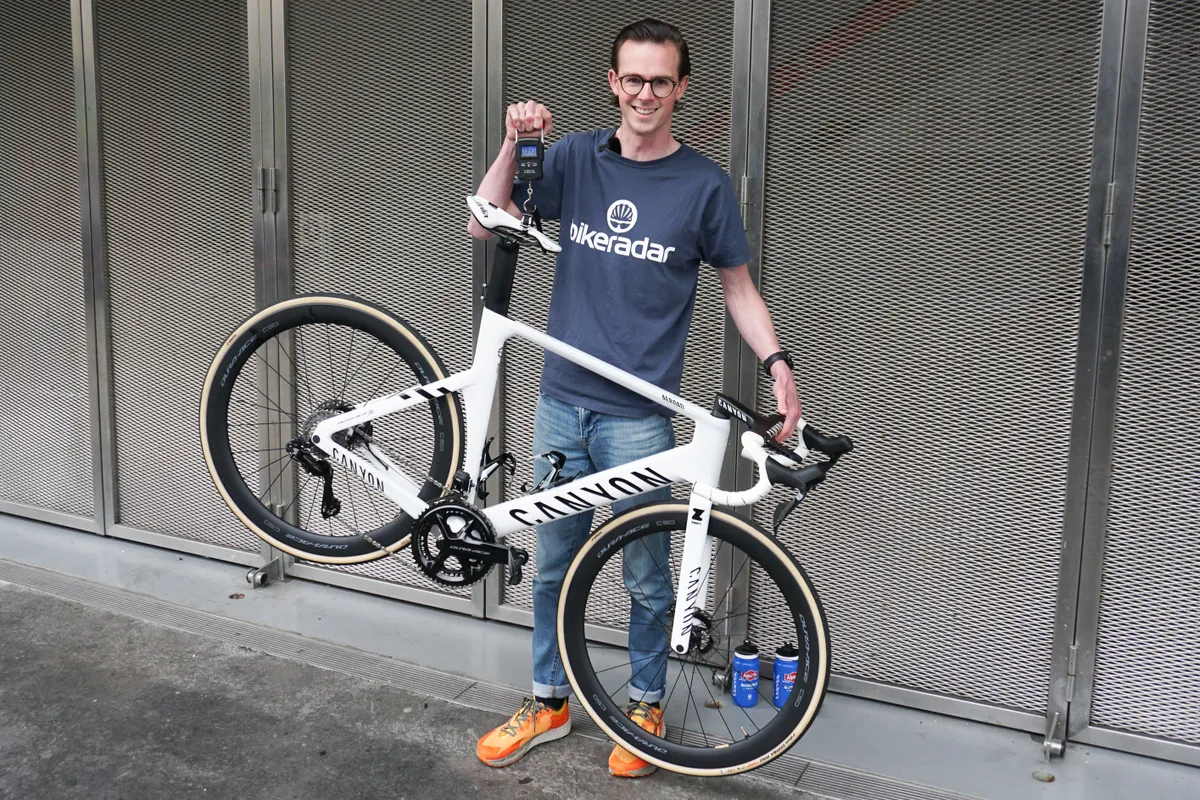
We’ll dig into why that might be in a bit, but it’s interesting to note that the Dutch mega-star is actually riding a recently updated version of the Aeroad (with a custom paint job too, of course).
Canyon has updated the location of the seatpost clamp, from the rear of the seat tube to the top of the top tube.
The rest of the bike was more standard, with a full Shimano Dura-Ace Di2 R9200 groupset, Dura-Ace C50 wheels shod with 28c Vittoria Corsa Pro TLR tyres, and Dura-Ace pedals.
Van der Poel had 54/40t chainrings mounted to a Dura-Ace FC-9200-P power meter crankset, plus an 11-30t cassette out back.
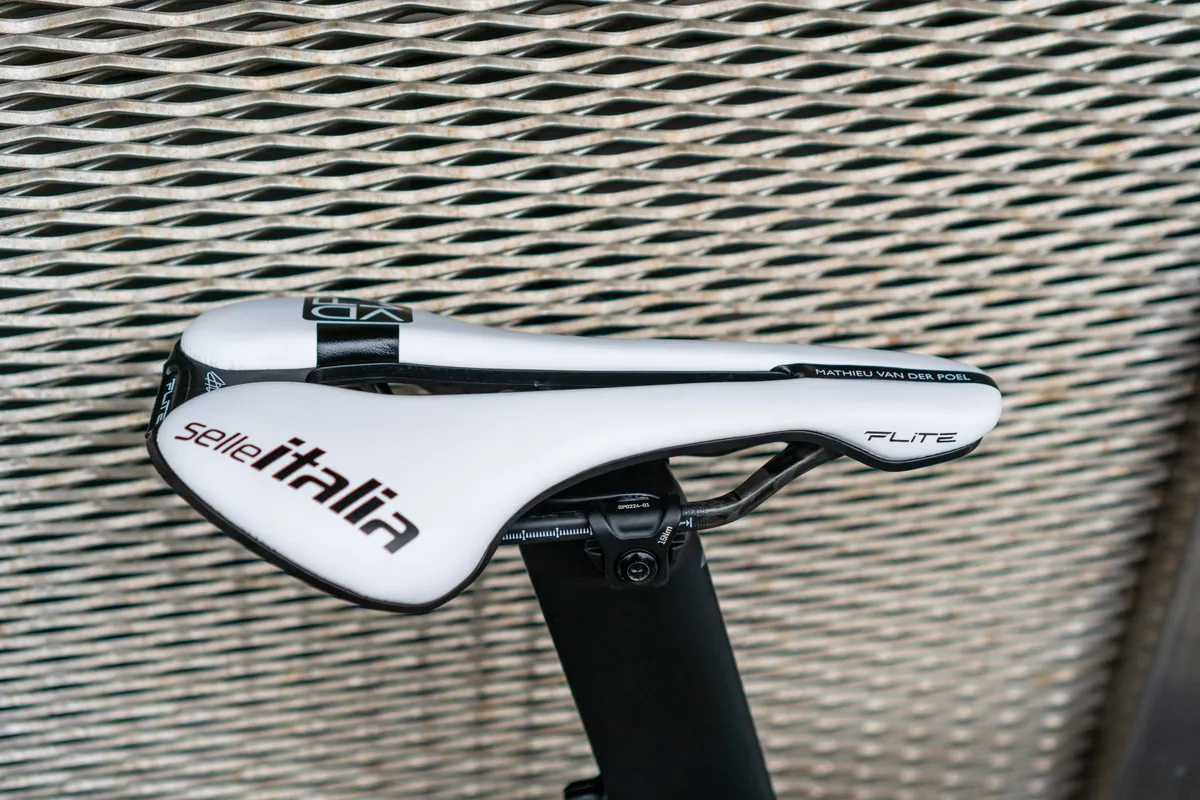
A Selle Italia Flite Boost Kit Carbonio Superflow MVDP saddle (a special edition version with signature graphics), Elite Custom Race Plus bottle cages, and a cool 3D-printed mount for his Wahoo Elemnt Bolt bike computer completes the build.

As for why it weighs what it does? Well, first and foremost – it’s a proper aero bike, optimised for flat and rolling races.
But we also think the fact that van der Poel rides a size large frame, plus the addition of pedals, bottle cages and the custom paint job helps explain it (this is partly why there are so many matte black carbon bikes these days – it’s generally the lightest option).
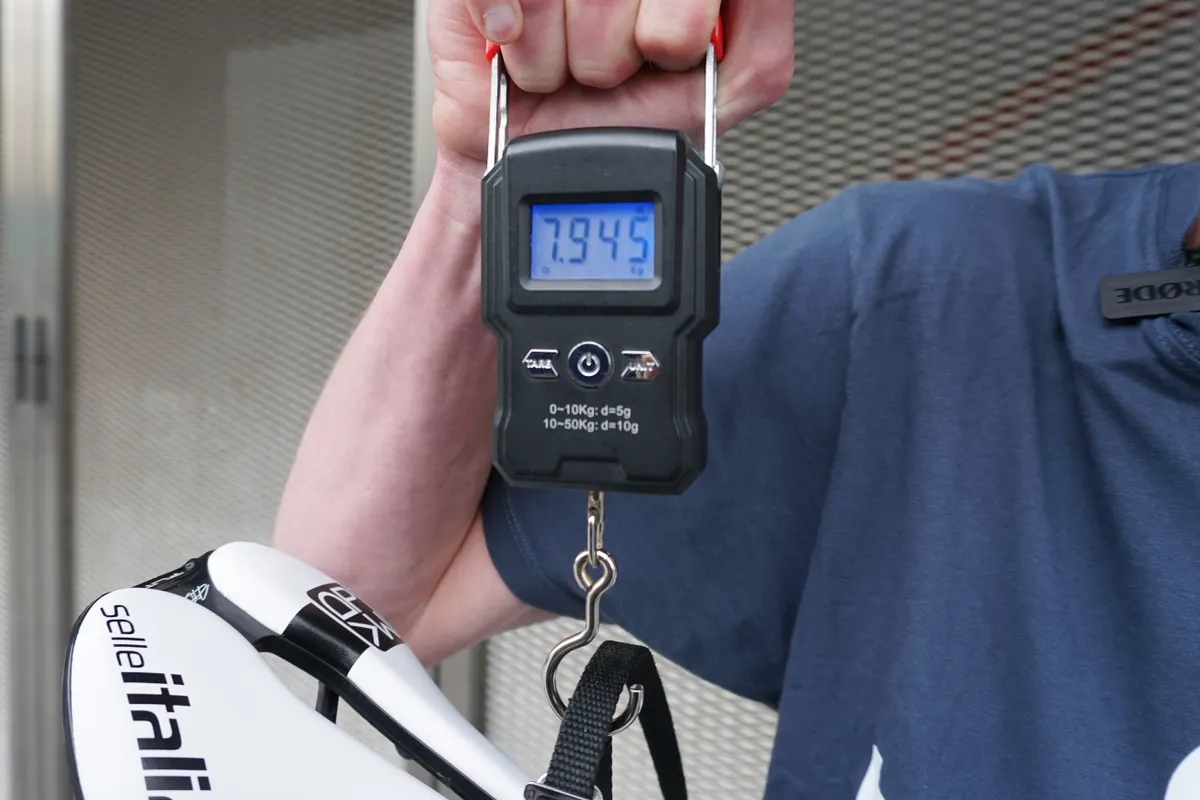
Jonas Vingegaard’s Cervélo S5 – 7.195kg
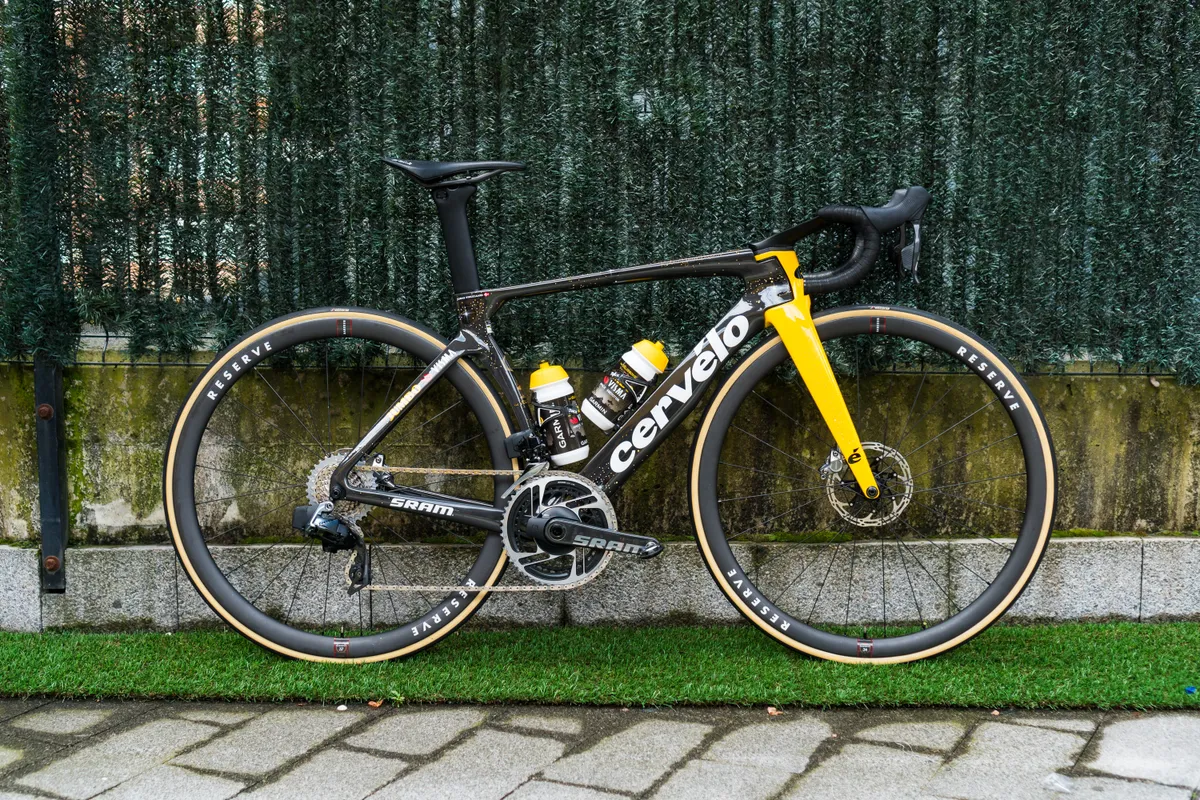
We’ve covered this bike (and Tadej Pogačar’s Colnago V4Rs) in exhaustive detail elsewhere, but it’s still worth mentioning here too, of course.
Set up with a SRAM Red eTap AXS groupset and Reserve 34|37 tubular wheels, Vingegaard’s Cervélo S5 (the Canadian brand’s aero bike) weighed just 7.195kg.
As noted in a few other articles, this is partly explained by the use of a lightweight climbing wheelset and narrow, 24c Vittoria Corsa Pro tubular tyres.
That it’s a relatively small size 51cm frame helps too, as do the lightweight custom graphics.
In contrast to van der Poel’s bike, the Jumbo-Visma team bikes were “vinyl-wrapped” rather than painted, which apparently helped keep any added weight to a minimum.
As noted earlier, current race-leader Vingegaard has been switching between this bike and a number of others at this year's Tour. Unfortunately, though, we were only able to weigh this one.
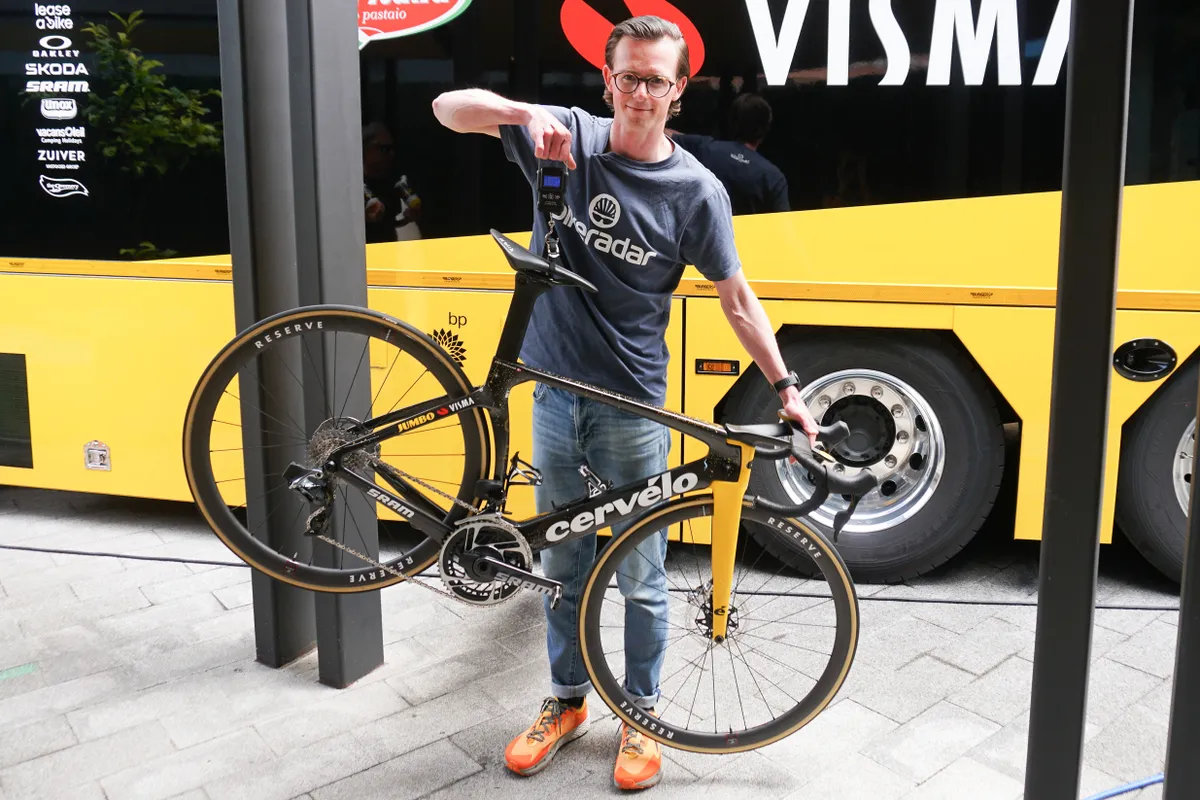
Tadej Pogačar’s Colnago V4Rs – 7.245kg
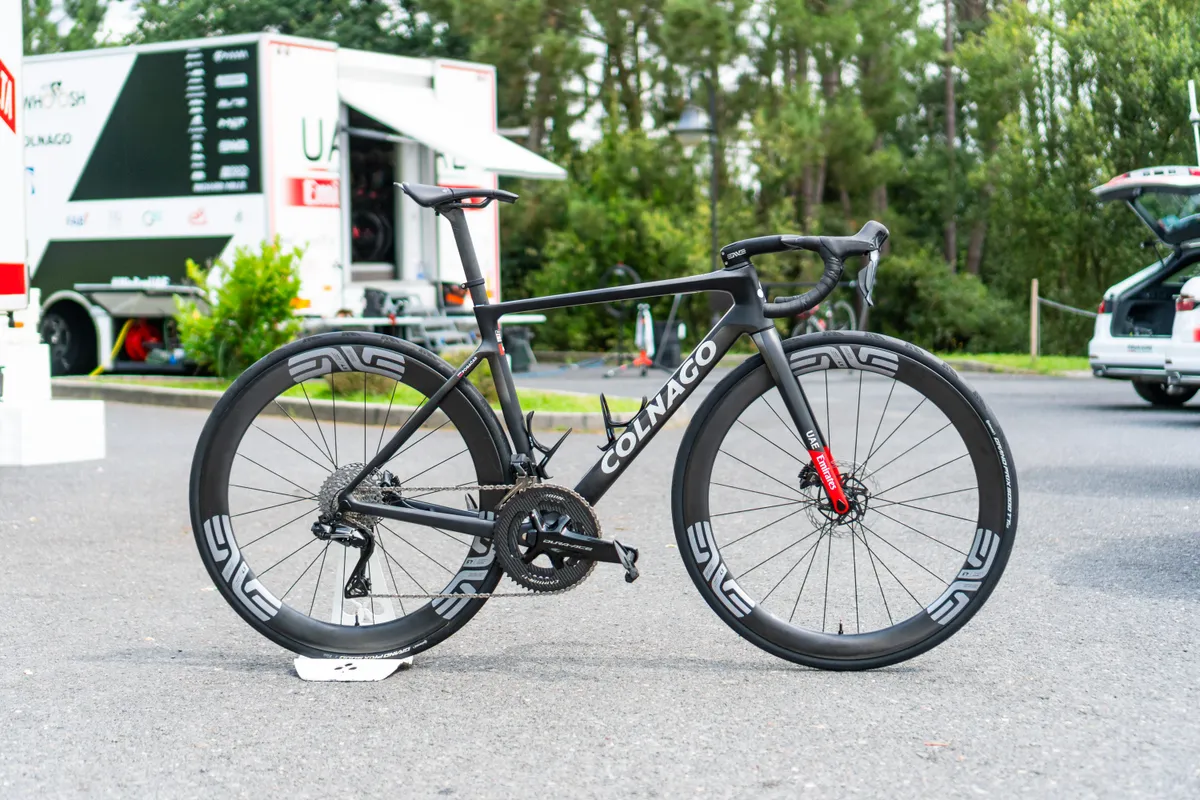
As with Vingegaard’s Cervélo S5, we’ve covered Pogačar’s Colnago V4Rs at length in various articles and videos elsewhere over the past three weeks, but given we weighed it, we’ll include it here too.
Having accounted for all of the various bits of carbon bling on it, we thought it might sneak under 7kg.
For example, as well as a Dura-Ace groupset, Pogačar’s bike had an ENVE integrated handlebar, Carbon Ti chainrings and brake rotors, and an unbranded, ultra-light carbon seatpost.
Surprisingly, though, it was around 400g over the UCI weight limit, at 7.245kg.
According to Colnago, an unpainted size 485 (the same size Pogačar uses, with a 539mm effective top tube length) V4Rs frame weighs 798g.
As always, there’s more to consider than just frame weight, however.
The most striking thing about Pogačar’s bike was his super wide ENVE SES 4.5 wheels and Continental GP5000 TT TR time trial tyres, which we examined in our 2023 Tour de France tyre tech deep dive.
While presumably a rapid combination on favourable terrain, it likely isn’t the lightest.
Given this, it’s been no surprise to see Pogačar switching to the shallower-rimmed ENVE SES 2.3 wheelset for certain mountain stages during this year’s race.
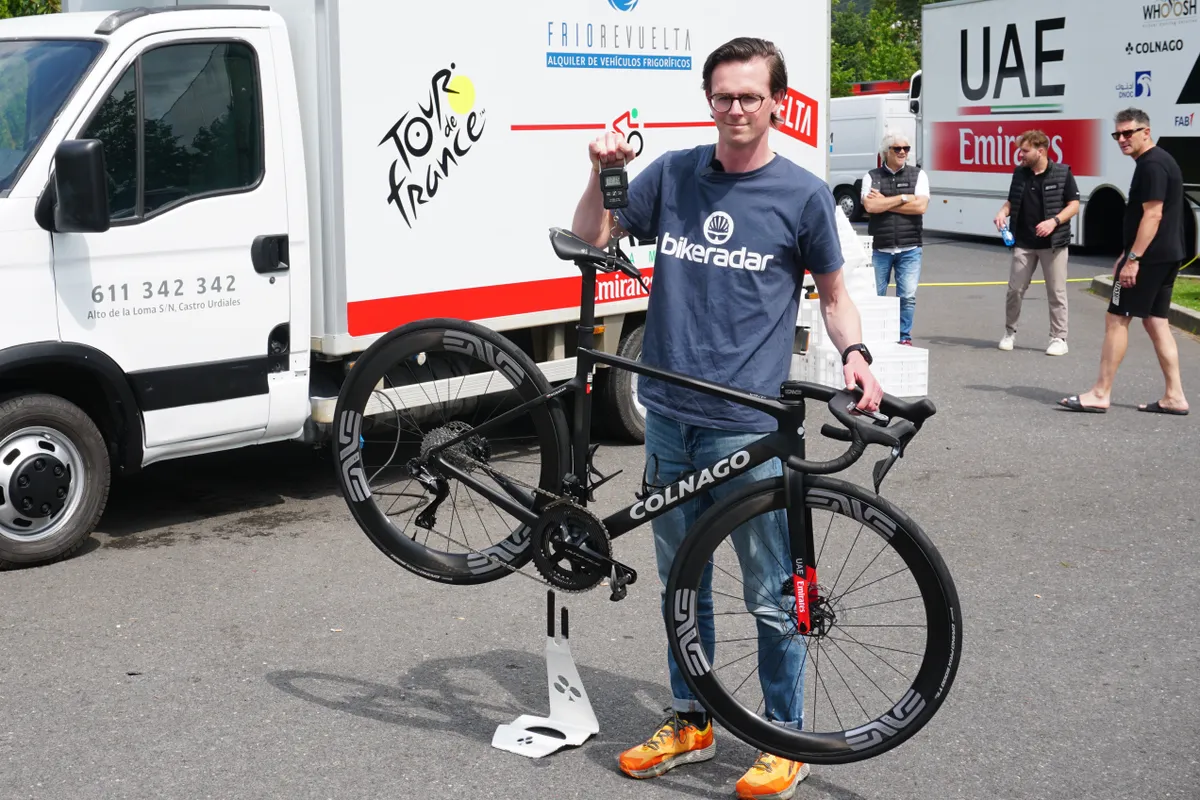
Alexander Kristoff’s Dare VSRu – 7.735kg
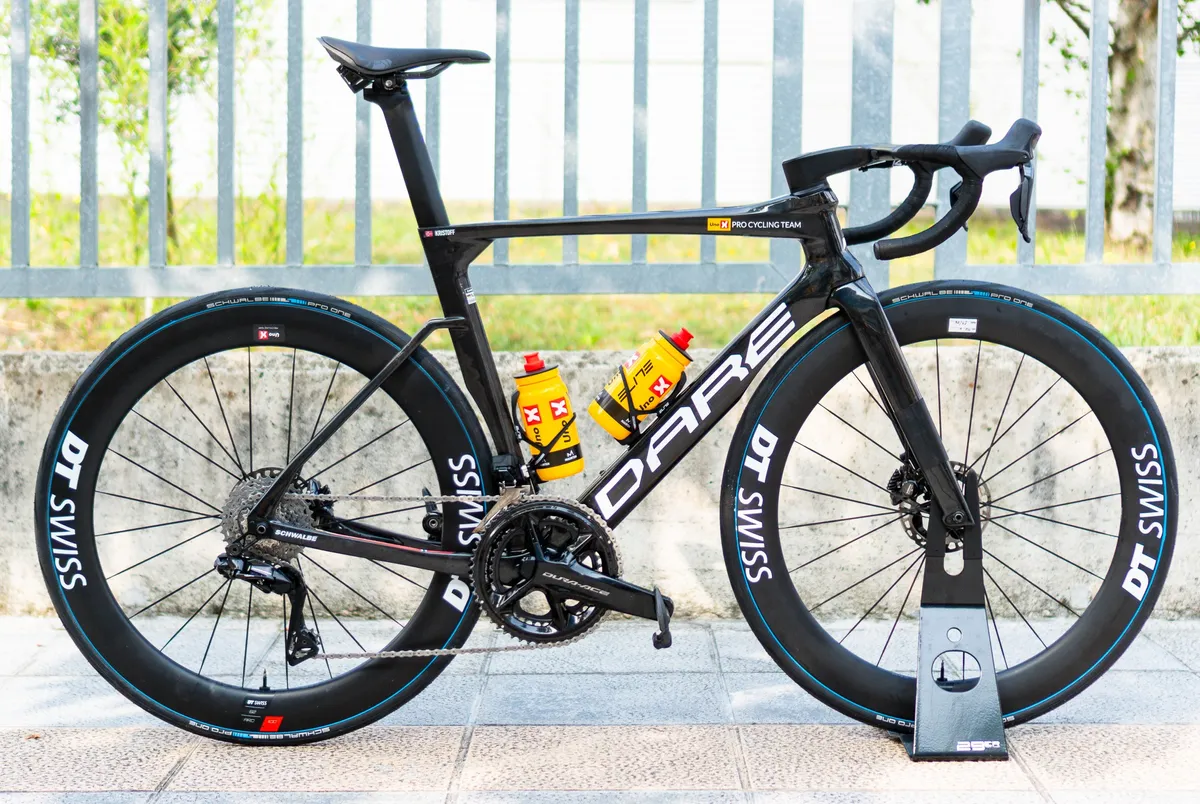
A four-time stage winner at the Tour de France, Alexander Kristoff now plies his trade as the sprinter for the Uno-X Pro Cycling Team. As such, he opts for Dare’s aero road bike, the VSRu.
Though not the most extreme aero bike in the peloton, it still features a full complement of truncated aerofoil tubes, a deep aero seatpost and Dare’s fully integrated AERO1v cockpit.
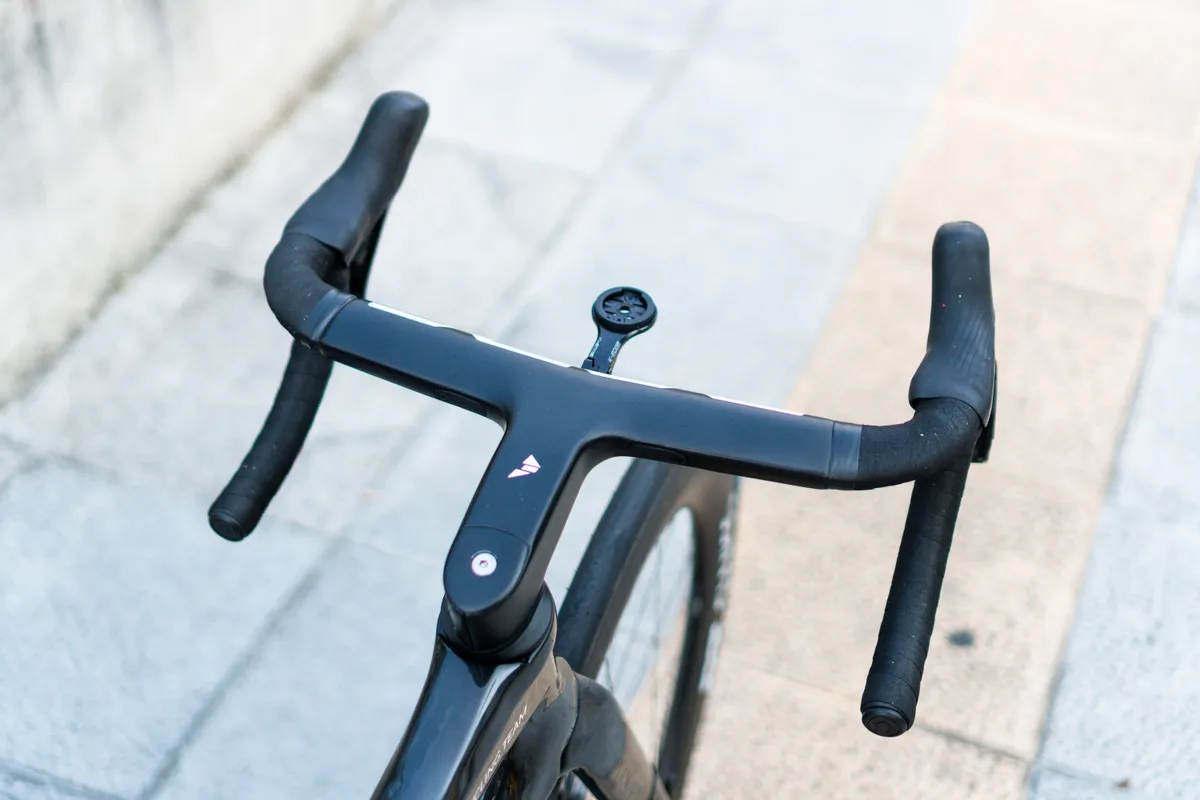
The AERO1v integrated handlebar features a narrow, flared handlebar paired with flattened stem.
According to our measurements, the handlebar is 38cm-wide paired with a 120mm stem.
Despite the hilly opening stages at this year’s Tour, Kristoff had a DT Swiss ARC 1100 62 wheelset, shod with 28c Schwalbe Pro One TLE tyres. As the name suggests, the DT Swiss wheels feature 62mm-deep rims.
Kristoff’s bike features a Shimano Dura-Ace Di2 R9200 groupset, complete with the latest Dura-Ace power meter, 54/40t chainrings and an 11-34t cassette out back.
It also had a waxed chain, which helps keep drivetrain friction to a minimum.
Kristoff uses Shimano Dura-Ace pedals and a Pro Stealth Curved Team saddle.
HIs bike is finished off with Elite Leggero Carbon bottle cages, as well as a chain catcher and out-front computer mount both made by K-Edge.
Kristoff rides a size medium frame (which is roughly equivalent to a 56cm from most brands), and the complete bike weighs 7.735kg.
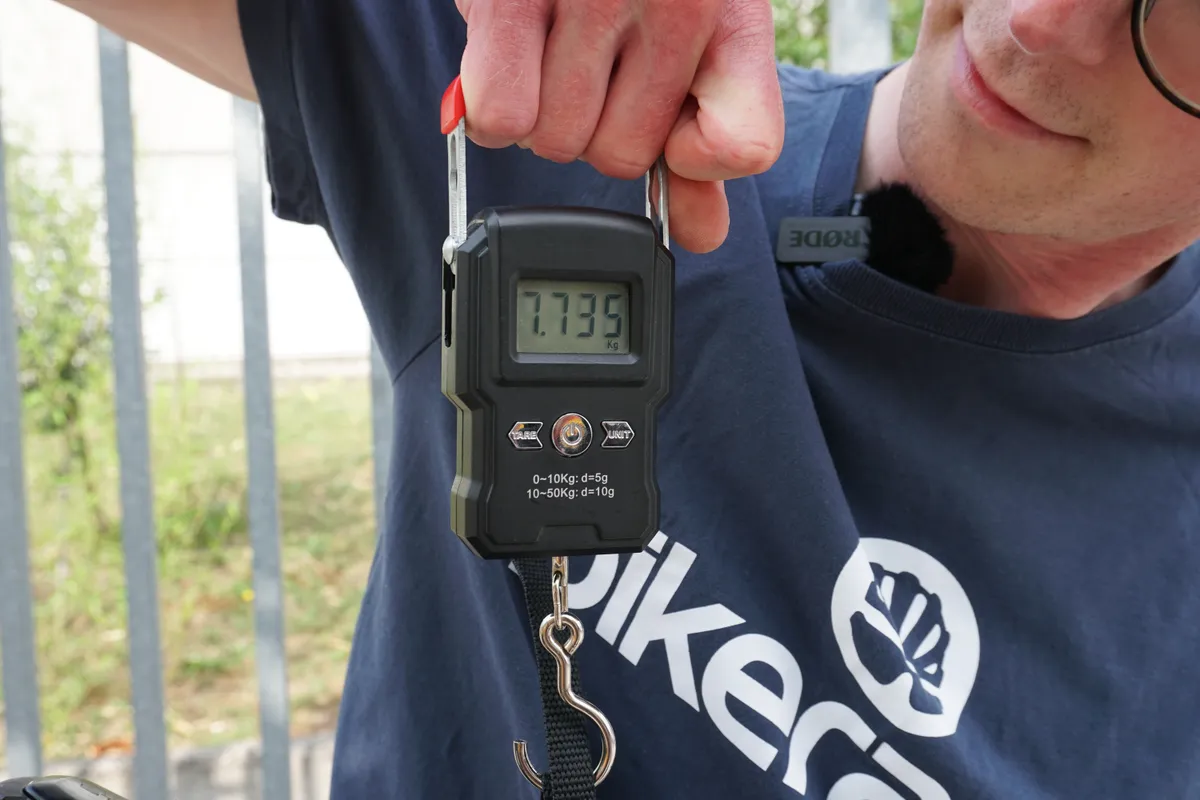
Simon Clarke’s Factor O2 VAM – 6.925kg
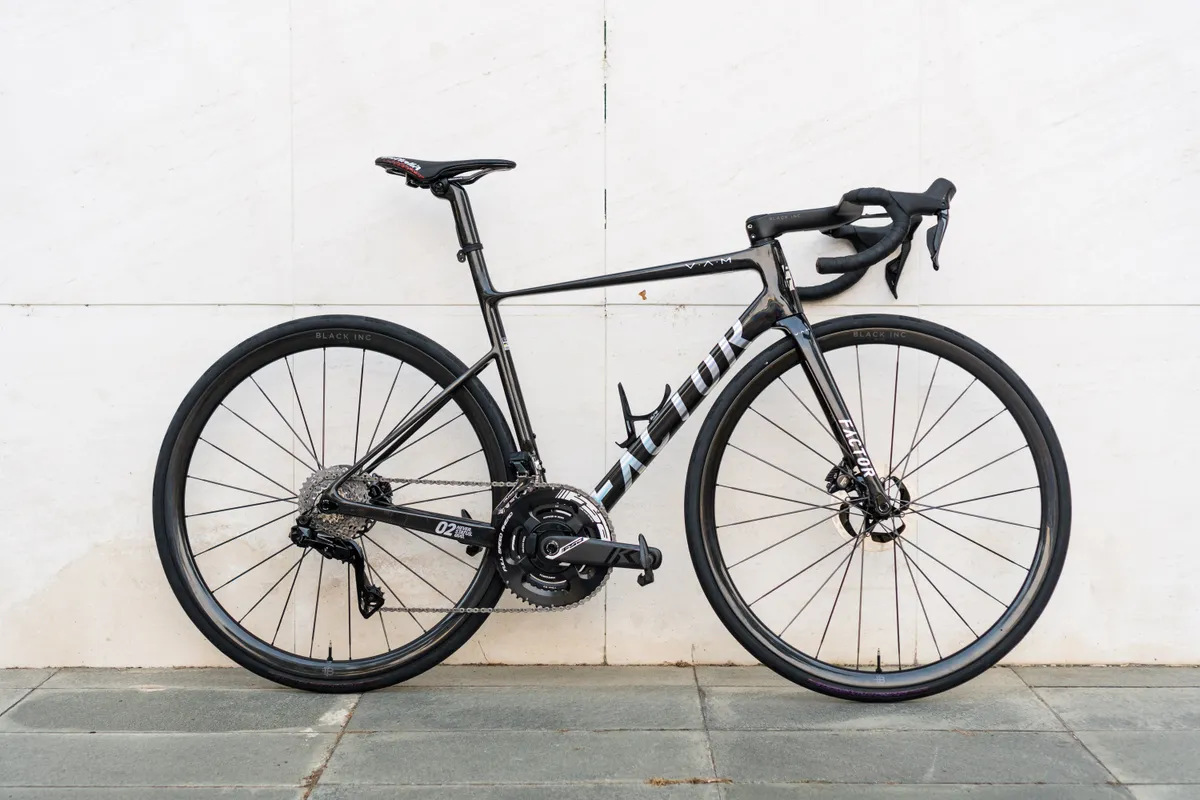
Simon Clarke’s new Factor 02 VAM was the lightest bike we weighed at this year’s Tour and the only one to sneak under 7kg.
According to Factor, the new 02 VAM frameset weighs just 730g in a size 54cm. Crucially, though, that figure includes the integrated seat mast.
Factor in the new hyper-light Black Inc 28//34 wheelset (claimed weight 1,146g) and it’s easy to see how this bike grazes the UCI weight limit at just 6.925kg.
Despite Clarke’s Israel–Premier Tech team being sponsored by Maxxis tyres, these were shod with non-sponsor-correct Continental GP5000 S TR tyres in a size 28c (with the logos hastily covered by black marker pen).
Despite its low weight, Factor claims the new 02 VAM sees 12-watt improvement at 48kph thanks to its updated aerodynamic shaping.
Similar to Carapaz’s bike, Clarke’s Factor is built up with Shimano Dura-Ace Di2 R9200 groupset and a Power2Max NG Road power meter, paired with FSA chainrings and carbon cranks.
Clarke was also using 54/40t chainrings and an 11-34t cassette.
His Black Inc integrated cockpit was more extreme, however, with an enormous 150mm-long stem paired to a narrow 36cm-wide handlebar.
As a truly dedicated weight weenie, Clarke uses a Selle Italia SLR Boost saddle with carbon rails, plus a single Elite Leggero Carbon bottle cage.
Say what you want, but there’s no denying dehydration is lighter (we jest – no doubt Clarke drinks just as much as every other rider, he clearly just doesn’t want to carry two bottles).
Clarke uses Dura-Ace pedals and has an integrated out-front mount for his Hammerhead Karoo 2 bike computer mounted to his bars.
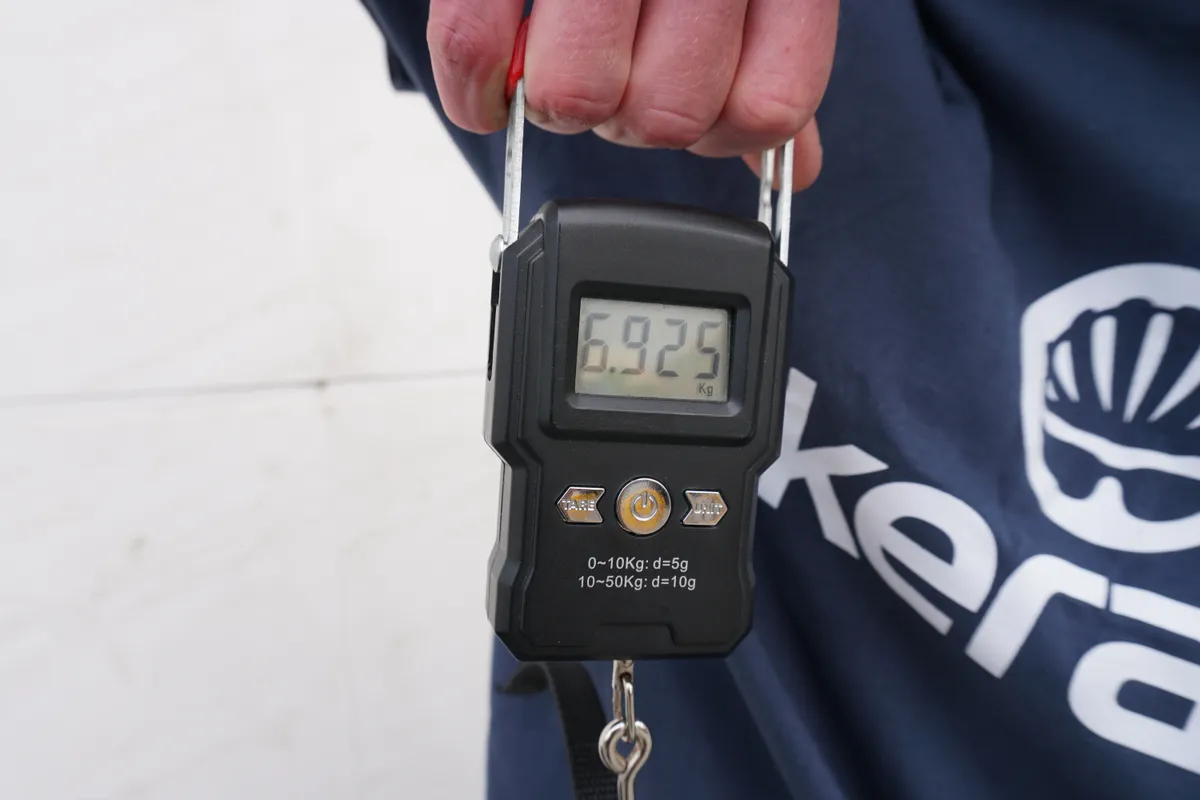
Alexis Renard’s Look 795 Blade RS – 7.535kg
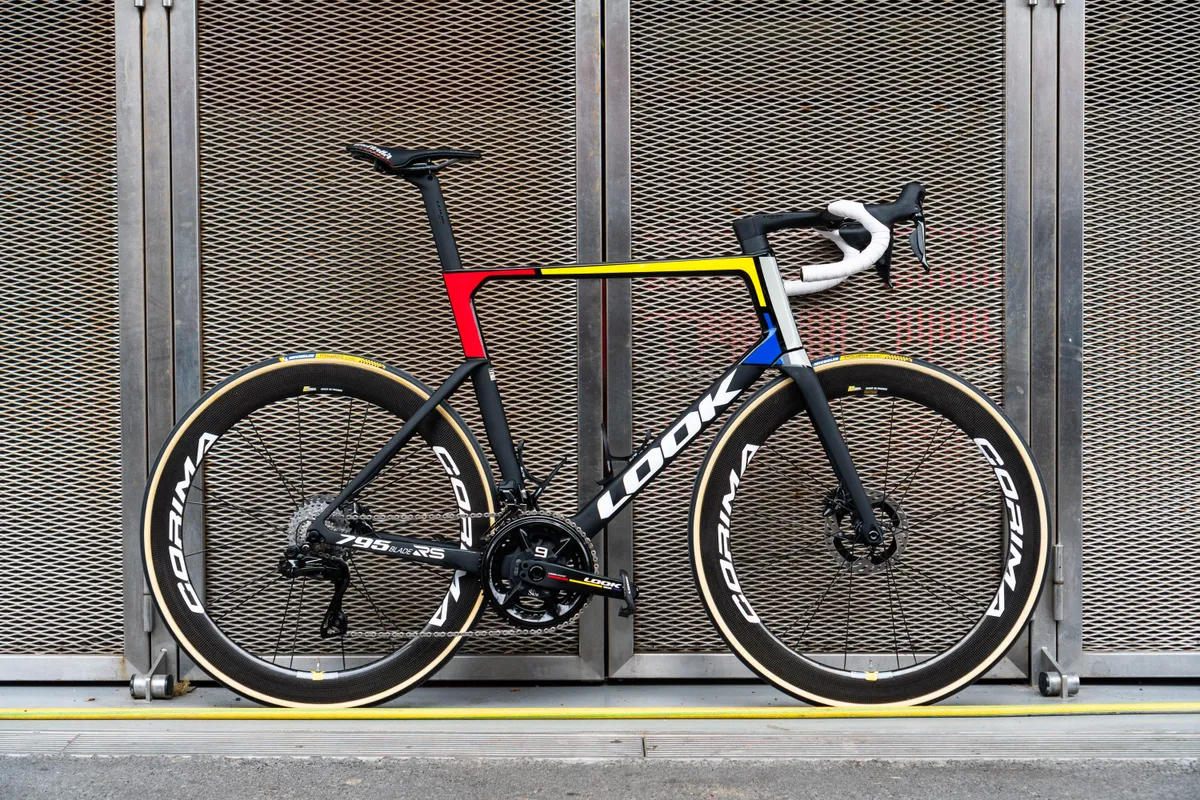
Having not won a Tour stage for 15 years, Cofidis have turned things around in spectacular fashion this year, taking two victories from solo breakaways.
How much of that resurgence in form can be attributed to the team’s shiny new bike? Probably not much, but the new Look 795 Blade RS certainly looks built for the demands of this race.
This particular bike belongs to French all-rounder Alexis Renard, and despite its XL frame and deep-section rims it weighs an impressively svelte 7.53kg.
The 795 Blade RS features a classic mix of lightweight, truncated aerofoil tubes, balancing key attributes such as low weight, low drag and high stiffness.
Renard’s bike has a Shimano Dura-Ace Di2 R9200 groupset, with 54/40t chainrings and an 11-30t cassette.
His power meter and cranks deviate, however, with an SRM Origin PM9 power meter making a now rare appearance, along with the length-adjustable Look carbon cranks.
Corima sponsors Cofidis, and Renard’s bike had Corima WS Black DX 60 tubular wheels with narrow, 25c Michelin Power Cup tubular tyres.
It’s no surprise to see the bike is equipped with the 795 Blade RSs proprietary integrated handlebar, and Renard opts for a lengthy 140mm stem and a relatively narrow 38cm handlebar.
The bike is finished with a Selle Italia SLR Boost saddle (also with carbon rails), Elite Leggero Carbon bottle cages and Look Keo 2 Max Carbon pedals.
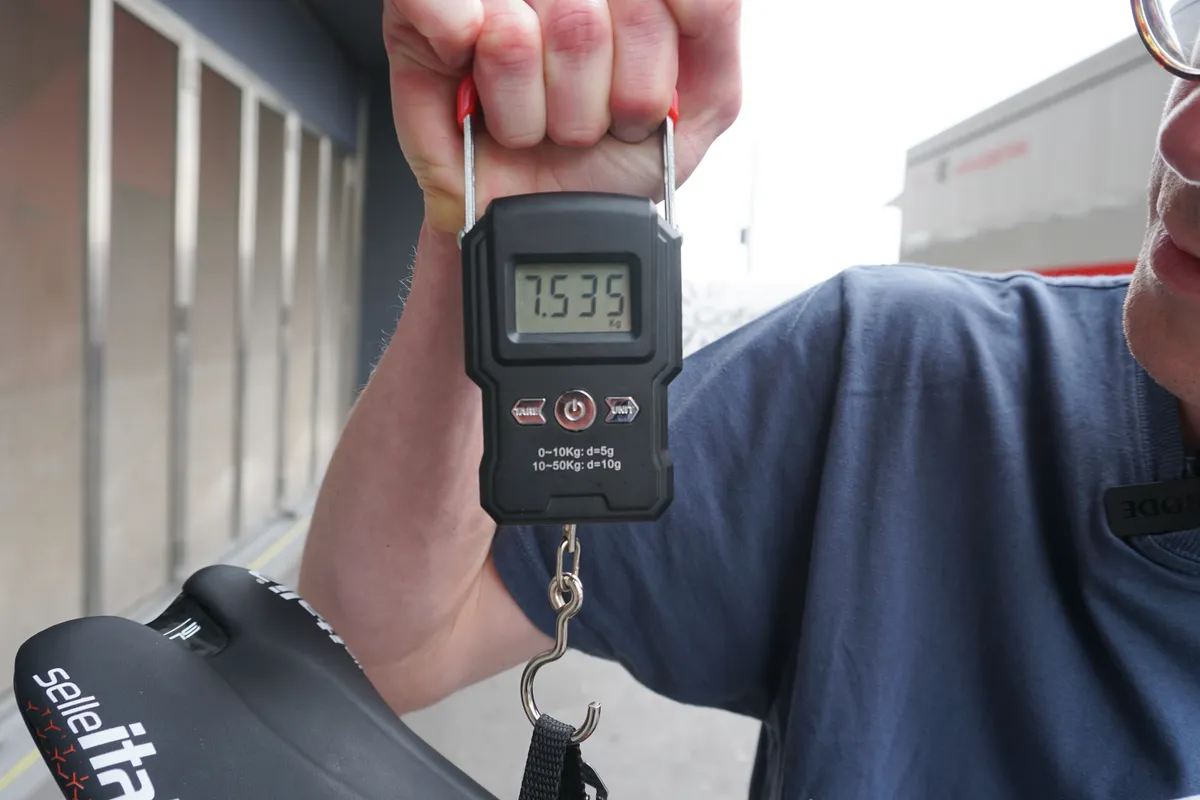
Egan Bernal’s Pinarello Dogma F – 7.385kg
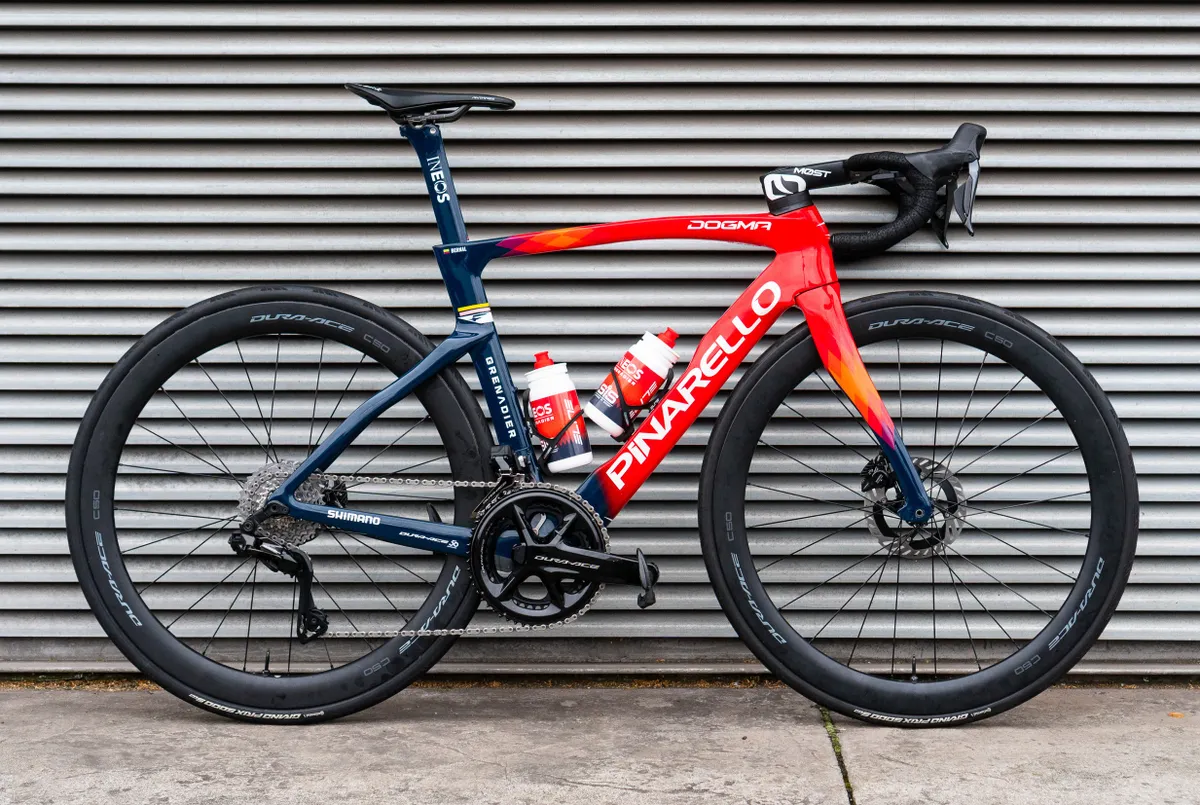
Back at the Tour de France for the first time since 2020, the former yellow jersey winner may not be in the fight for the overall at this year’s race, but it’s great to see him racing at the highest level again.
In 2019, Bernal rode into Paris aboard a custom-painted, rim brake-equipped, Pinarello Dogma F12, with 11-speed gears and tubular wheels and tyres.
His 2023 Pinarello Dogma F shares a similar silhouette, but sees a number of key updates.
As well as moving to road disc brakes, the Bernal’s bike also features tubeless wheels and tyres, as well as some 3D-printed small parts to help save weight.
It has the latest 12-speed Shimano Dura-Ace Di2 R9200 groupset, with Bernal choosing 54/40t chainrings, an 11-34t cassette and matching Dura-Ace C50 wheels.
Bernal opts for Continental’s GP5000 S TR tyres, with a narrower 25c tyre up front (27mm measured width) and a wider, 28c at the rear (29.8mm measured width). This is likely intended to help optimise the aerodynamic performance of the front wheel.
According to our tape measure, Bernal’s MOST Talon integrated cockpit features a 38cm wide handlebar (centre-to-centre at the brake hoods) and a 130mm stem.
Like Carapaz, Bernal’s bike also featured Di2 sprint shifters creatively attached to the shifter hoods – this time placed underneath the hood body, just behind the brake lever.
The build is finished off with a Fizik Vento Antares R1 saddle, Elite Leggero Carbon bottle cages, and a K-Edge chain catcher which doubles as a cadence sensor magnet for his Dura-Ace power meter.
All in, it weighs 7.385kg.
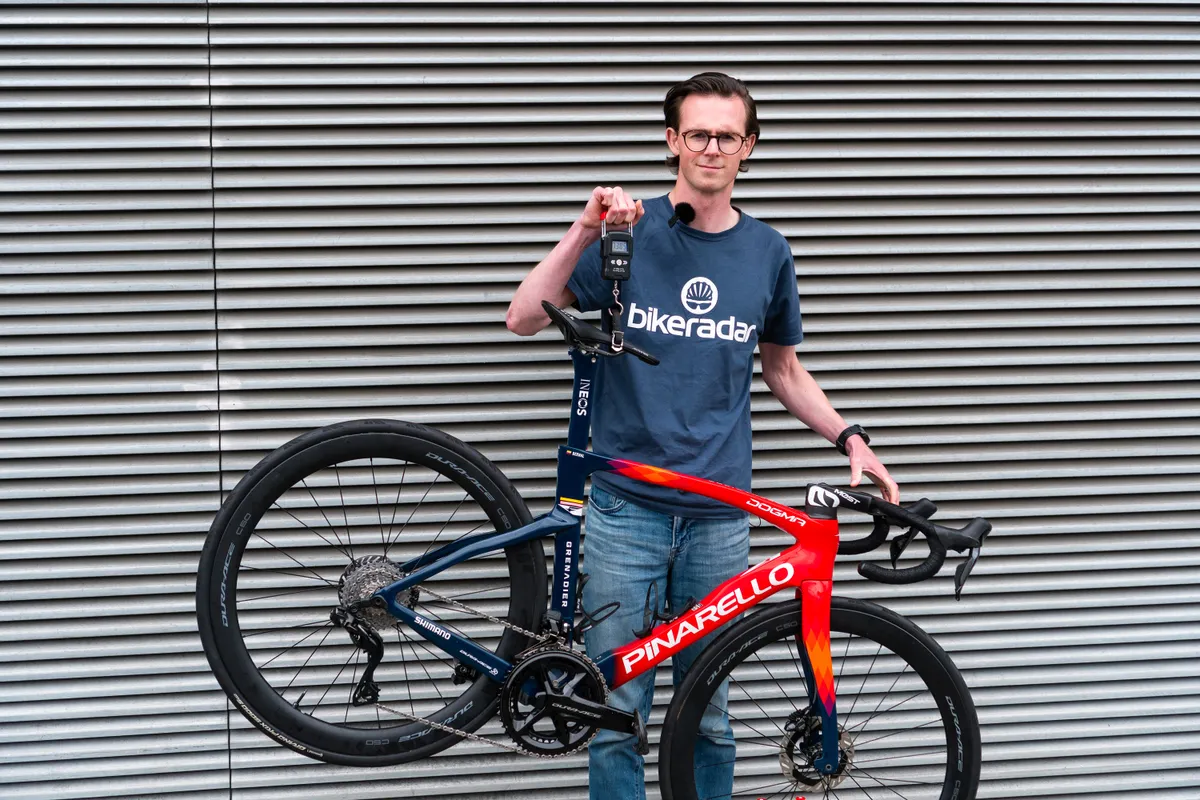
Ben O'Connor’s Prototype BMC – 7.345kg
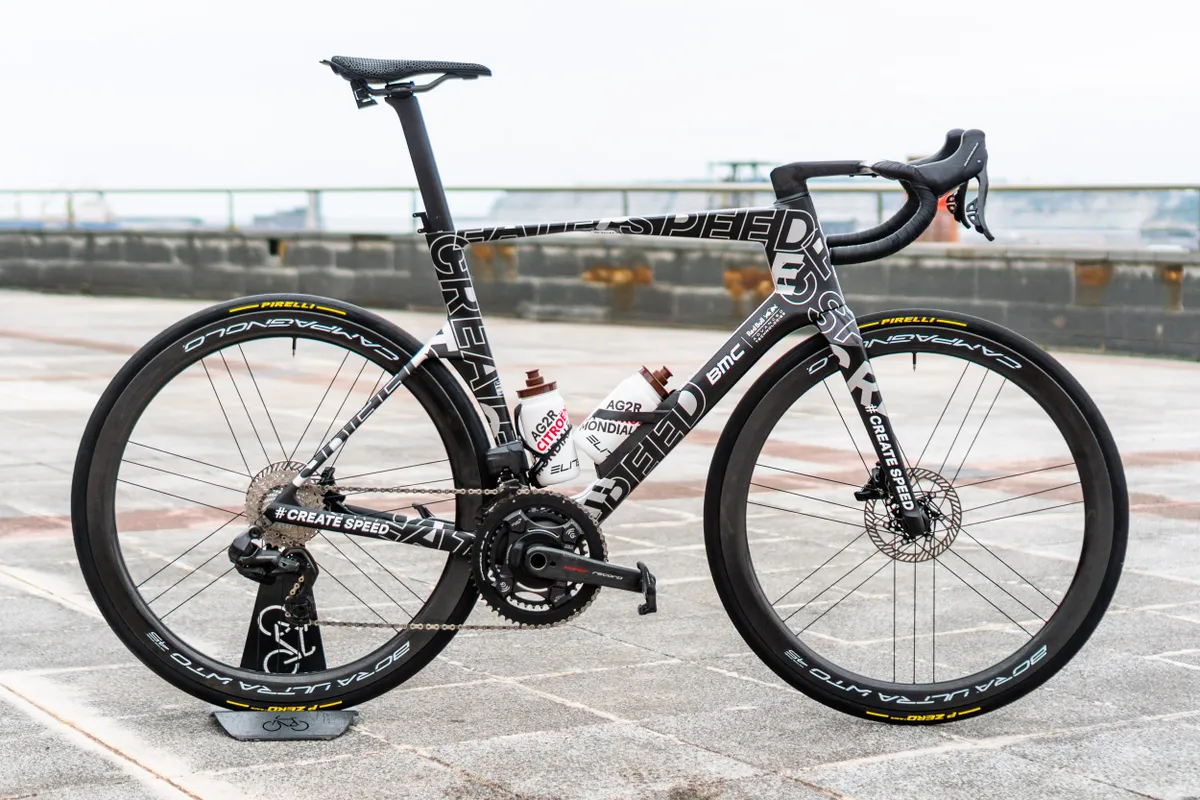
Belonging to AG2R Citroën’s Australian GC hopeful, Ben O’Connor, the as-yet-unnamed BMC aero bike has been developed in partnership with Red Bull Advanced Technologies (a development arm of the Red Bull Formula One team).
While BMC is yet to confirm exactly what this is, its aggressive aerodynamic design suggests it could be a replacement for the BMC Timemachine.
AG2R Citroën’s bikes mark the only appearance at this year's Tour for Campagnolo and its new Super Record Wireless groupset.
O’Connor pairs the new drivetrain components with a previous generation Super Record crankset, featuring larger 54/39t chainrings mounted to a Power2Max NG Road Campagnolo power meter.
This is likely because the new Super Record Wireless chainrings are only offered in a maximum size combination of 50/34t – which O’Connor likely feels is too small even with a 10t tooth sprocket at the rear.
Keeping things in-house, O’Connor is running Campagnolo Bora Ultra WTO 45 wheels paired with Pirelli P Zero clincher tyres and (we think) ultralight Pirelli P Zero SmarTube TPU inner tubes.
O’Connor’s 58cm frame is complemented by the aggressive integrated handlebar from the BMC Kaius gravel race bike, with a 140mm stem length and a 36cm handlebar.
The frame features one integrated bottle cage on the downtube, plus a standard Elite Leggero Carbon cage on the seat tube.
A Fizik Antares Versus Evo R1 Adaptive, 3D-printed saddle and Look Keo Blade Carbon Ceramic pedals completes the build.
Despite its large size and heavy aerodynamic optimisation, O’Connor’s prototype BMC weighed a very impressive 7.345kg, according to our scales.
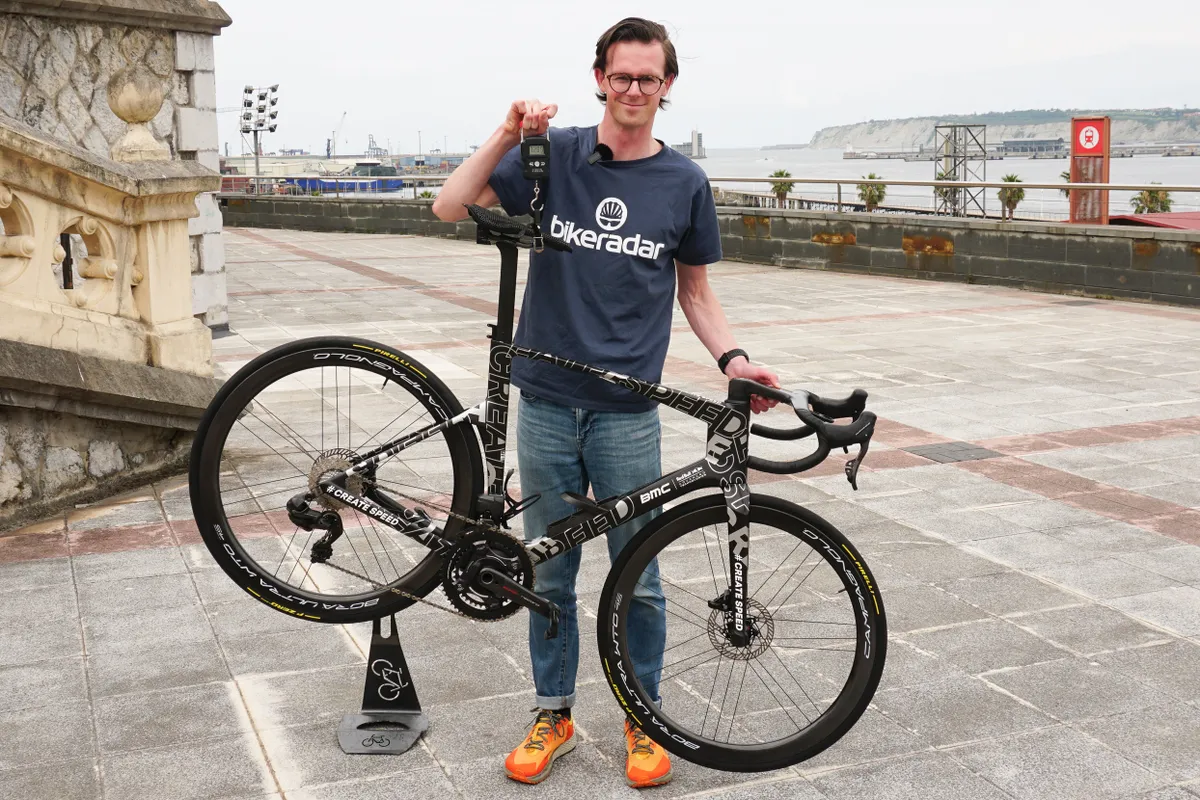
Caleb Ewan’s Prototype Ridley – 7.500kg
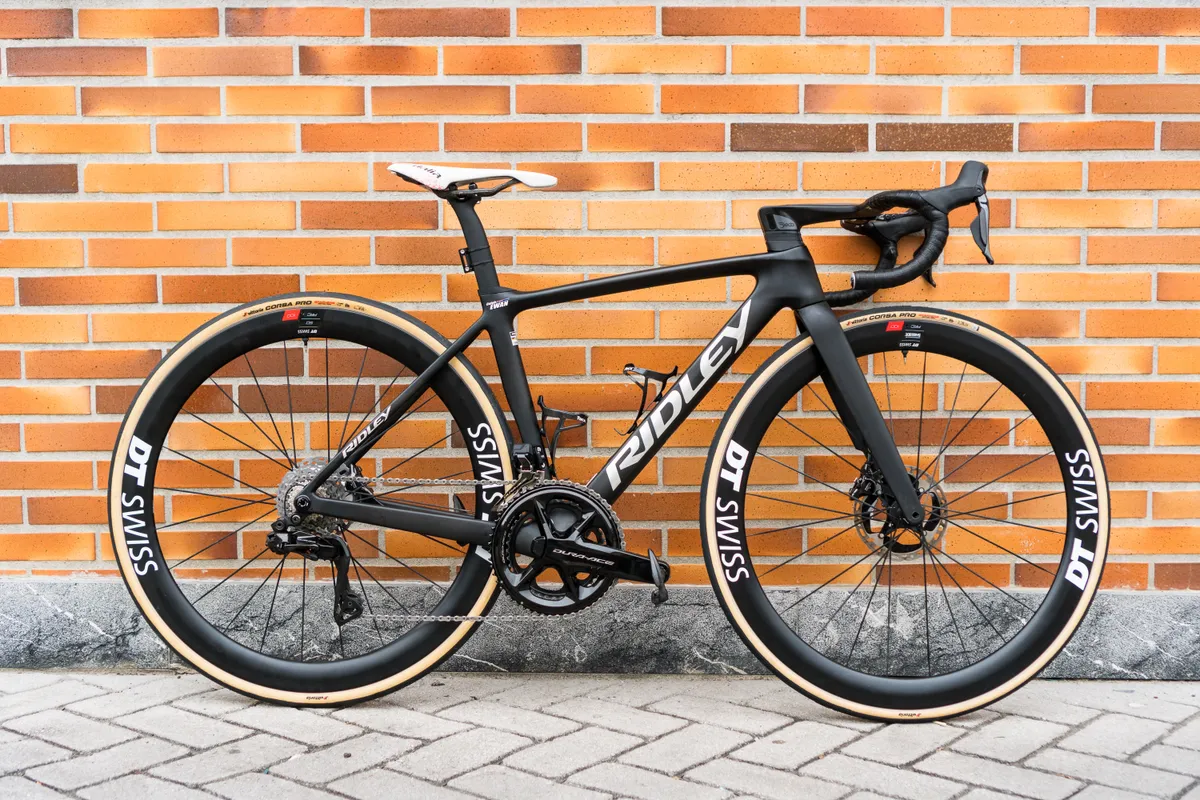
Another prototype bike, this time a new lightweight-aero all-rounder from Ridley.
This particular bike (which is also yet to be officially named or announced) belongs to Lotto-Dstny’s sprinter Caleb Ewan, who unfortunately abandoned the race on stage 13.
As with other similar bikes, it features an array of lightweight, truncated aerofoil tubes, which are likely intended to be efficient at cutting through the wind without adding too much weight.
Despite its diminutive size, though, Ewan’s bike was actually surprisingly heavy, weighing 7.5kg on our scales.
Like many others, Ewan’s bike was built up with a Shimano Dura-Ace Di2 R9200 groupset, with a matching Dura-Ace crankset paired to 54/40t chainrings and an 11-30t cassette (stop me if you’ve heard this one before).
Unusually for a rider of his stature, (Ewan is reportedly 1.67m tall) Ewan’s Deda integrated handlebar features a long 140mm stem paired to a narrow 36cm-wide handlebar.
Similar to Pogačar, Ewan also likes Di2 sprint shifters positioned on the drops of his handlebar just below the brake hoods.
Ewan opts for DT Swiss ARC 1100 50 wheels paired with Vittoria Corsa Pro TLR tyres, with a narrower 26c tyre up front (26.5mm measured width) and a 28c tyre at the rear.
He uses a white Selle Italia SLR Team Edition saddle with carbon rails, Tacx Deva bottle cages and Shimano Dura-Ace pedals.
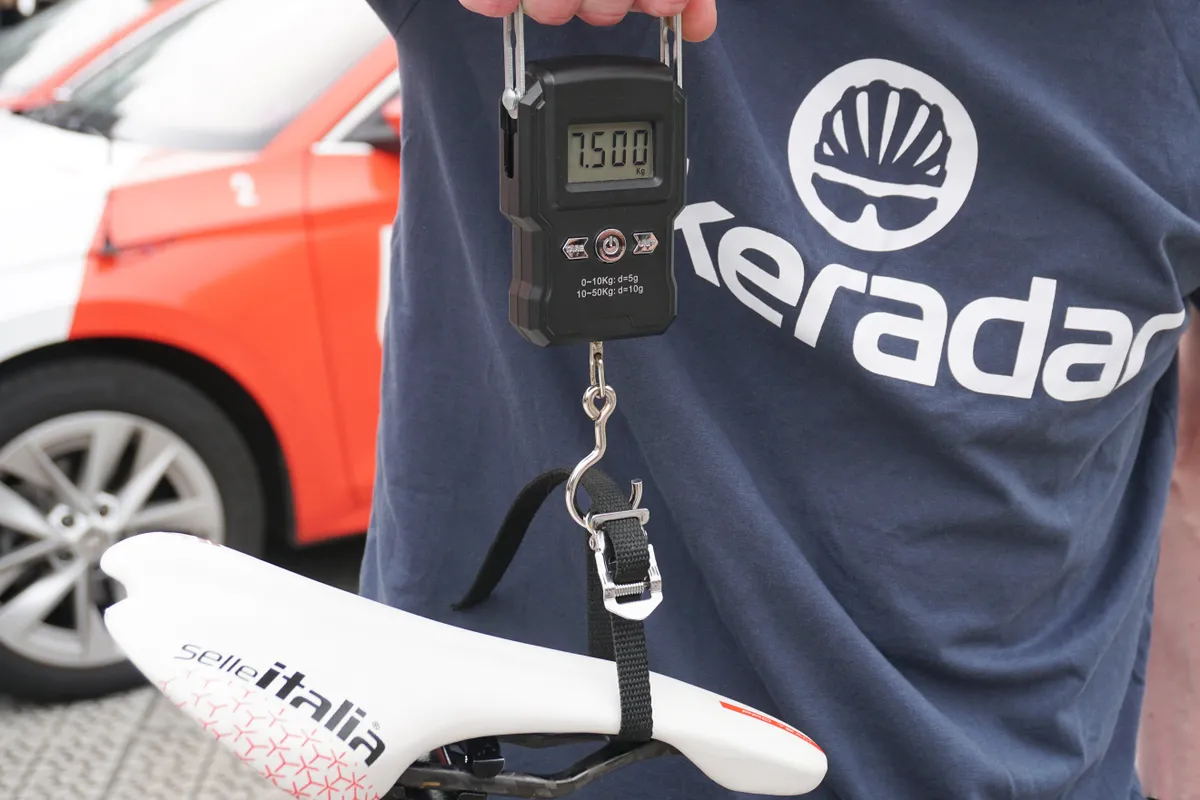
Mark Cavendish’s Wilier Filante SLR – 7.760kg
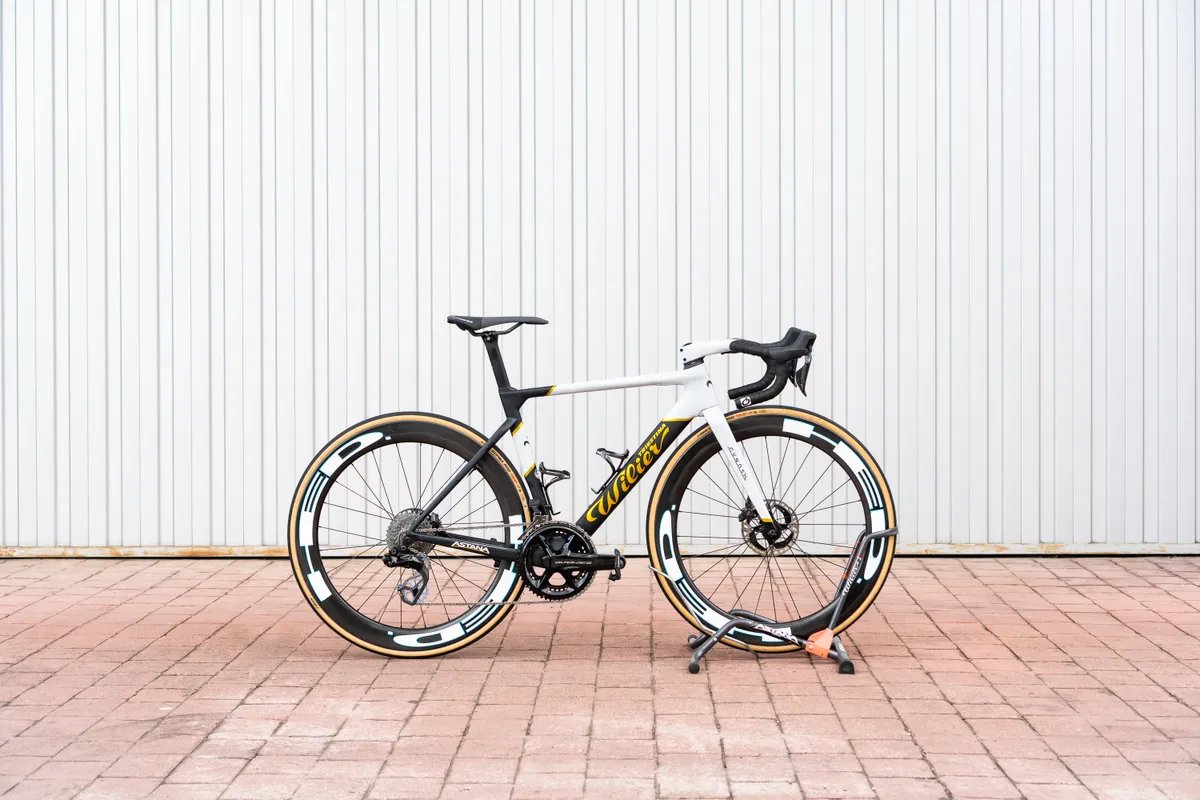
Presented to Cavendish before the Tour by Astana Qazaqstan’s bike sponsor, Wilier, this was/is supposed to be the last Tour de France bike of the Manx Missile’s glittering career.
Though he crashed out with a fractured collarbone on stage eight, we got hands-on with Cavendish’s custom Wilier Filante SLR at the Grand Départ in Bilbao.
The FIlante SLR is WIlier’s all-round aero bike, with Cavendish’s frame getting a full custom, white and grey marble-effect paint job, paired with black and gold accents.
This custom paint even extends to his Wilier integrated handlebar, which features classic bend drops.
Like SRM power meters, these were once ubiquitous in the pro peloton but are a rare sight nowadays.
Cavendish uses a 130mm stem paired with a relatively wide (by the standards of the modern pro peloton) 40cm-wide handlebar.
It has a Shimano Dura-Ace Di2 R9200 groupset, with 54/40t chainrings paired to a Dura-Ace power meter and an 11-34t cassette.
Astana team bikes are upgraded with SLF Motion Speed oversized pulley wheel systems, to reduce drivetrain friction.
Cavendish’s bike was equipped with a single Di2 sprint shifter on the right drop, just behind the brake lever, allowing him to shift down the cassette mid-sprint.
Astana are using both Corima and HED wheels this season, with Cavendish opting for the aerodynamically-optimised HED Vanquish RC6 Pro wheelset, paired with 28c Vittoria Corsa Pro TLR tyres (27.4mm measured width).
A Prologo Zero II saddle, Look Keo 2 Max Carbon pedals, a set of Tacx Ciro bottle cages and a K-Edge out-front computer mount complete the build.
Similar to Ewan’s bike, Cavendish’s custom Wilier Filante SLR (size small) was fairly weighty at 7.76kg.
That said, this likely wouldn’t have been particularly concerning for a sprinter who was only targeting the flatter stages of this year’s race.
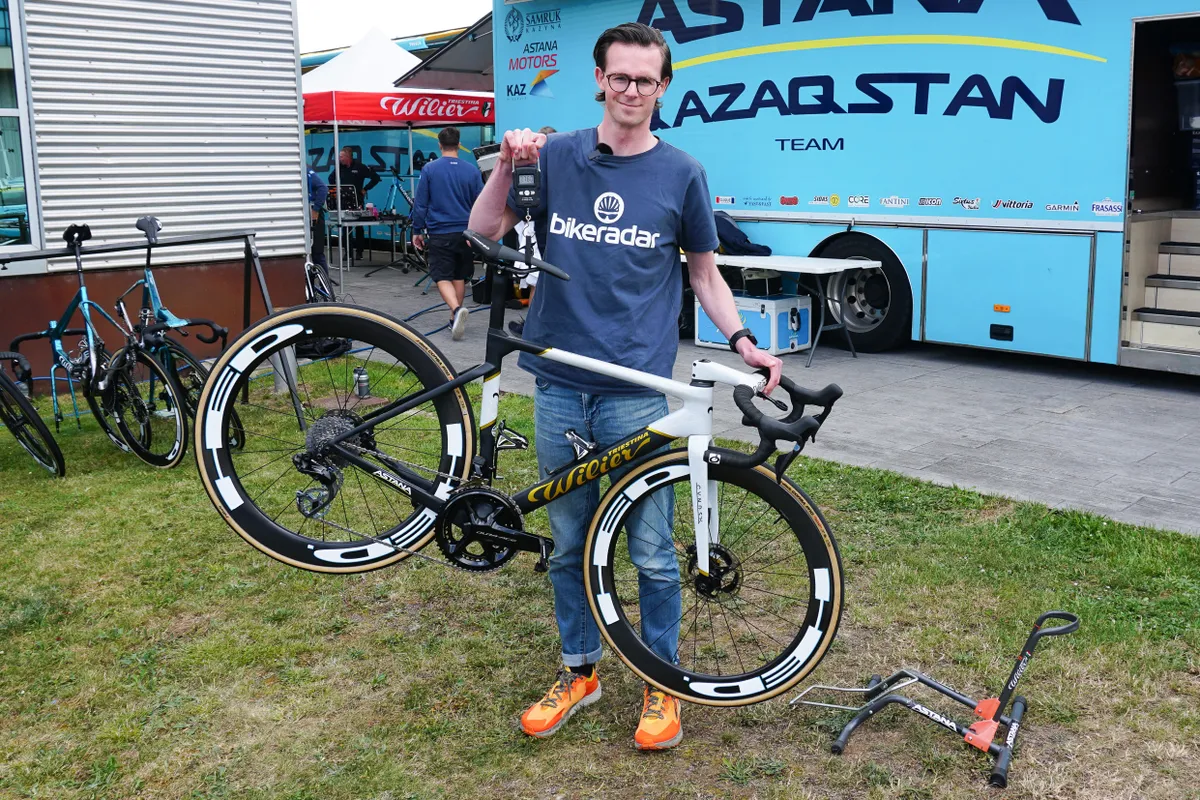
How much does the average Tour de France bike weigh in 2023?
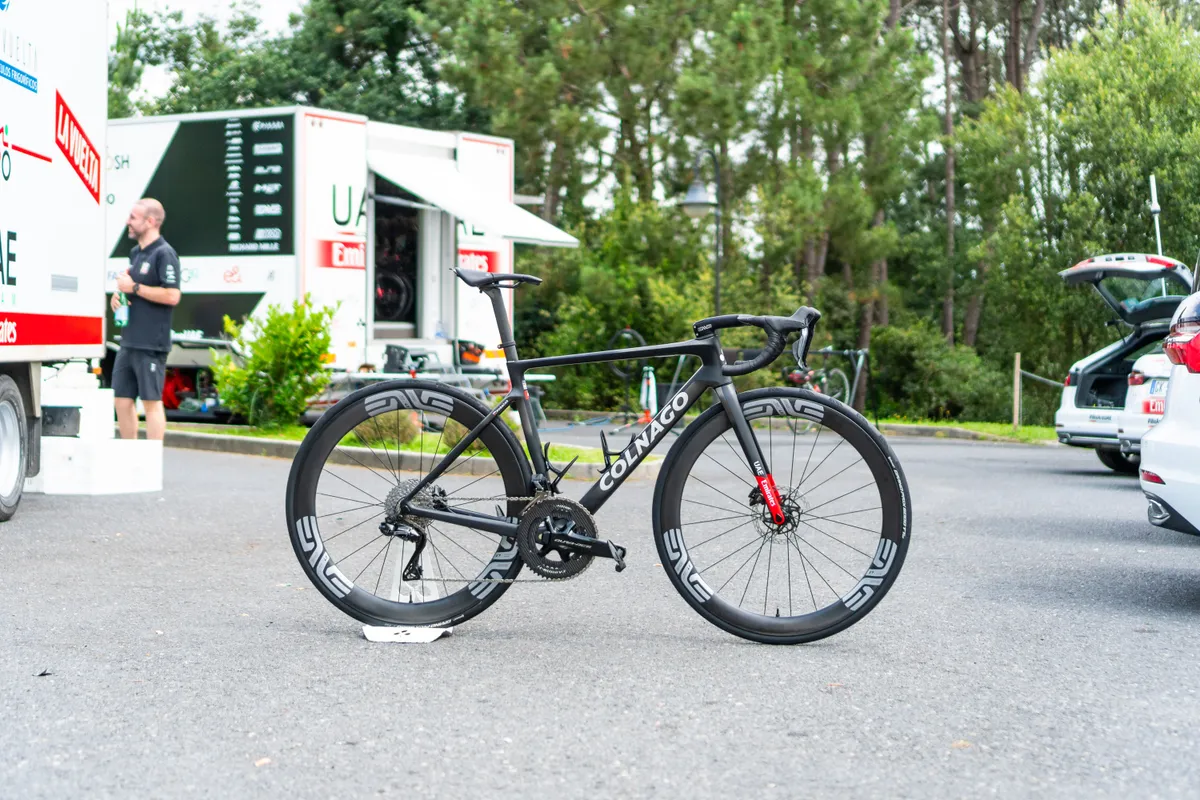
Based on the bikes we saw, the average Tour de France bike in 2023 weighs 7.451kg.
Of course, this is just a small sample size, but given many of the bikes belong to team leaders – who we can assume are given access to the best kit each team has available – it could be indicative of a wider trend.
Certainly, compared to last year’s race – where the average weight of the six road bikes we inspected was 7.92kg – the average weight of a Tour de France road bike in 2023 appears to have dropped by more than 450g.
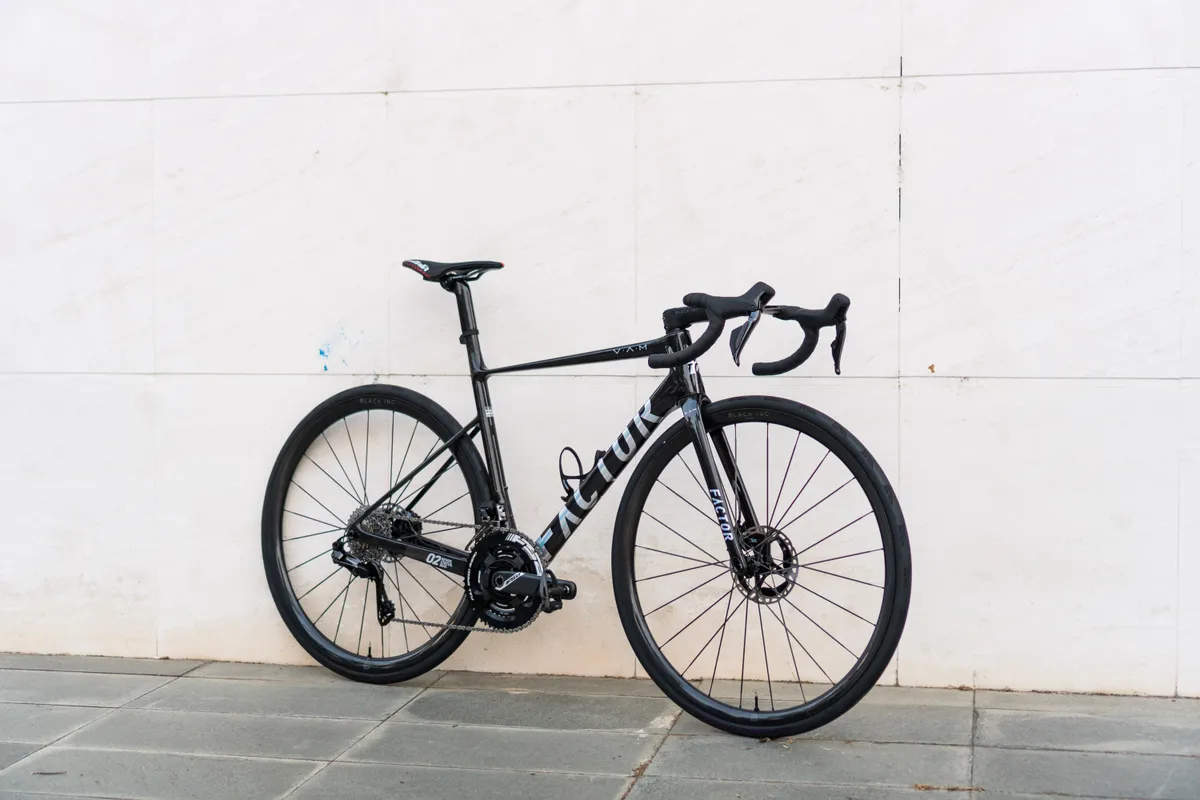
While this can partly be attributed to the launch of new lightweight frames and wheelsets, we think this is mainly due to riders and teams making different equipment choices to suit the differing parcours of the opening stages.
Had the opening stages of this year’s race featured proper mountains, then we’d have likely seen even lighter bikes on average.
And given the 2024 Tour de France opens with a stage (from Florence to Rimini, in Italy) featuring seven categorised climbs and 3,800m of elevation gain, perhaps we’ll see just that in a year’s time.
